EXTREMELY RARE! WWII SECRET 1942 Solomon Islands Headquarters of the Commander in Chief Military Intelligence Report
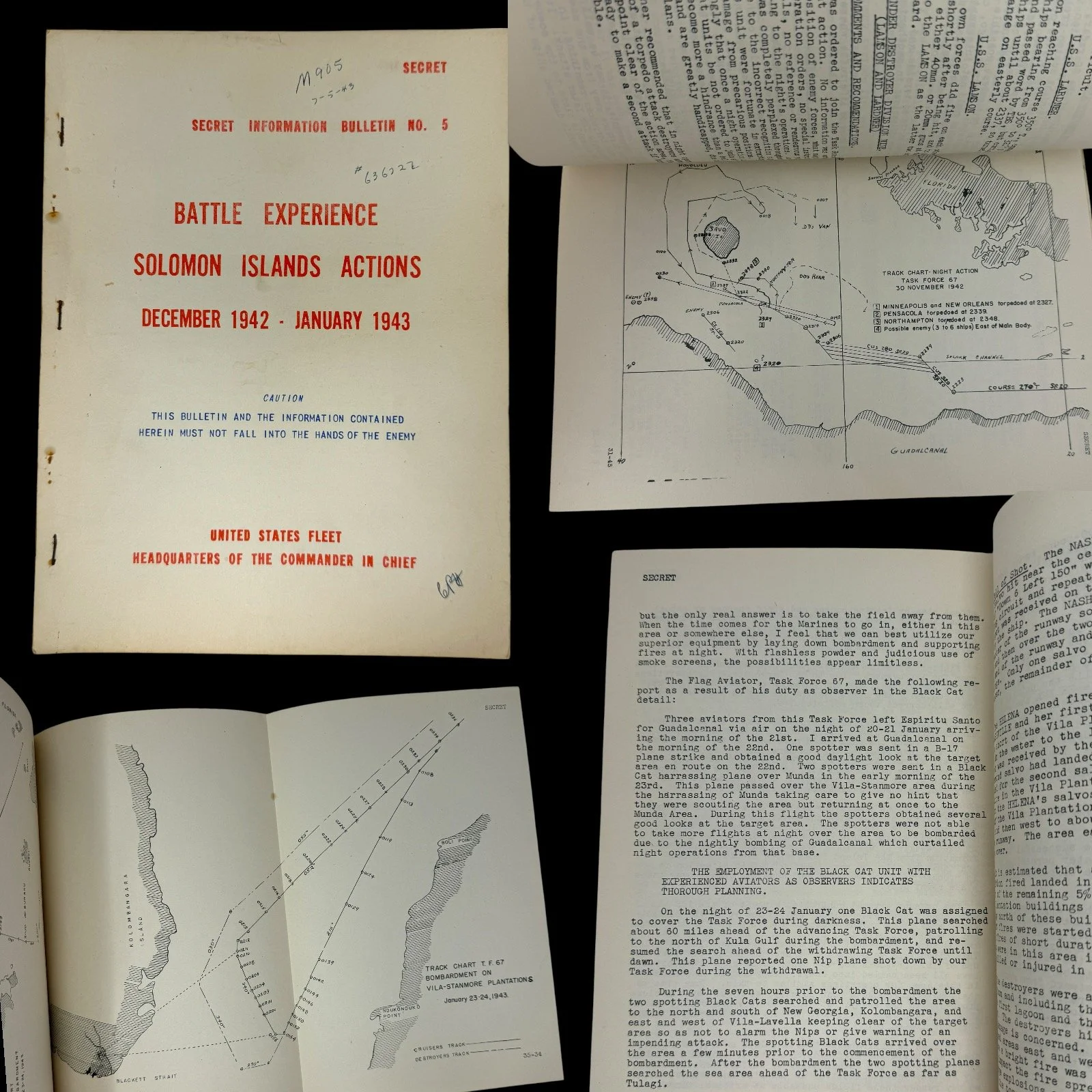
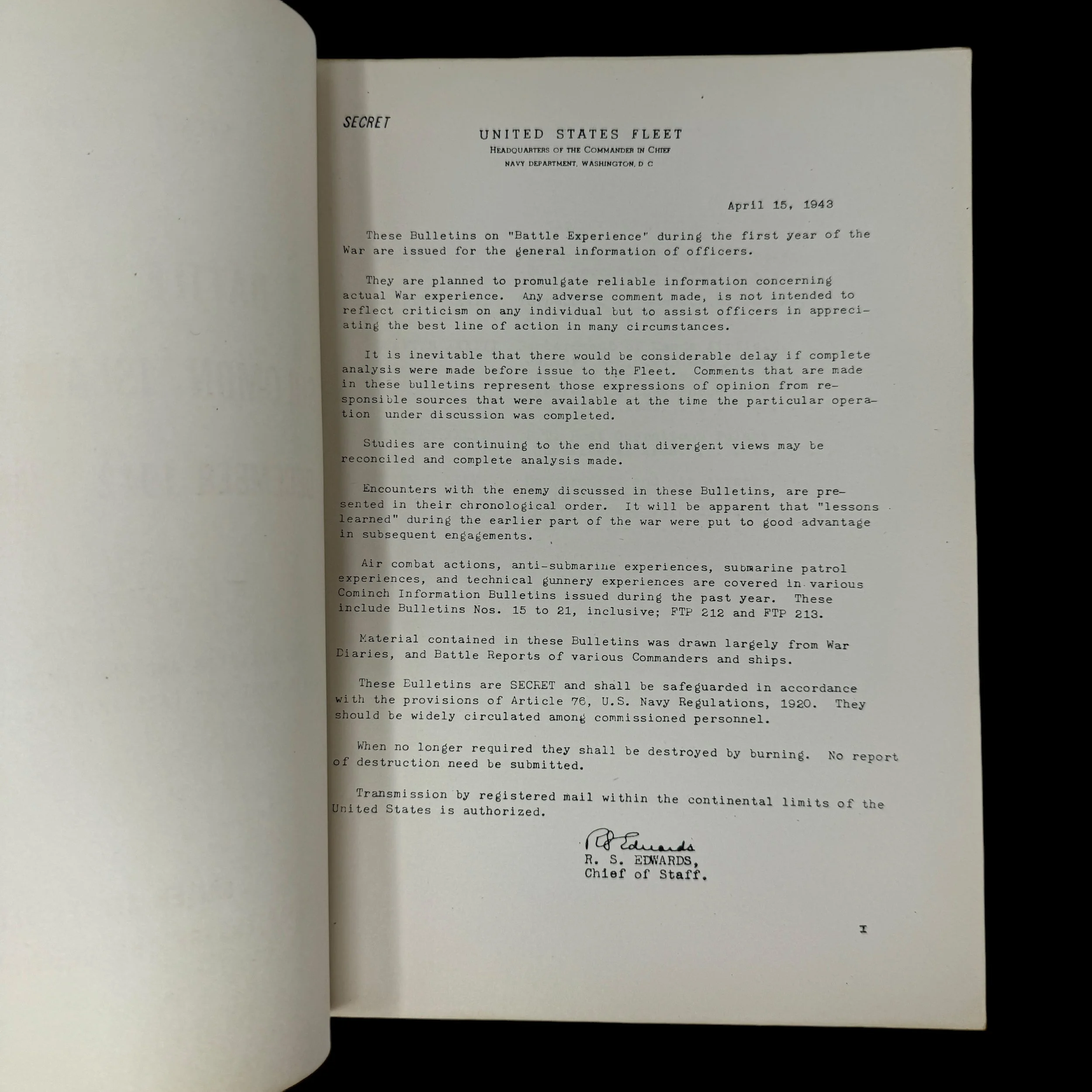
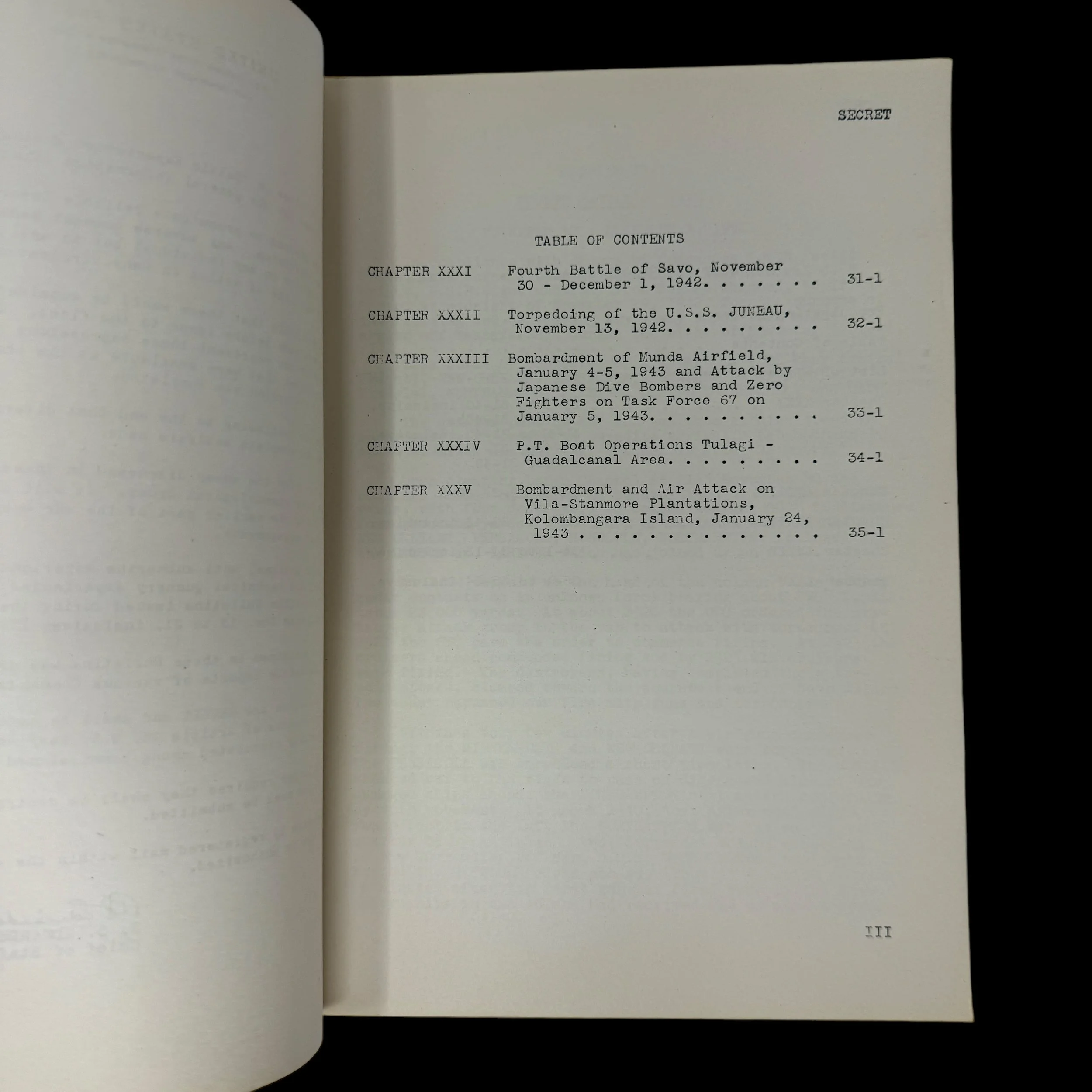


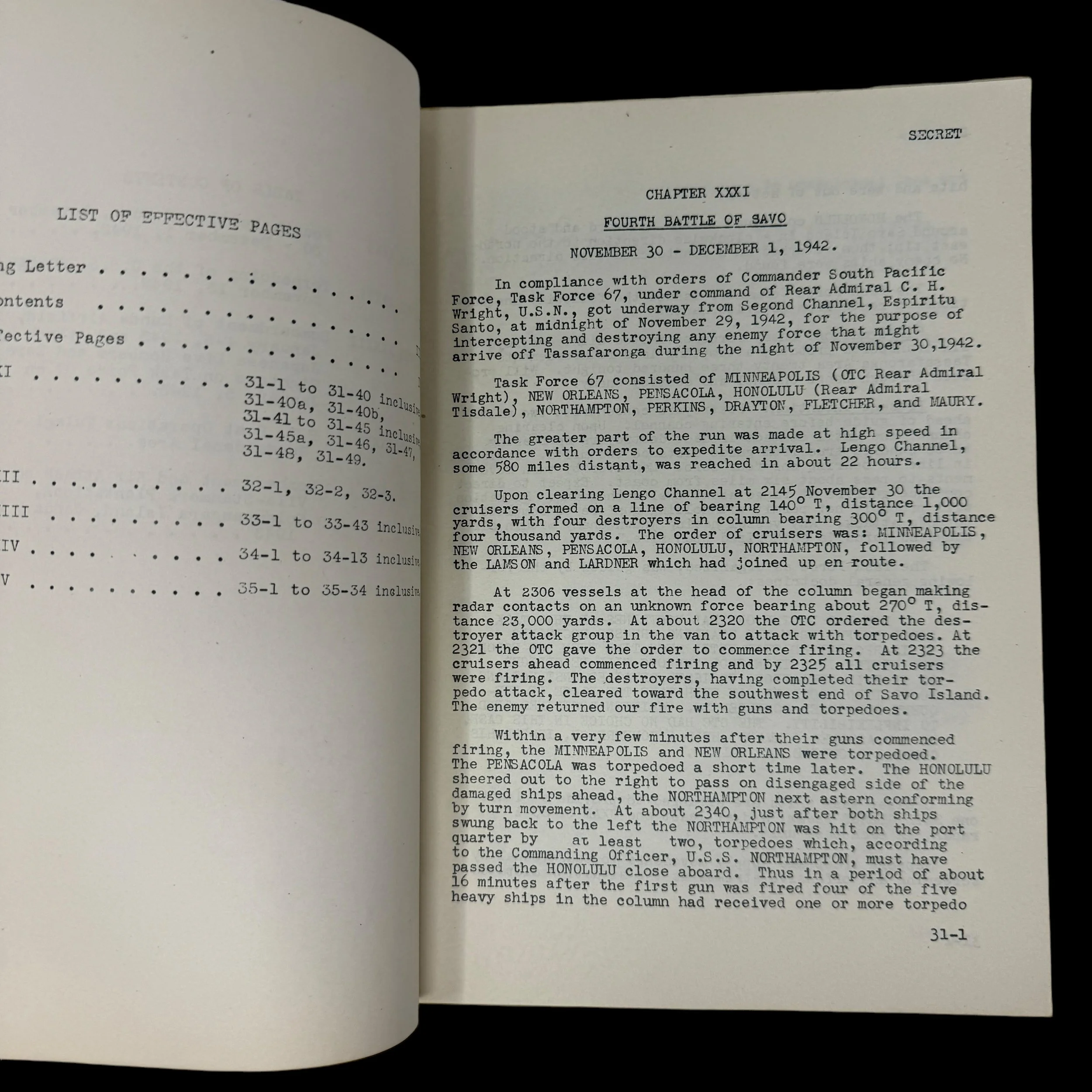
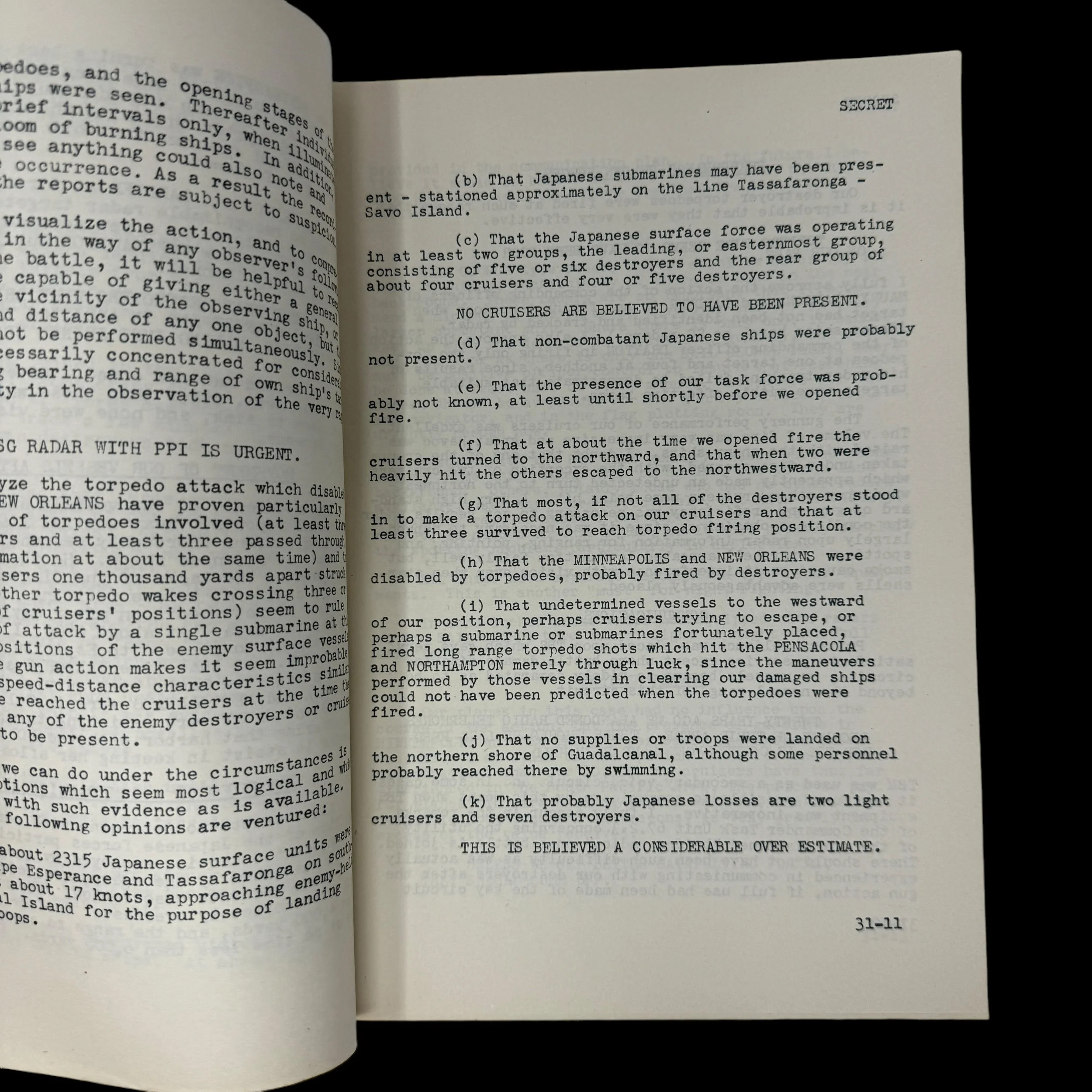

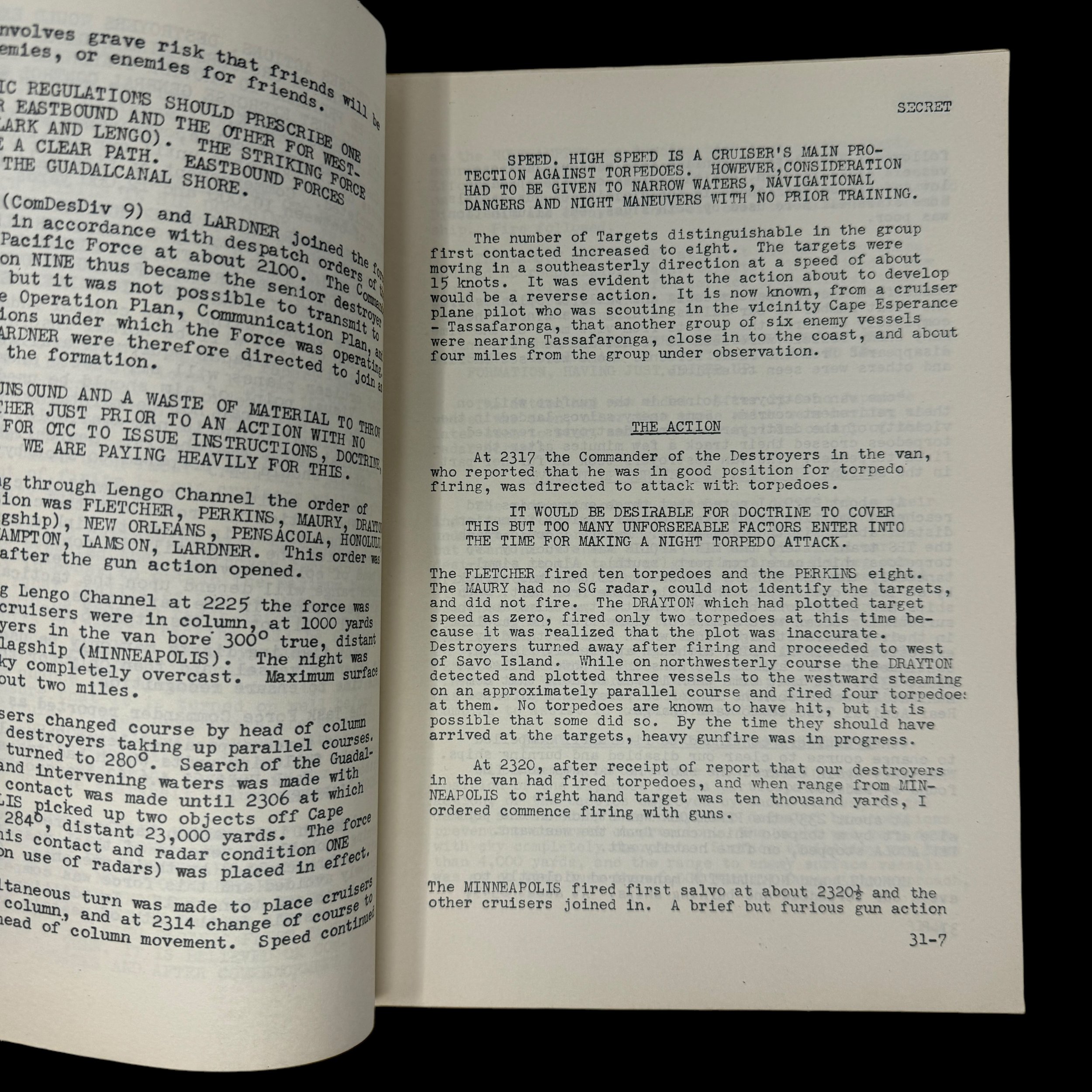
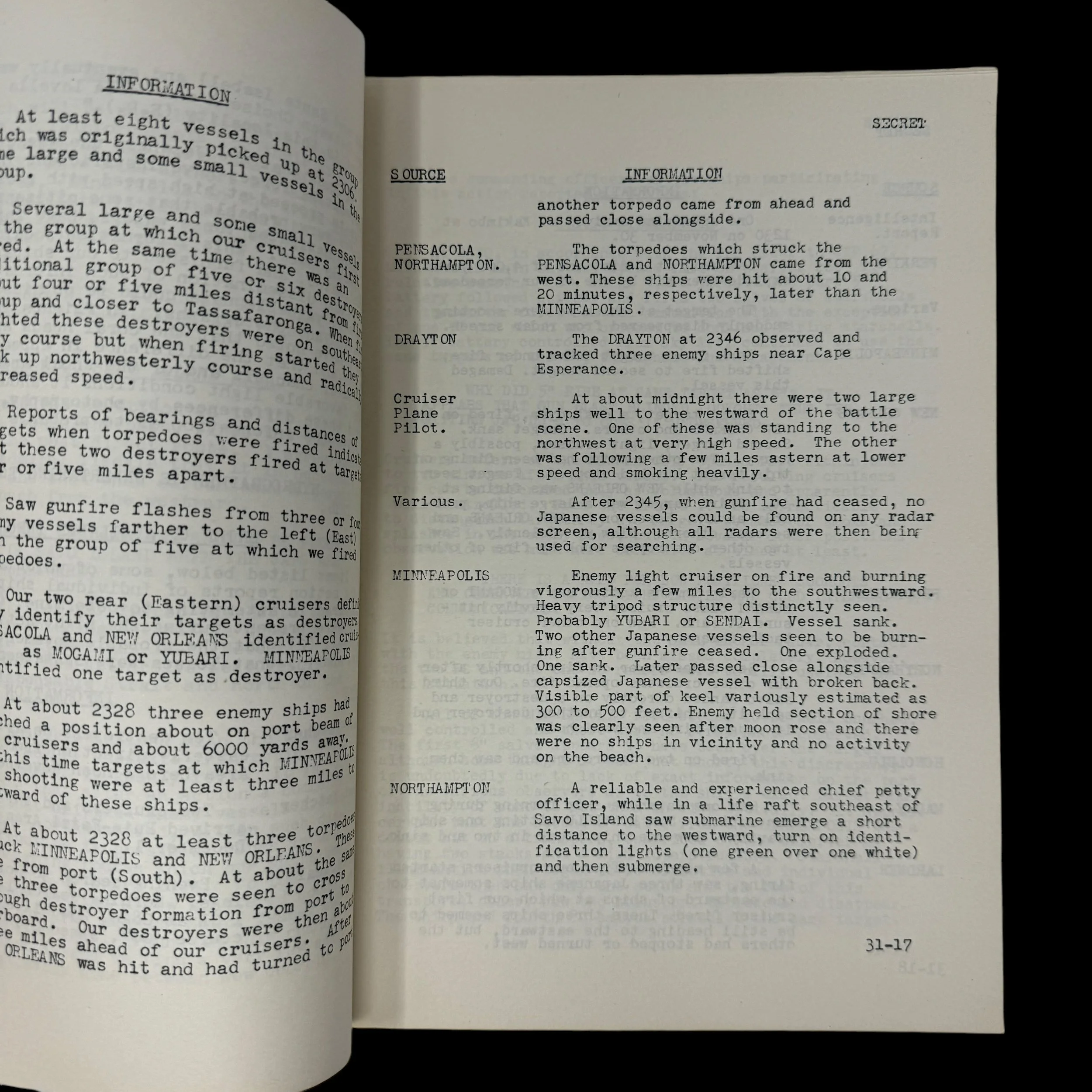
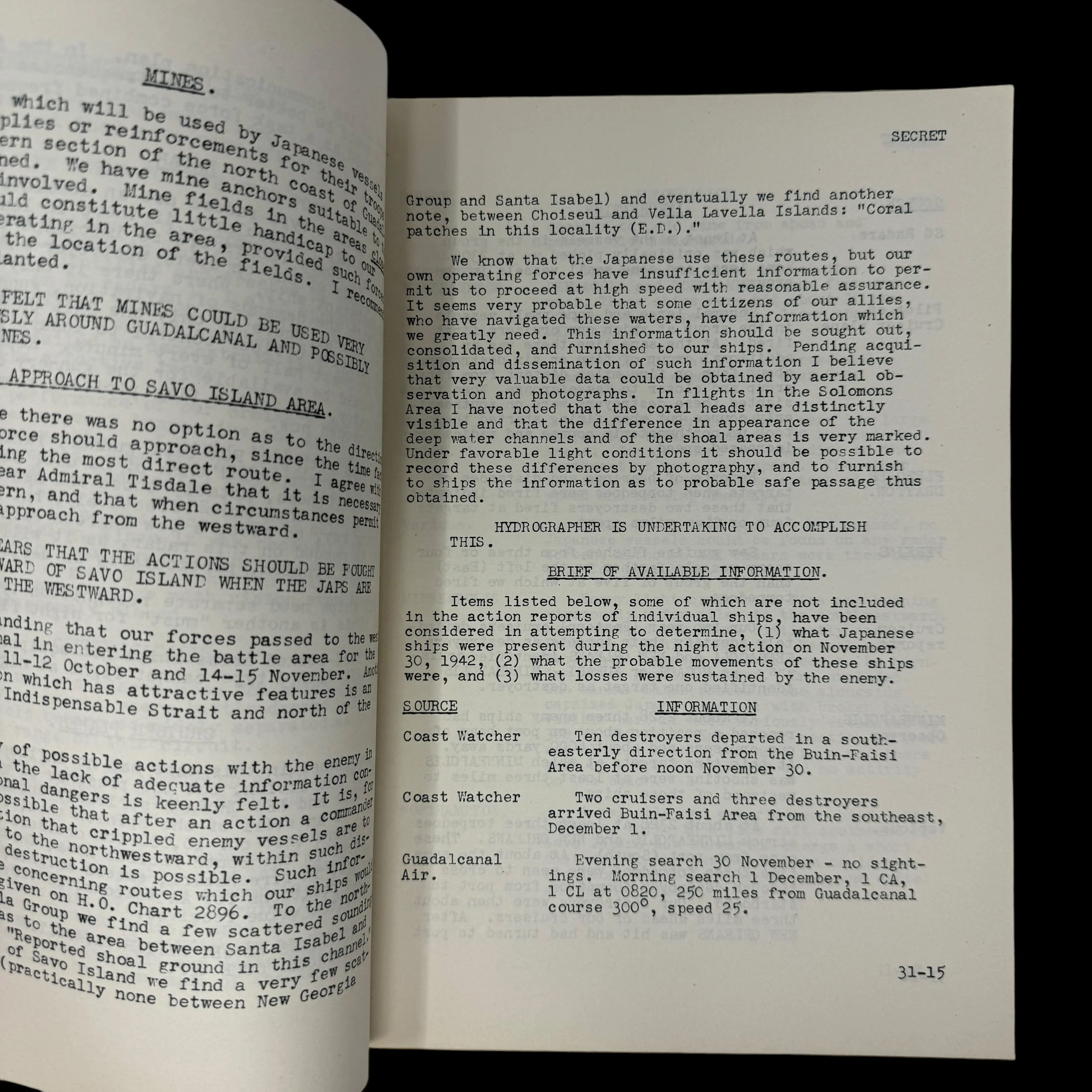
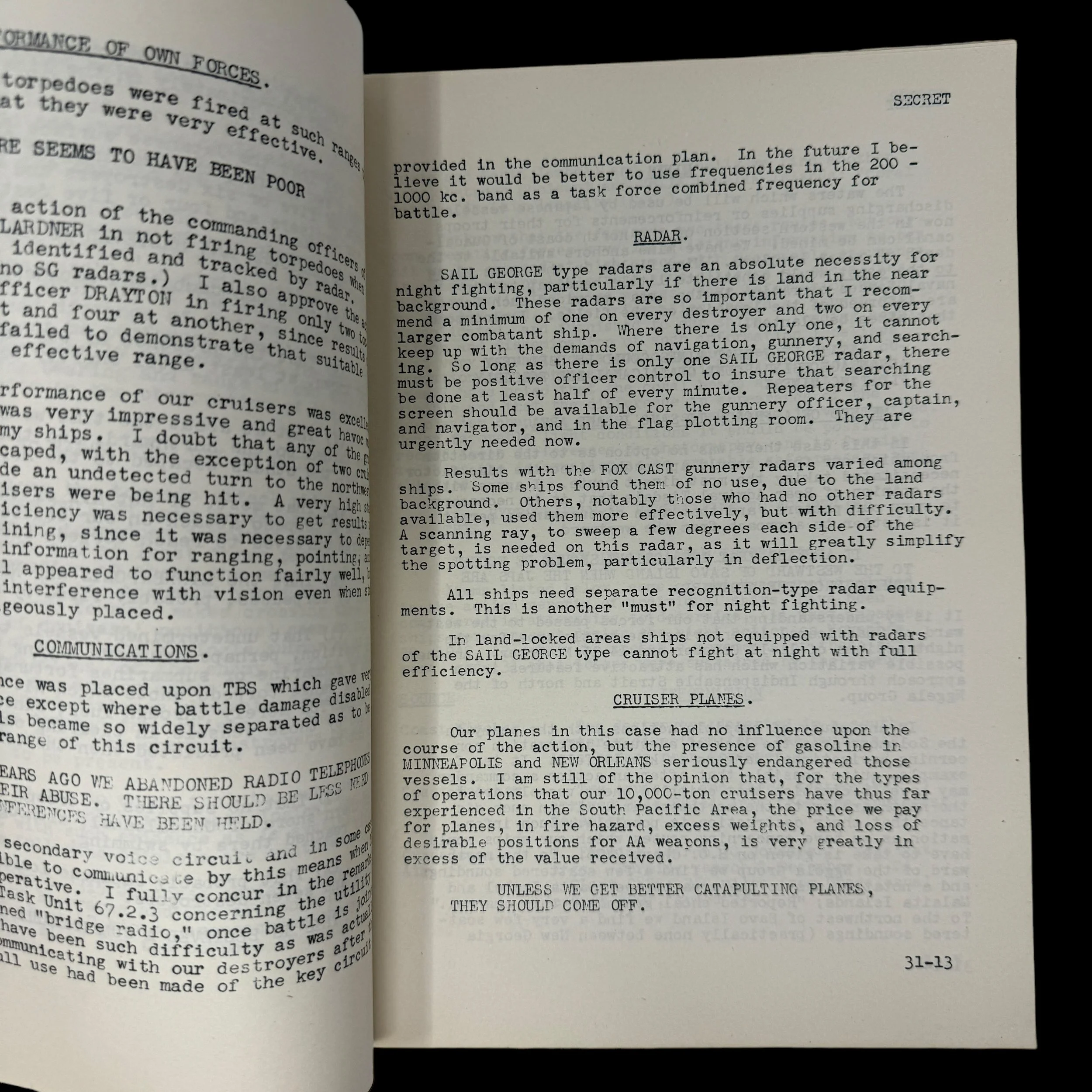
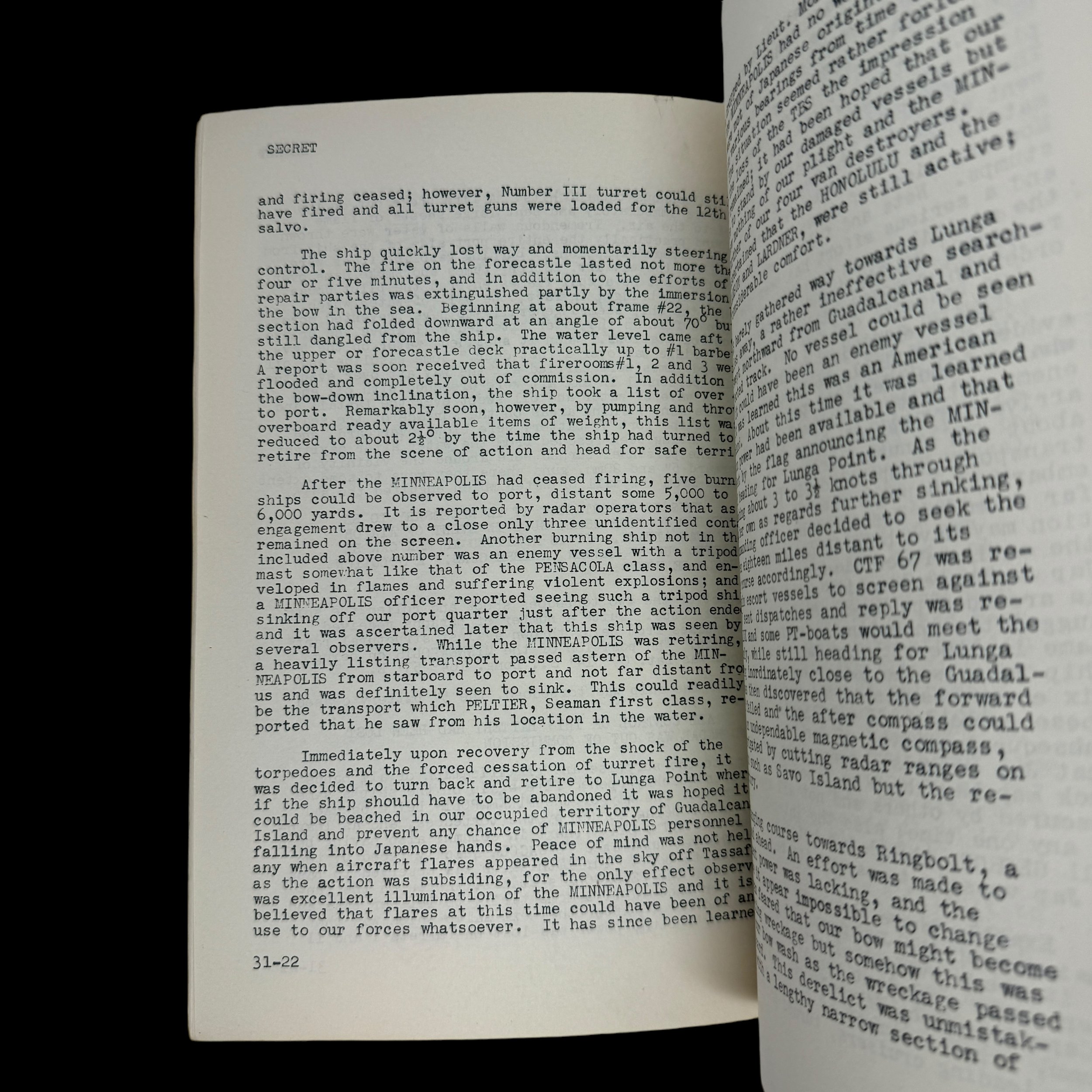
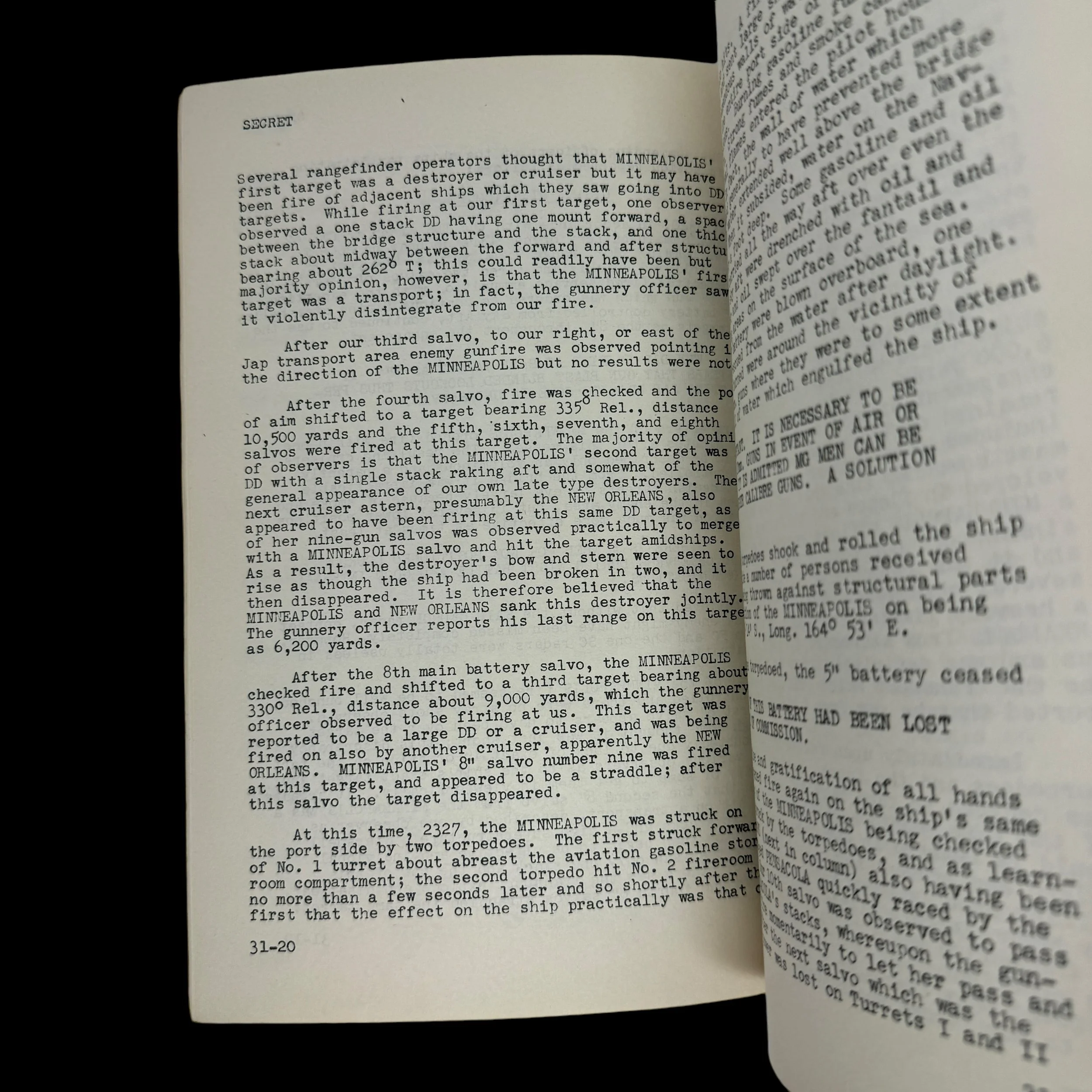
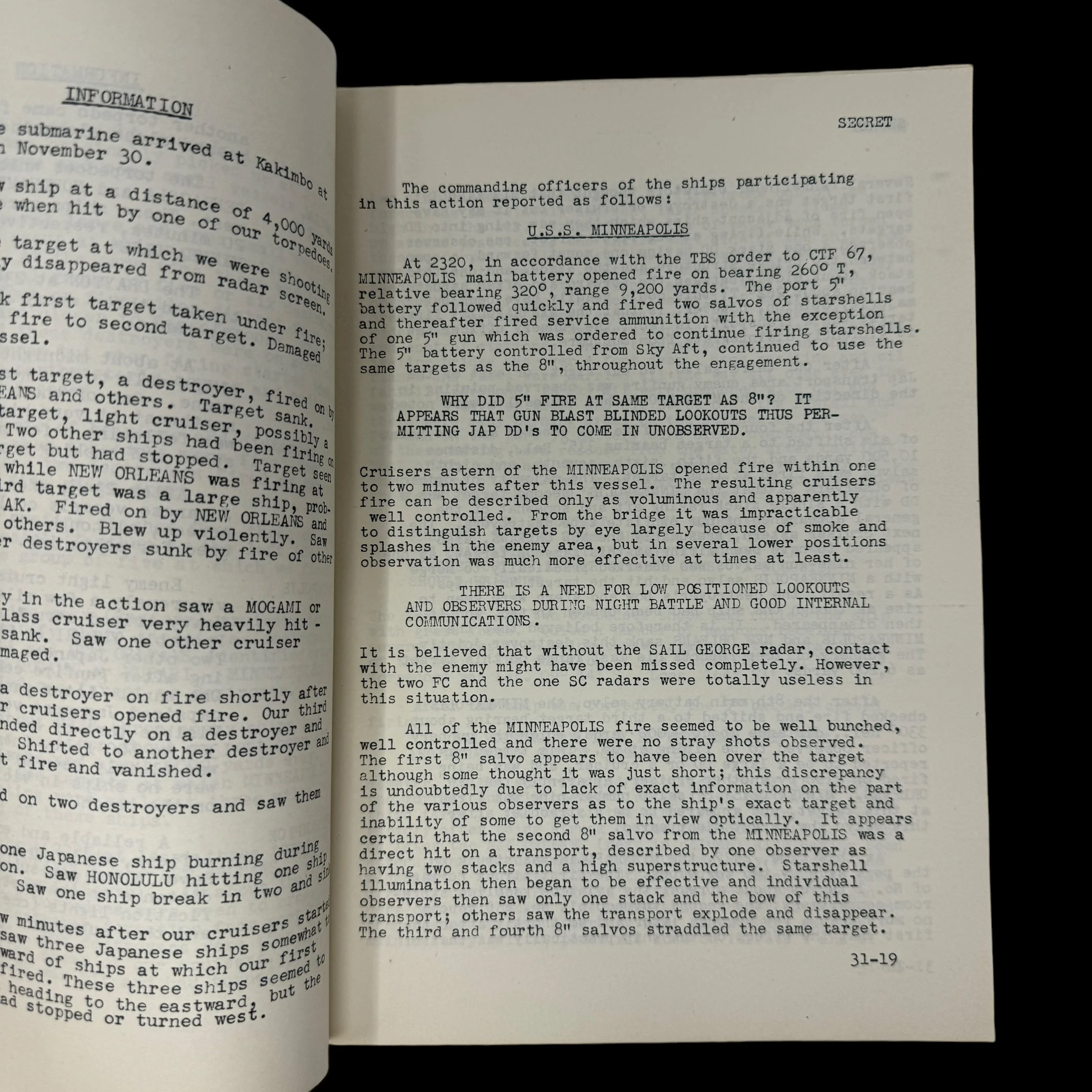
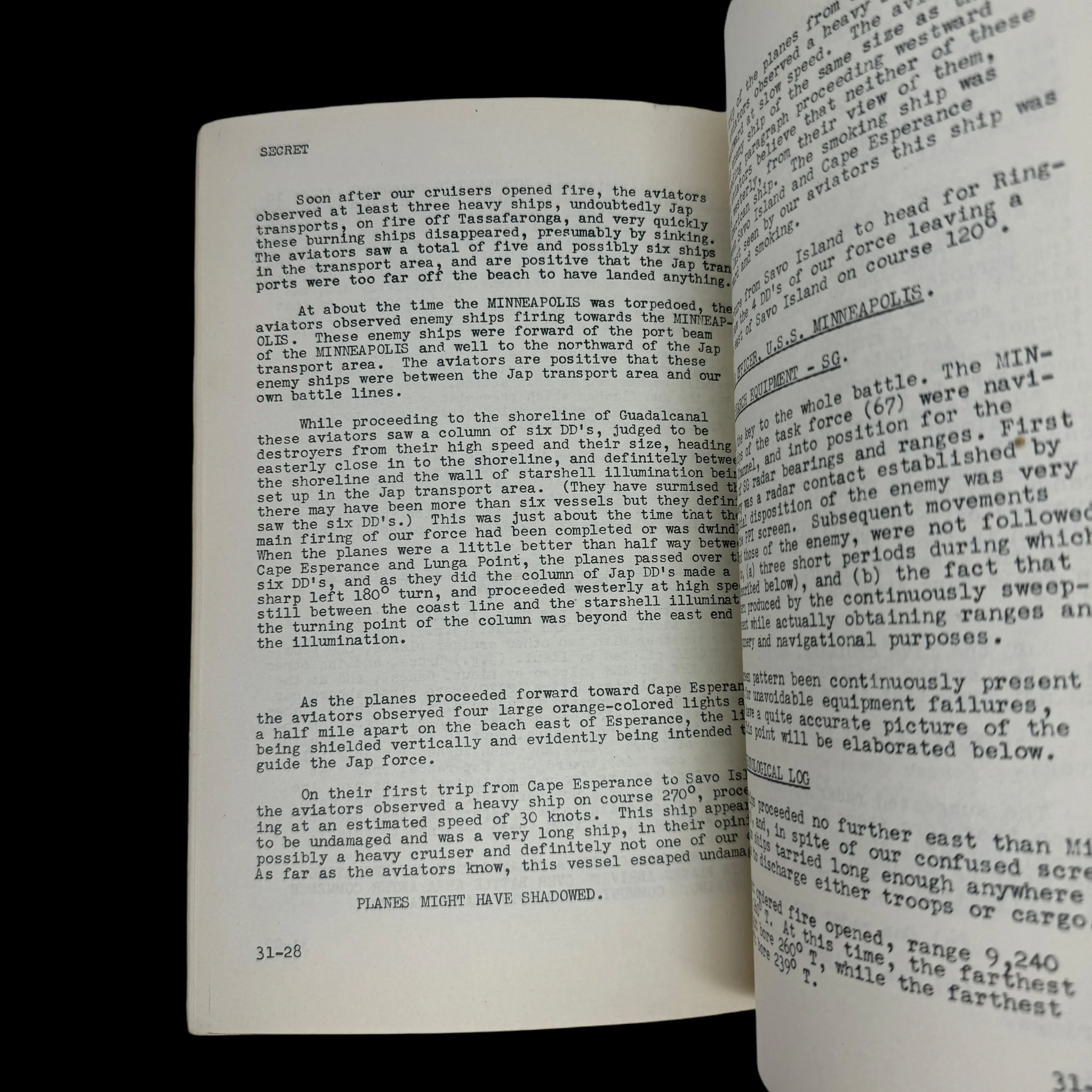
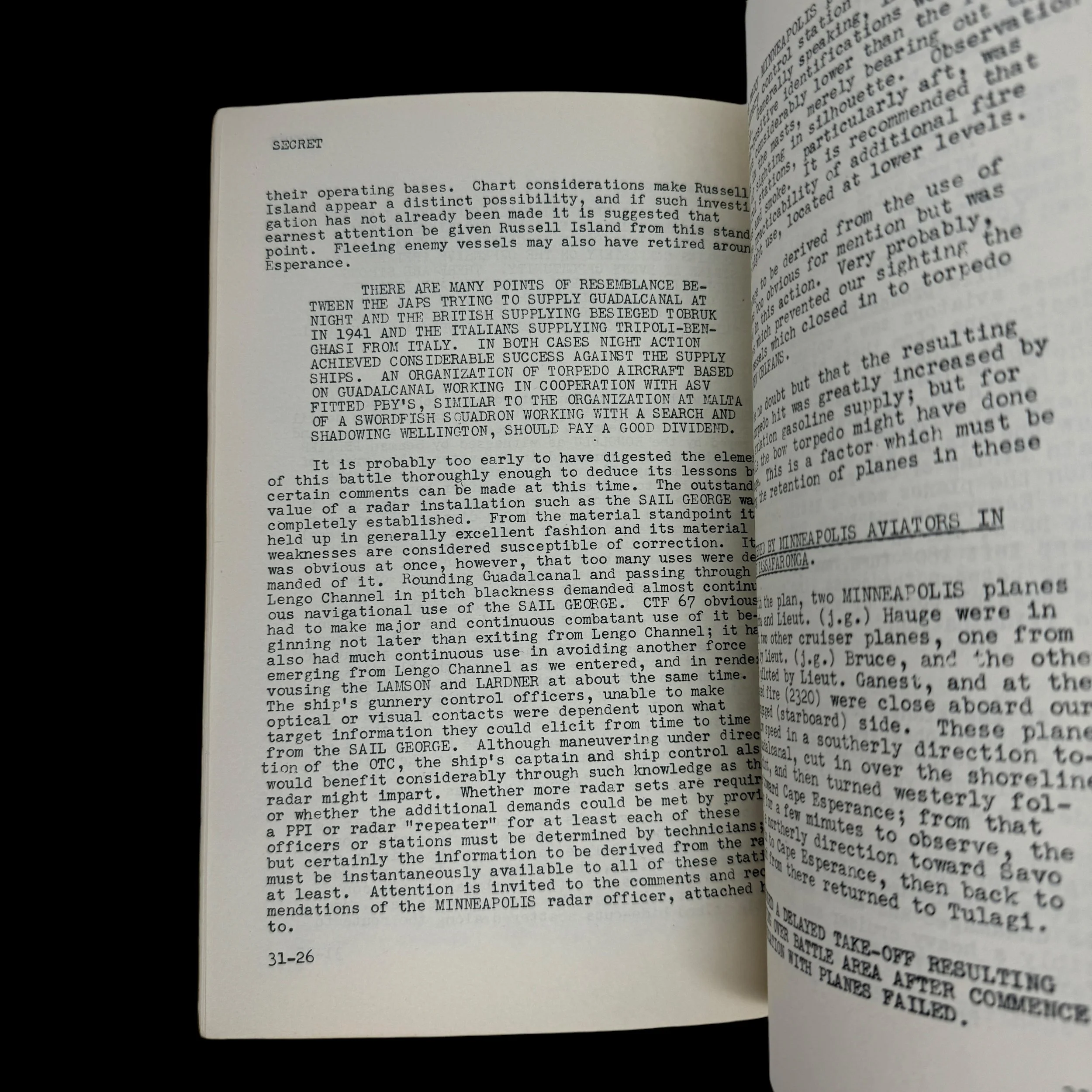
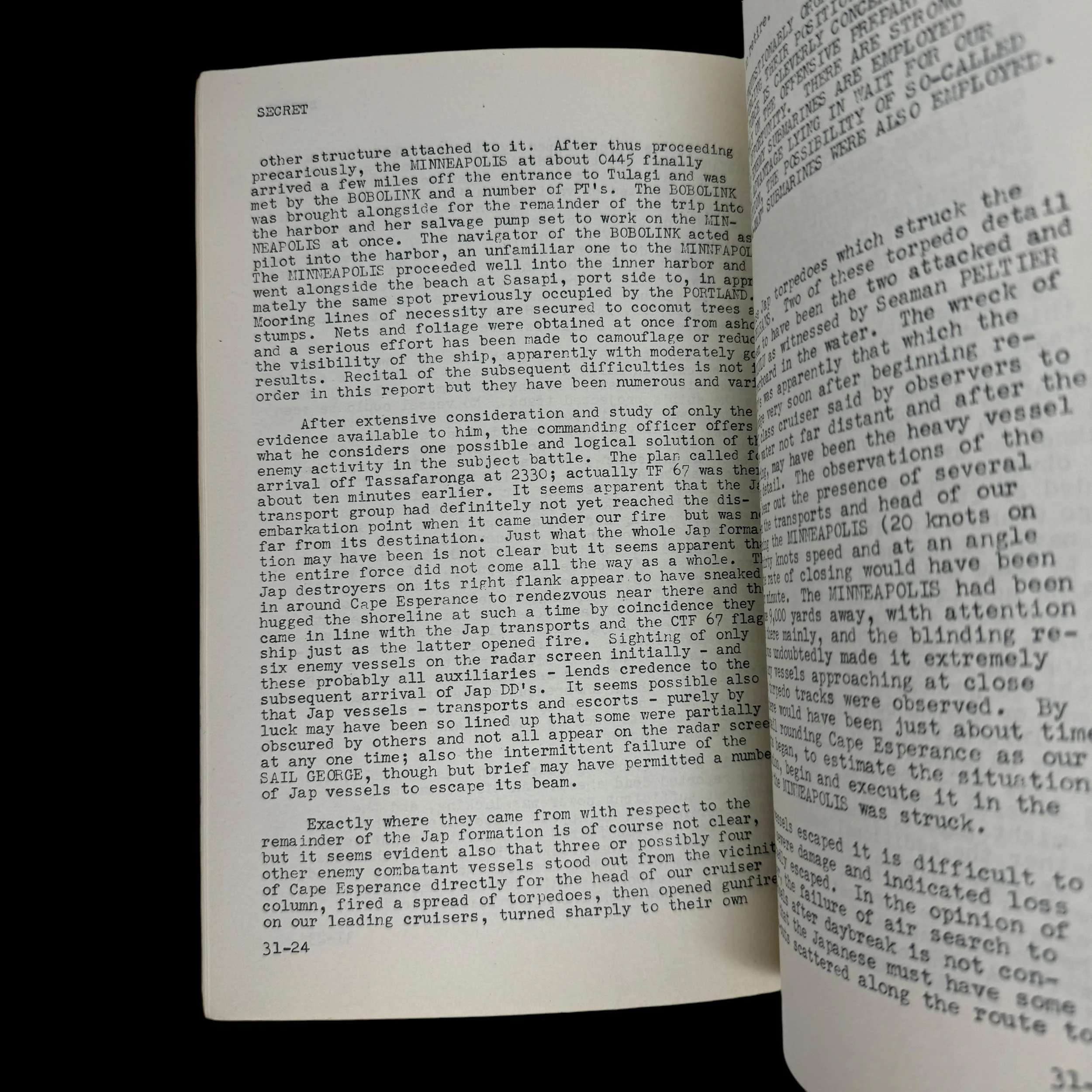
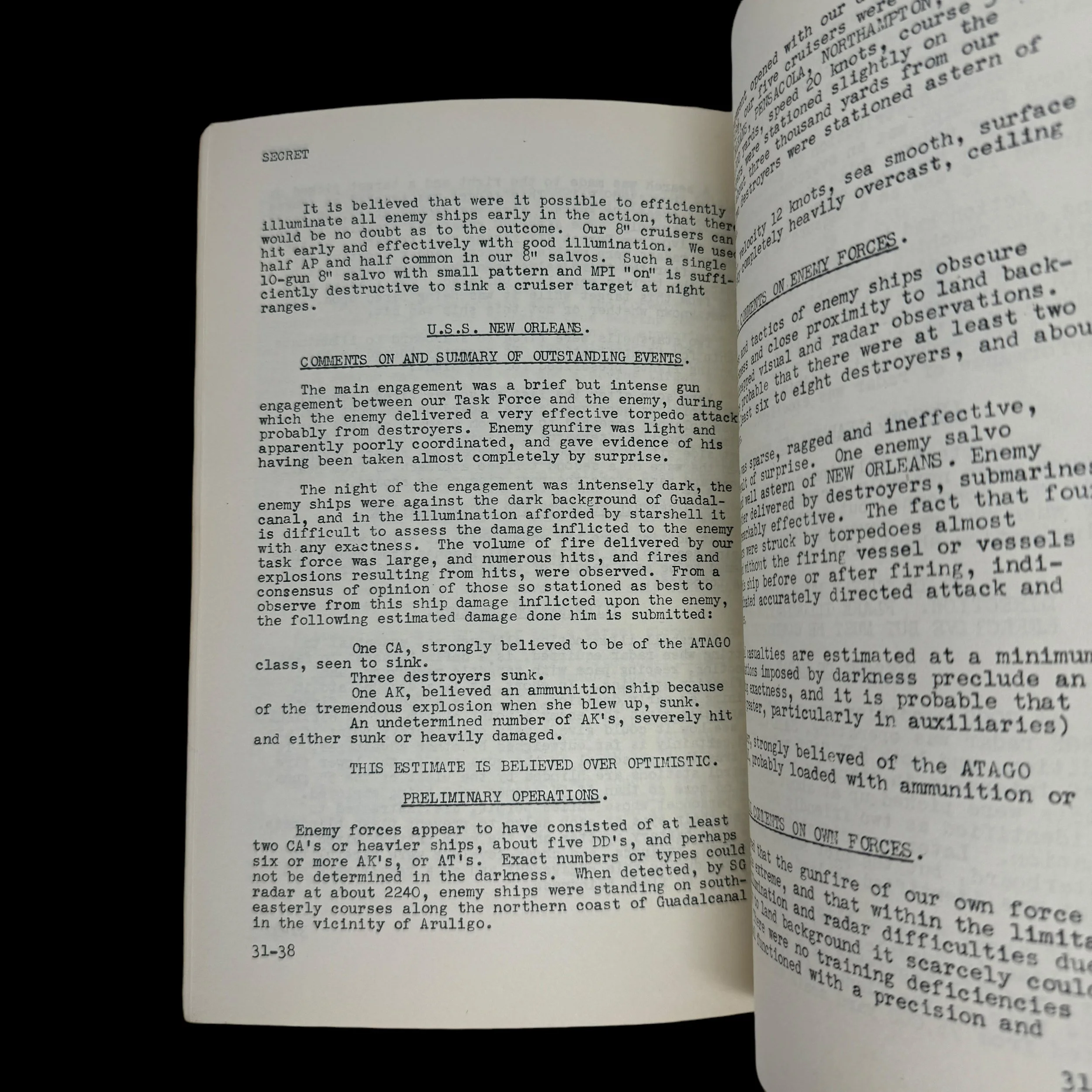
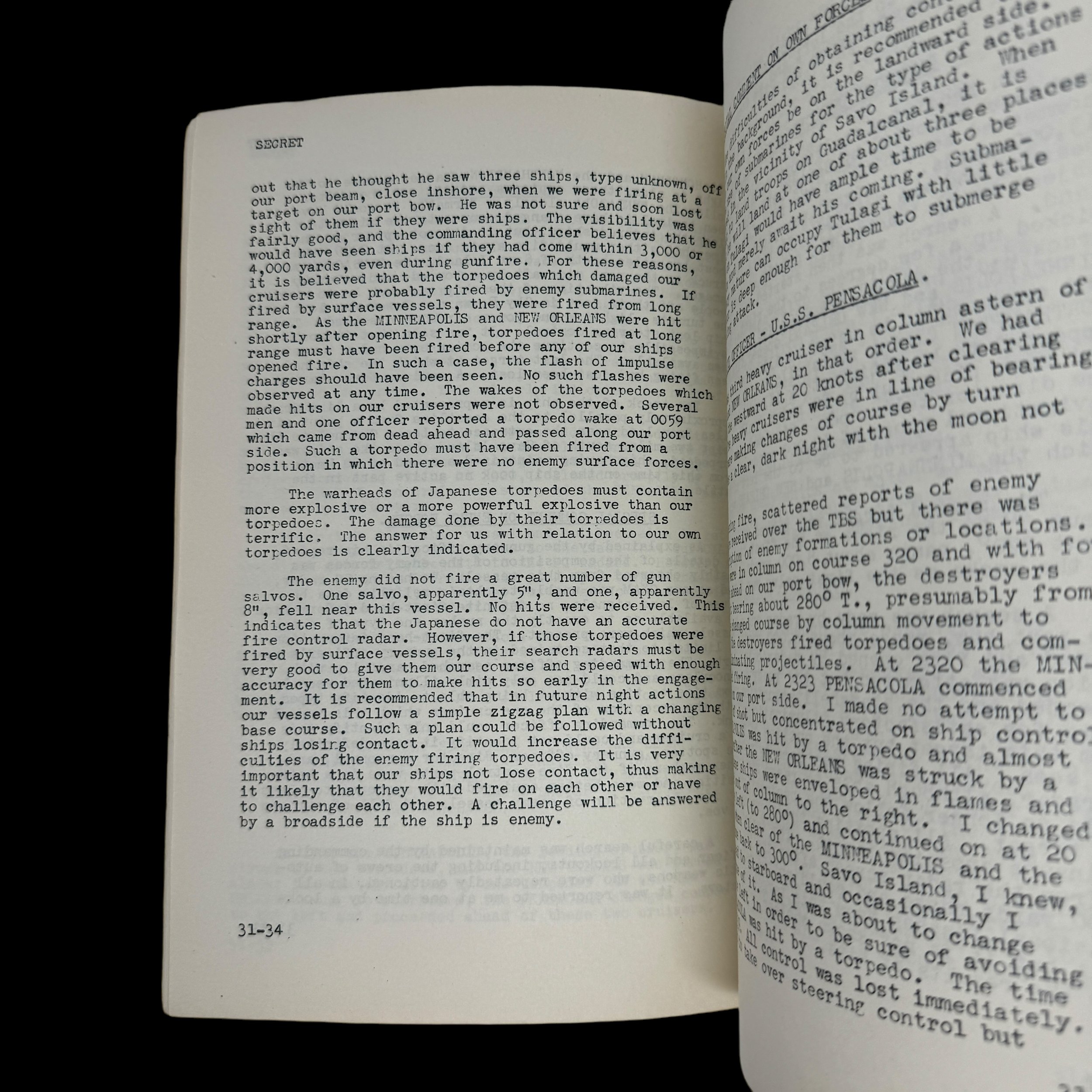
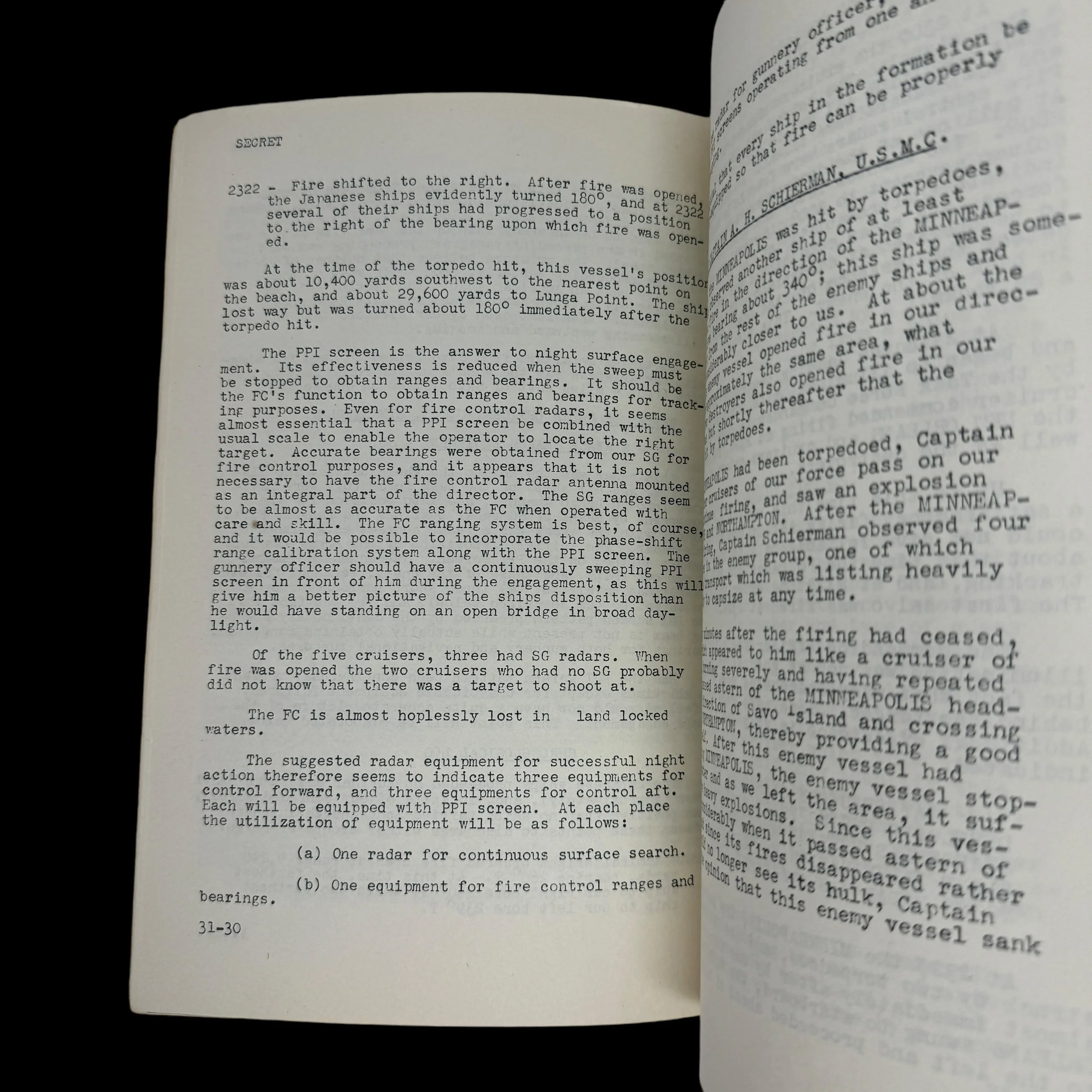
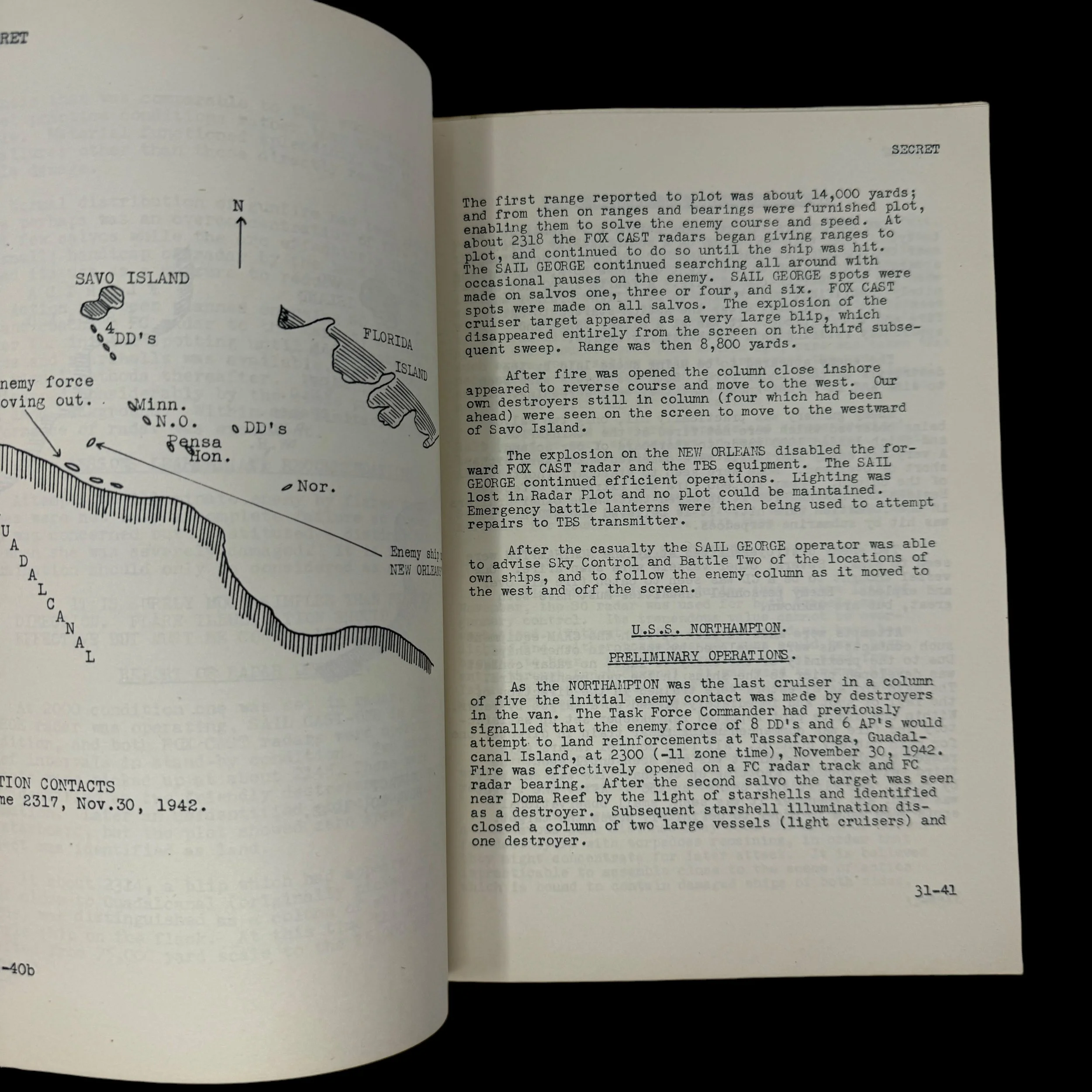
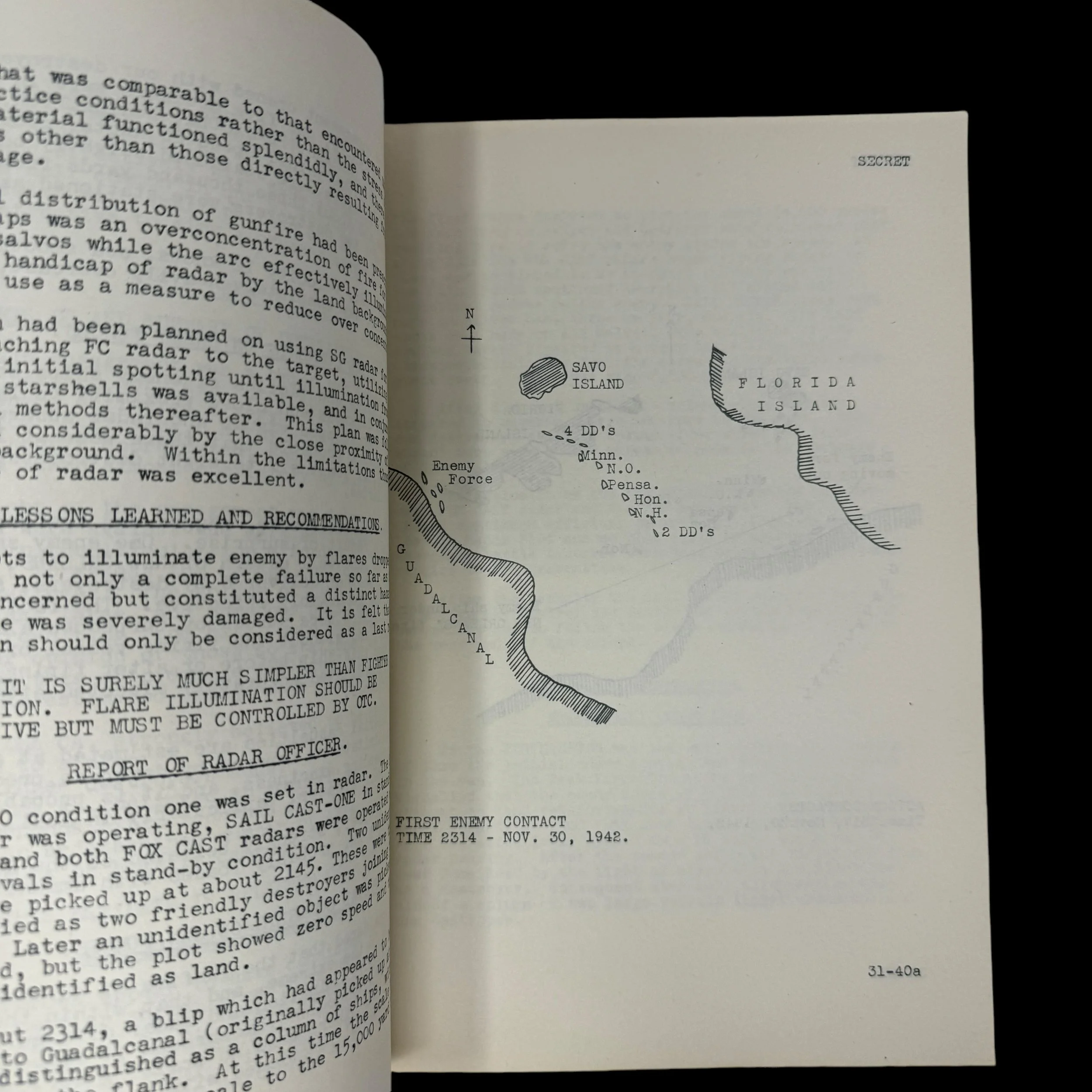
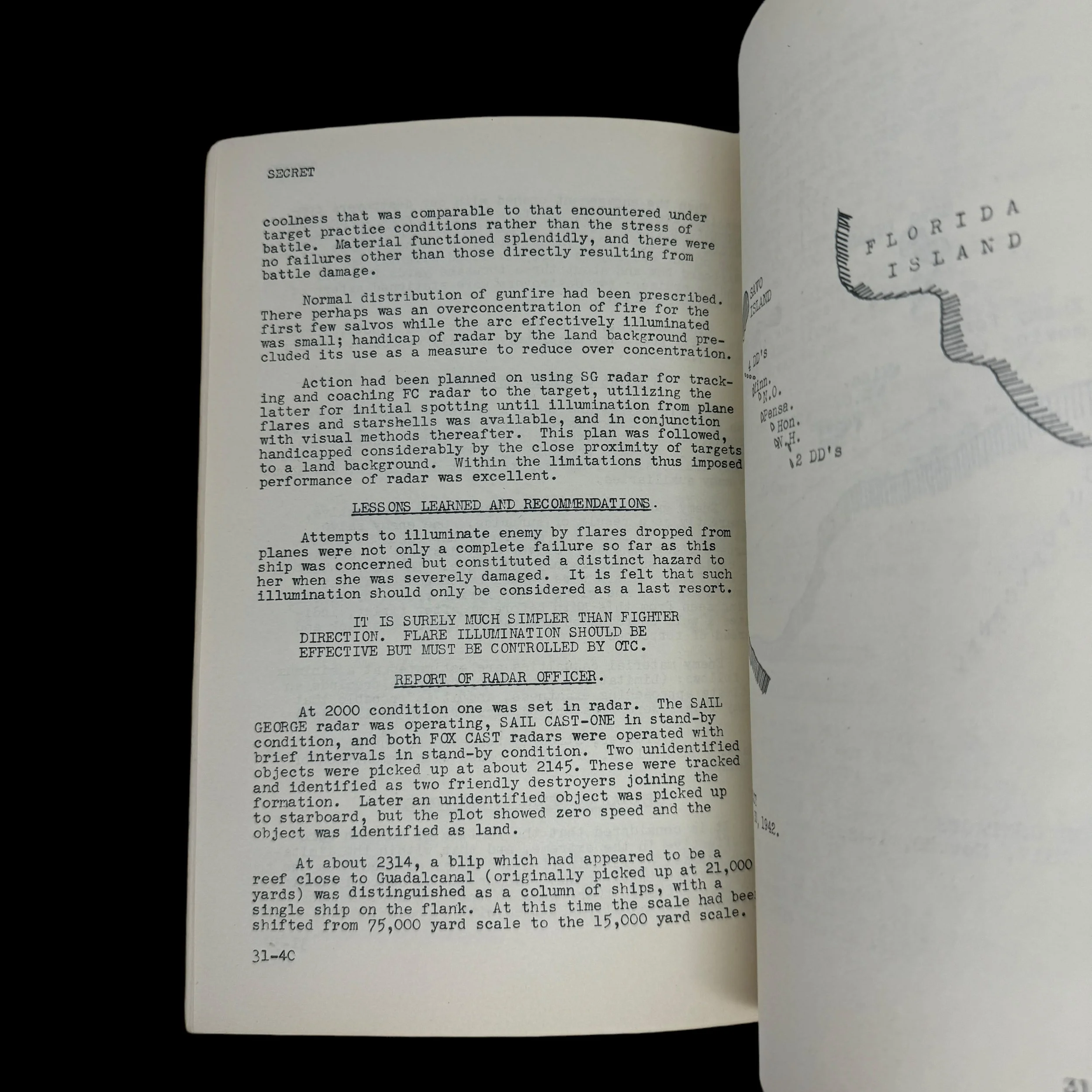
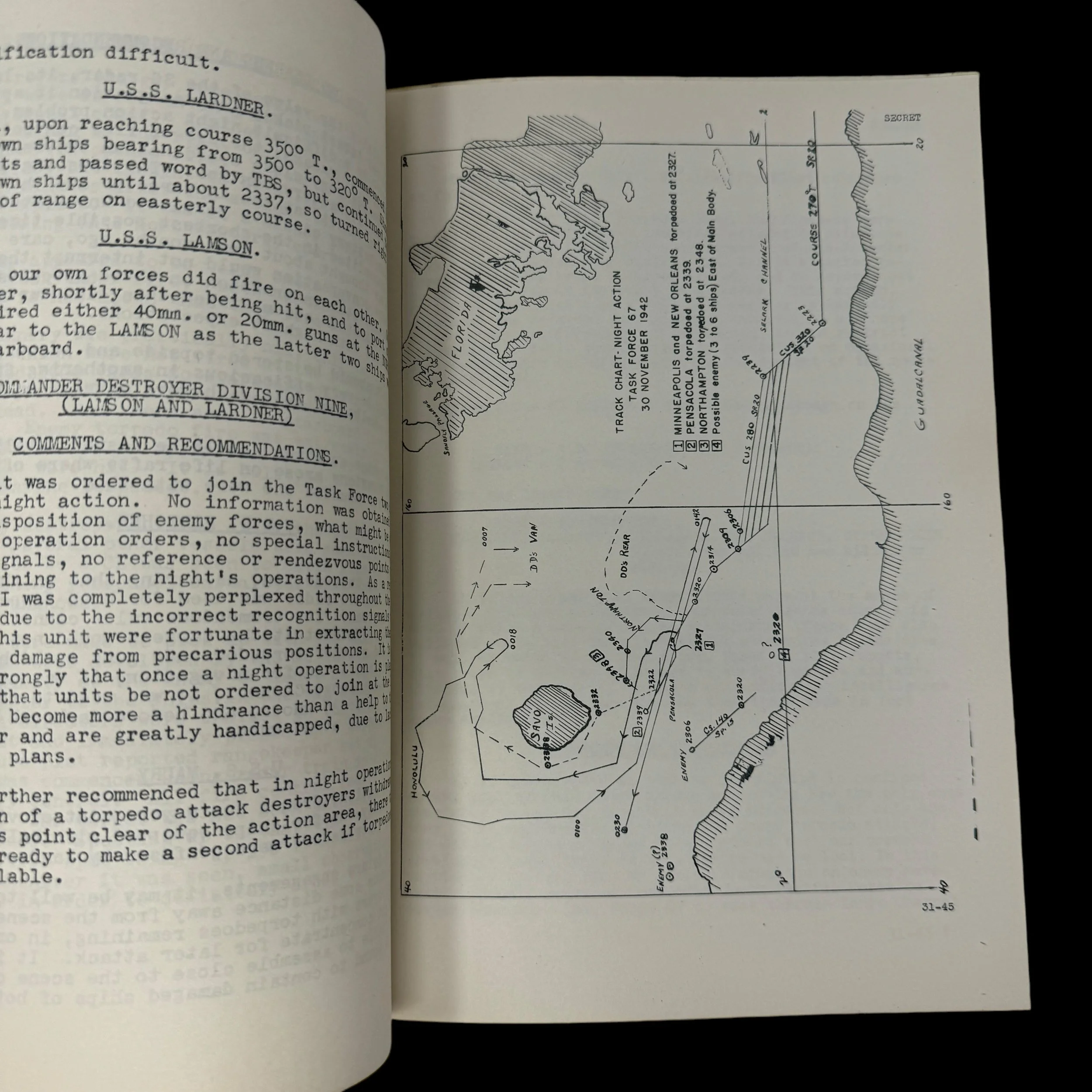
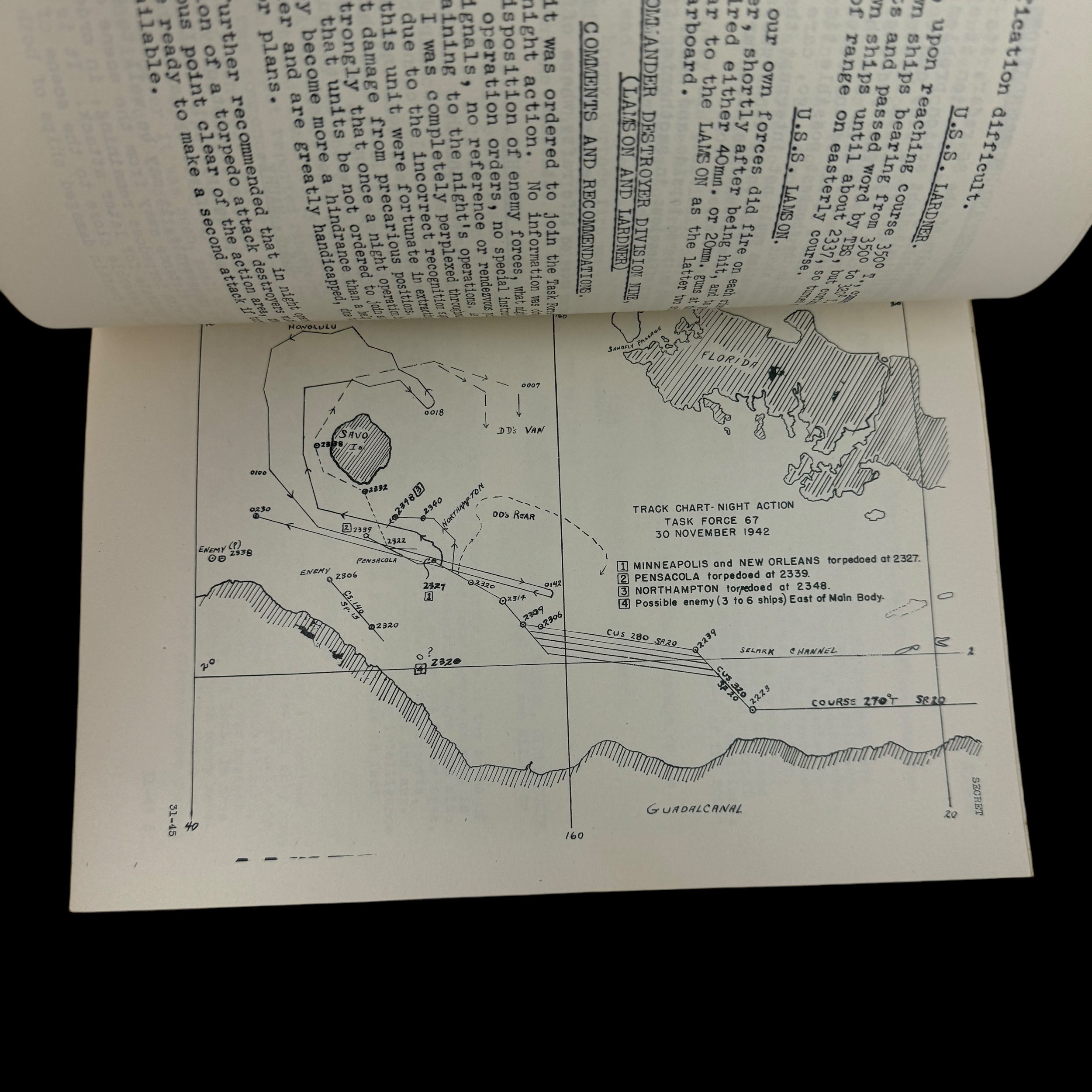
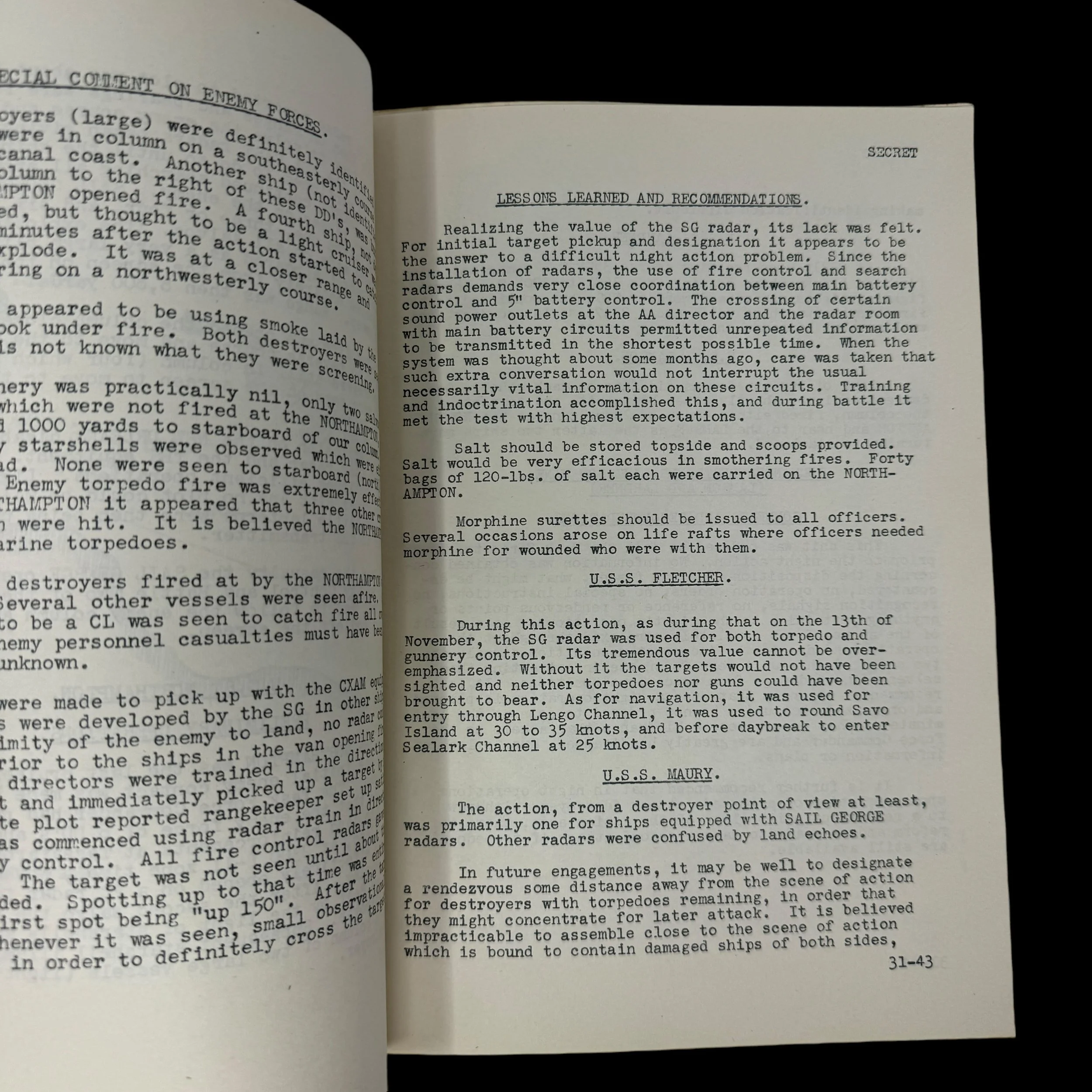

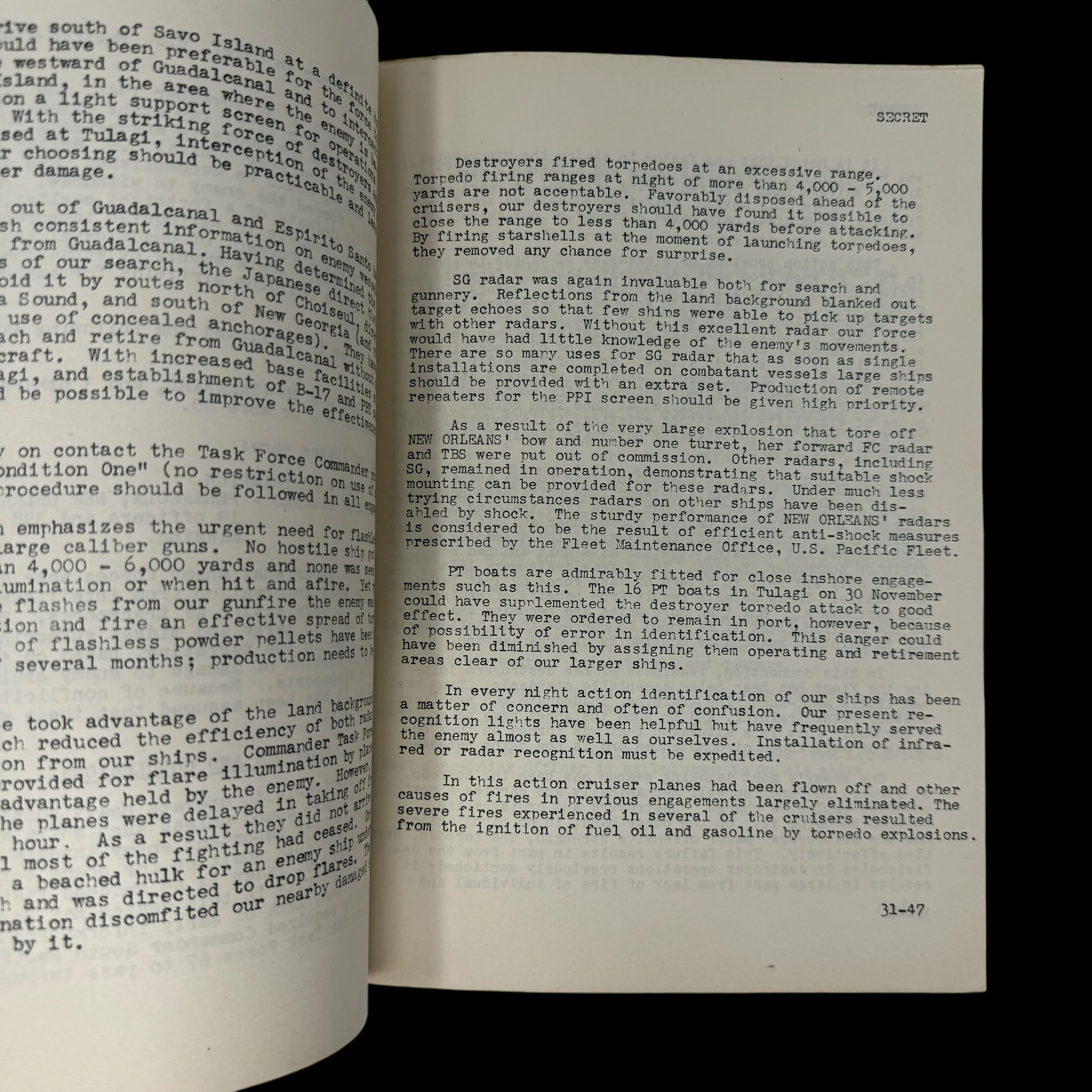
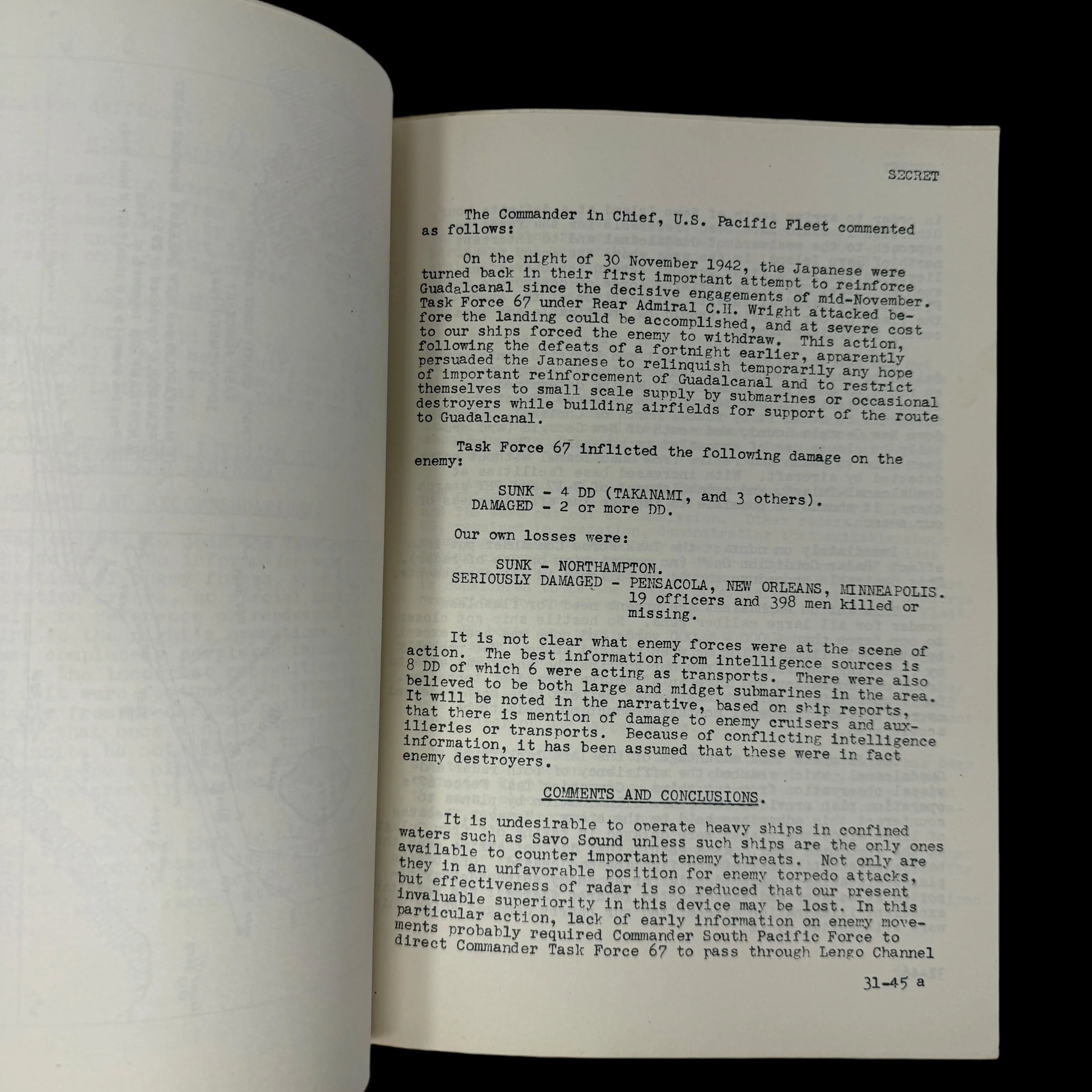
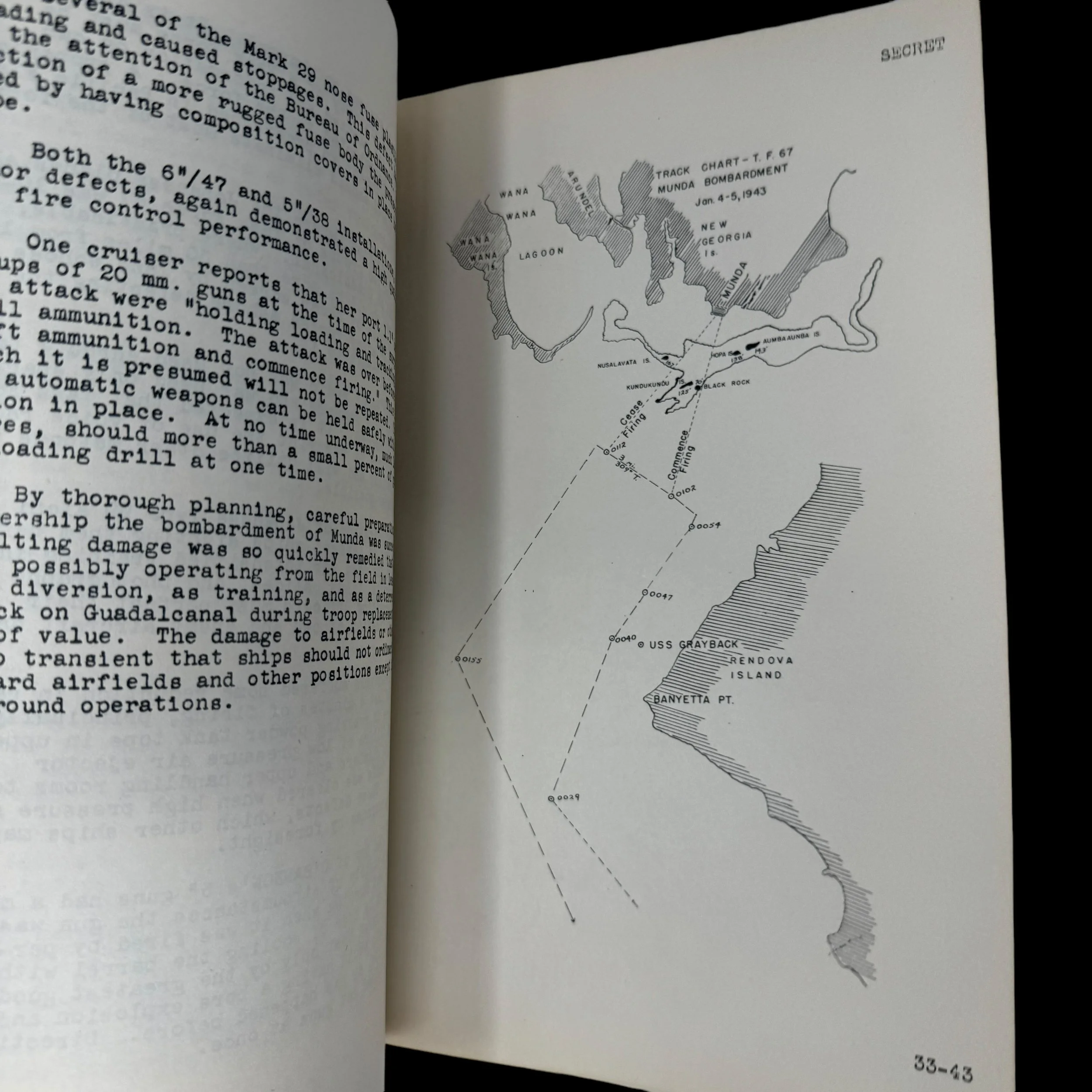

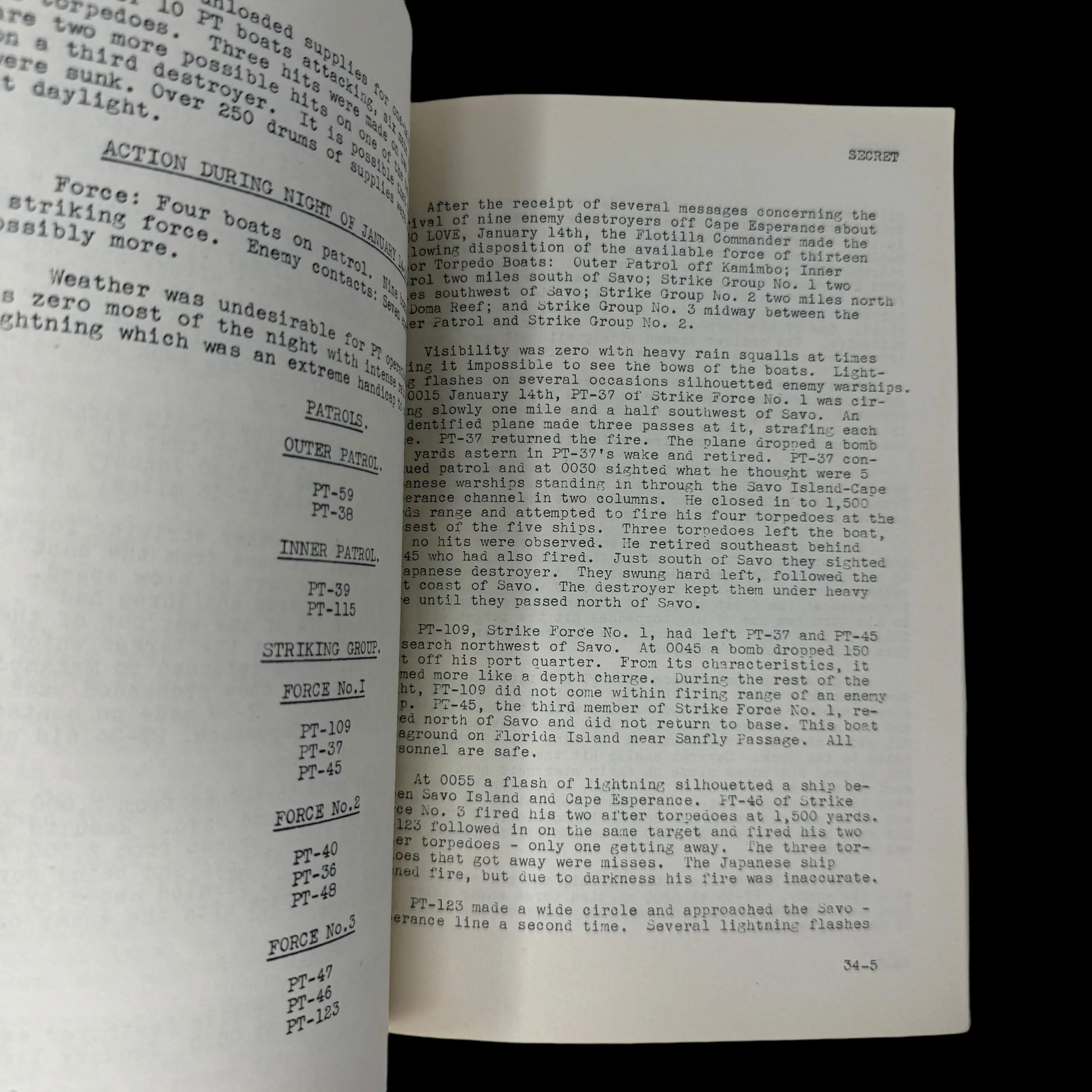
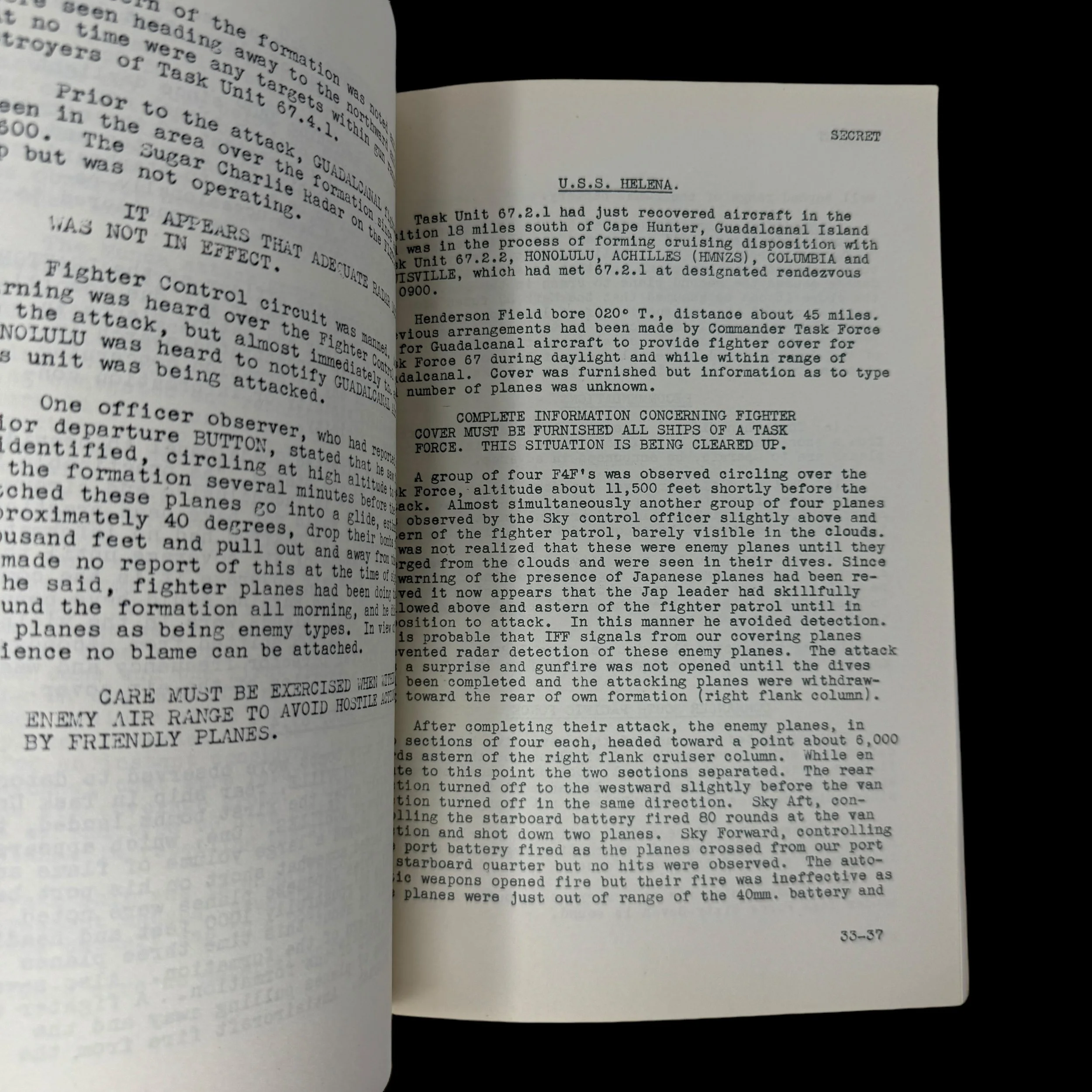
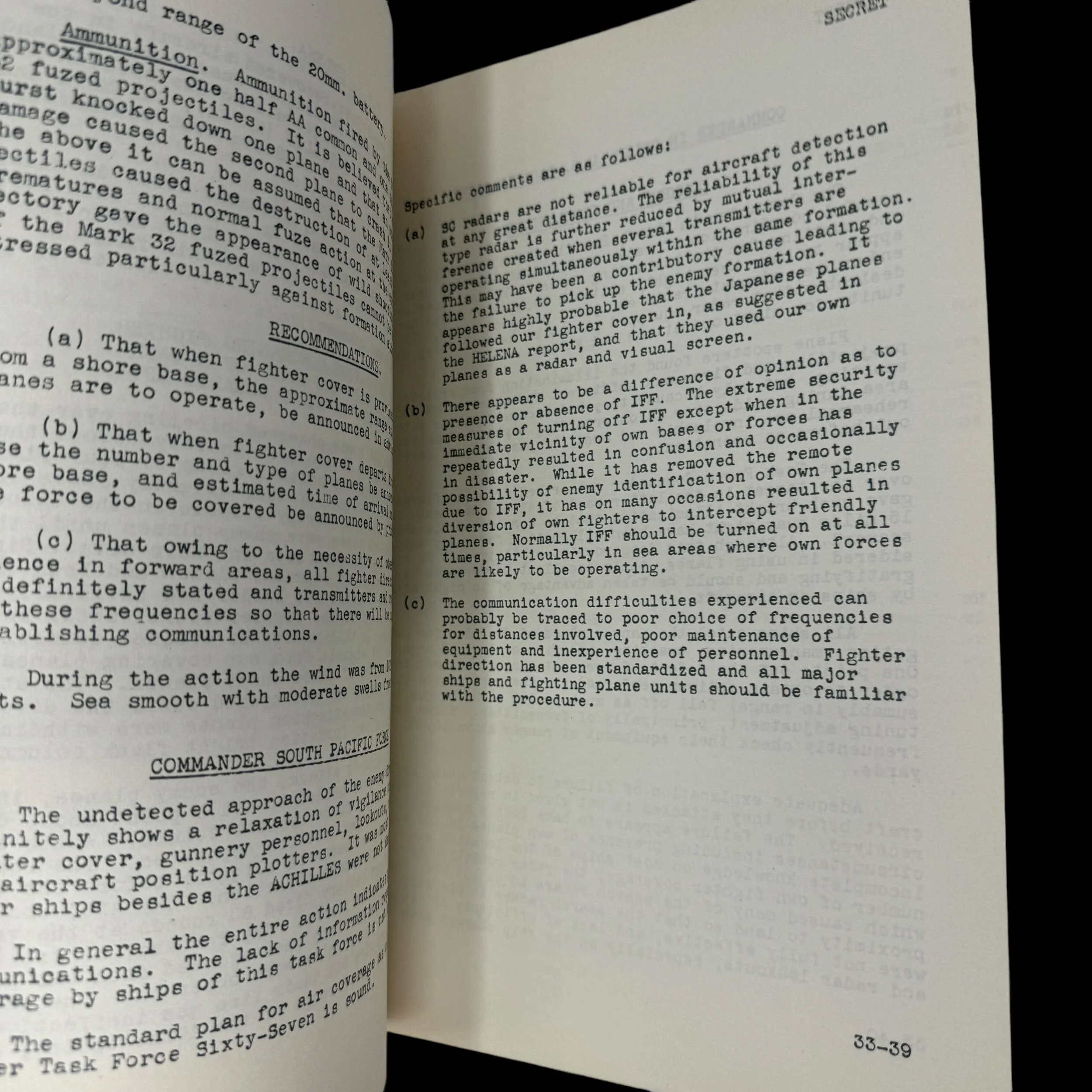
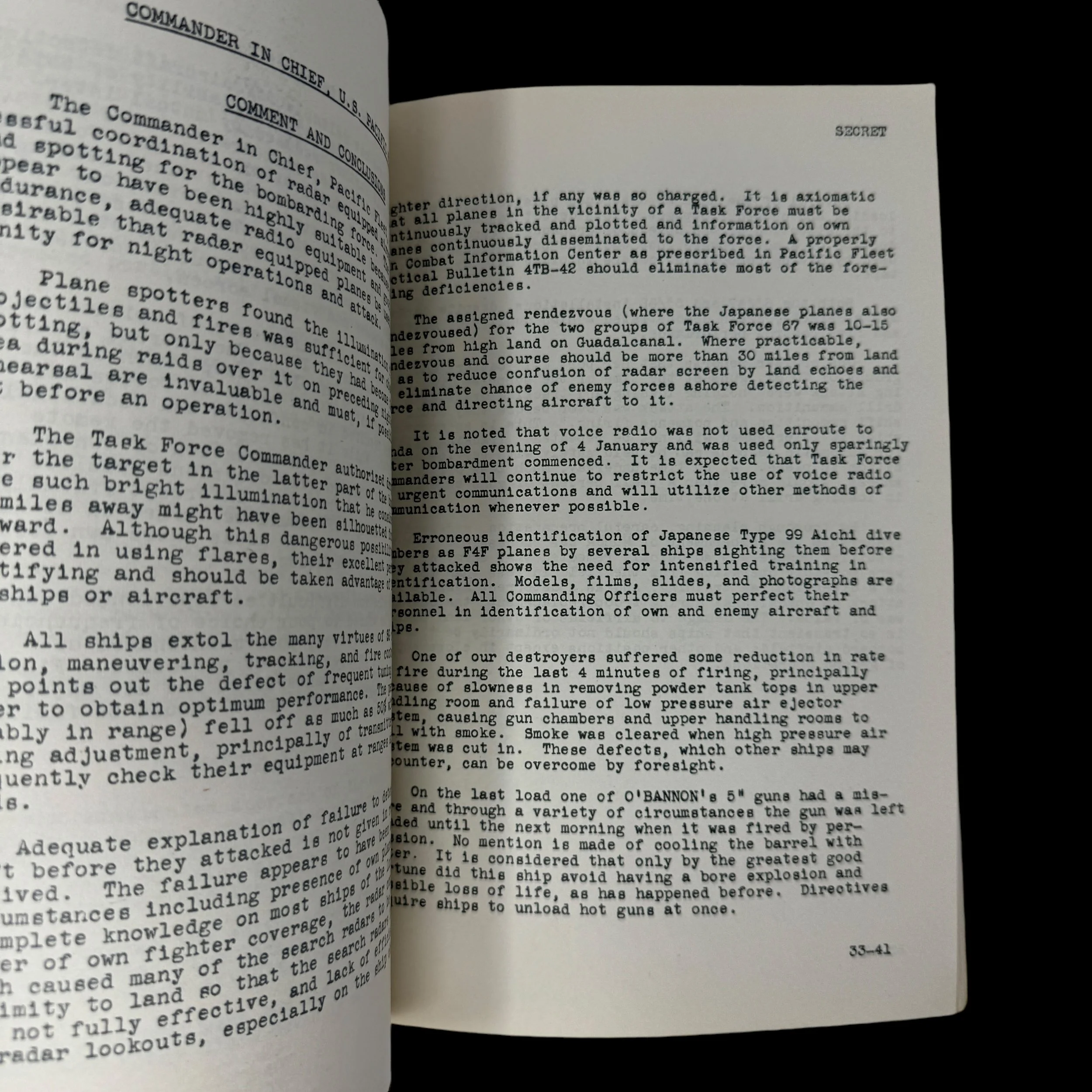
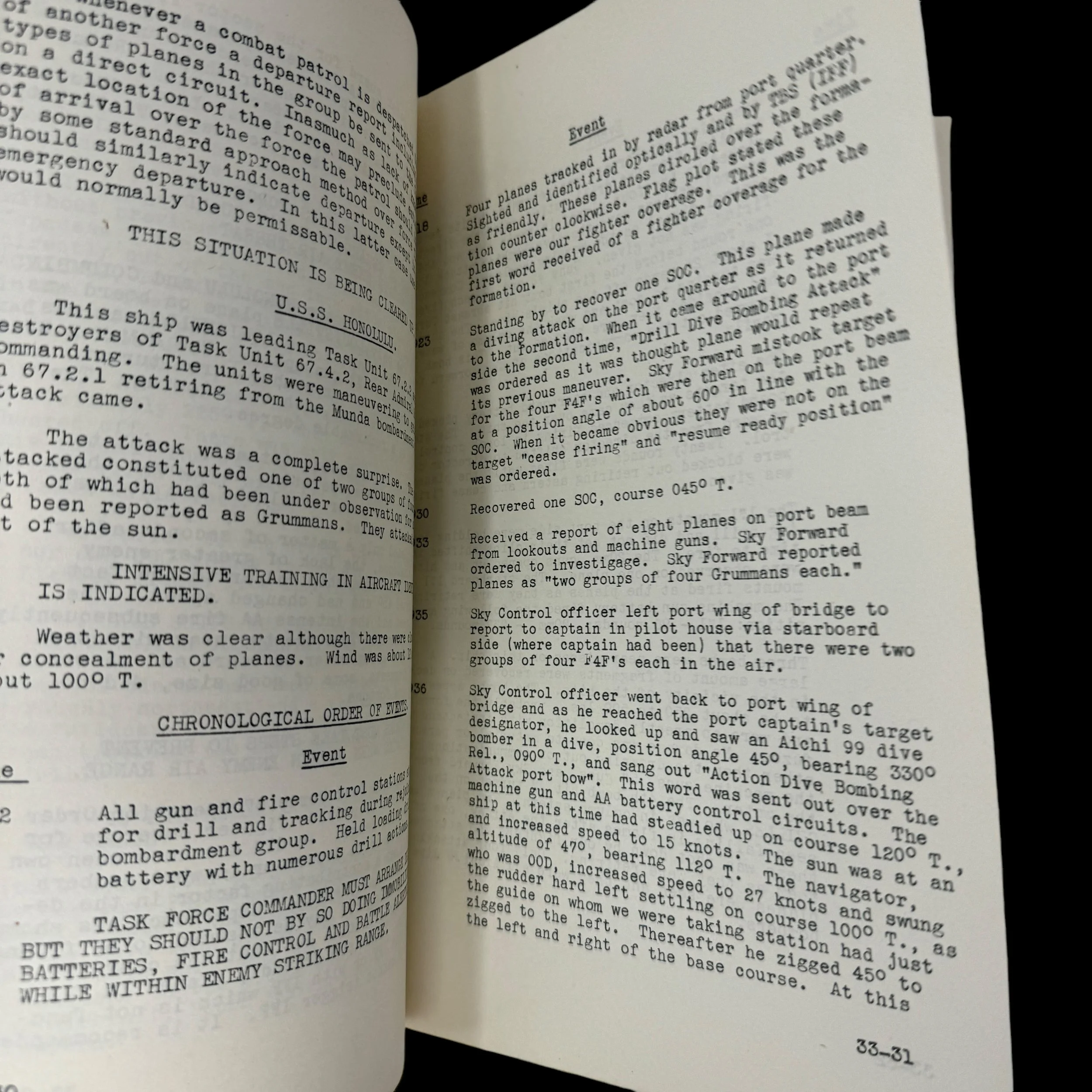
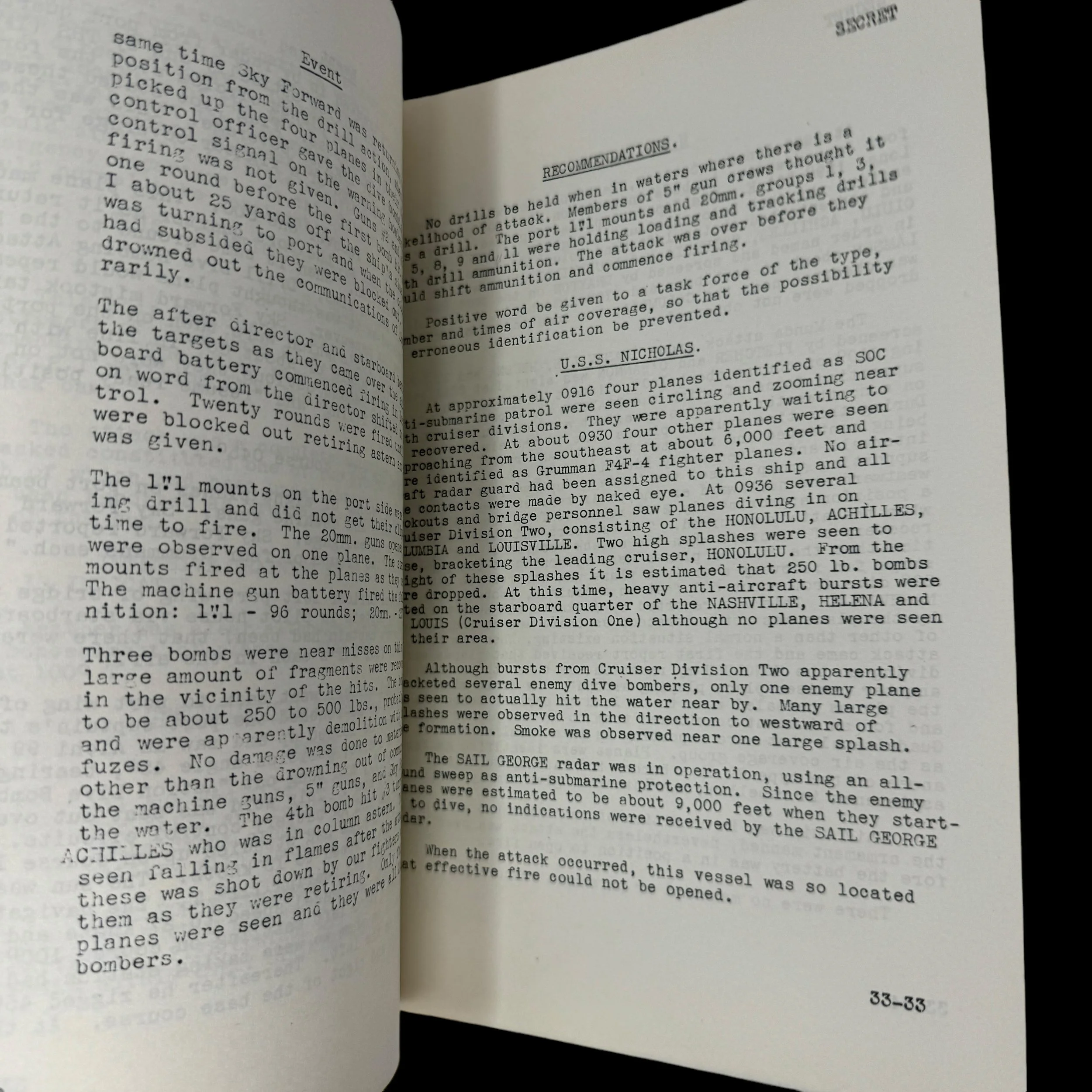
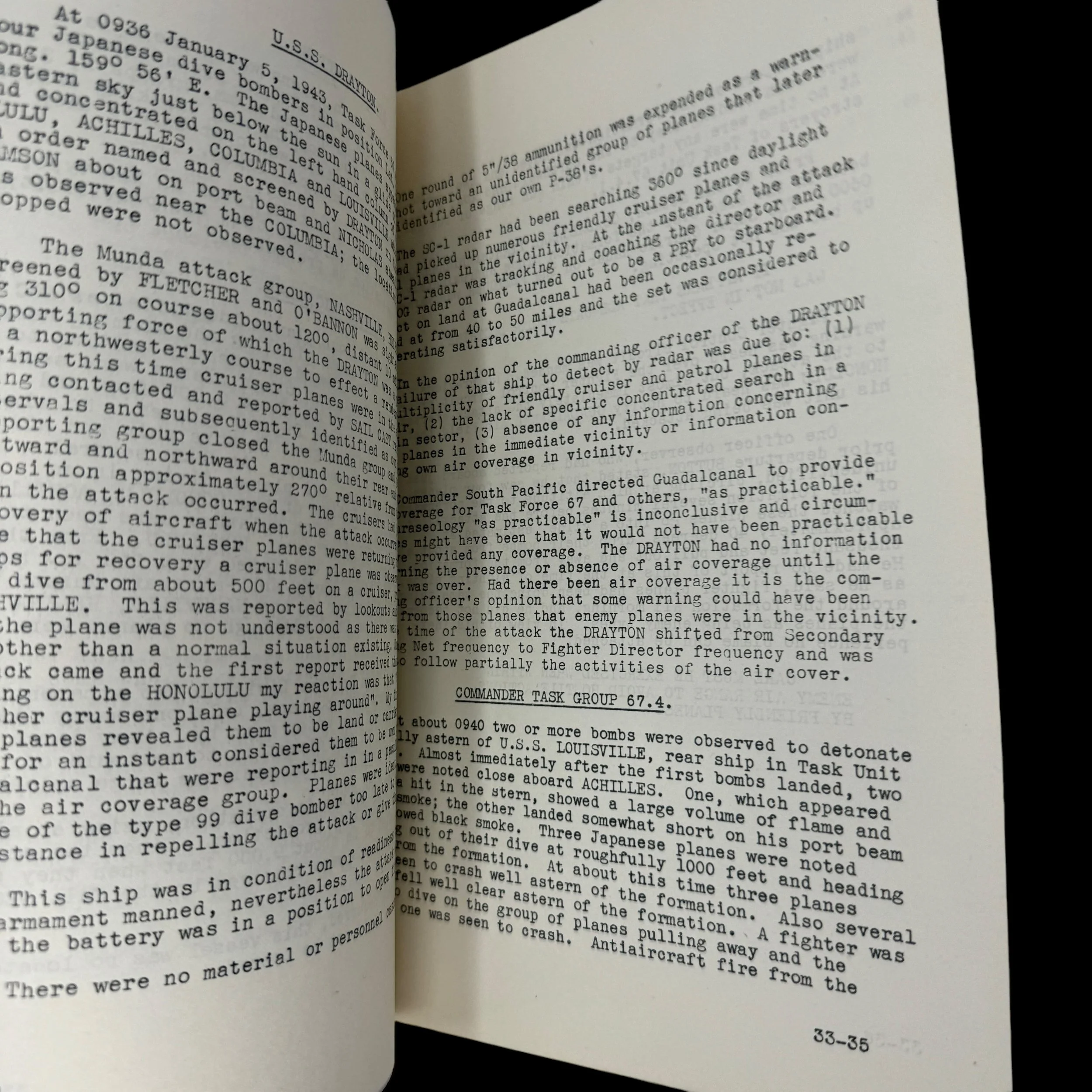
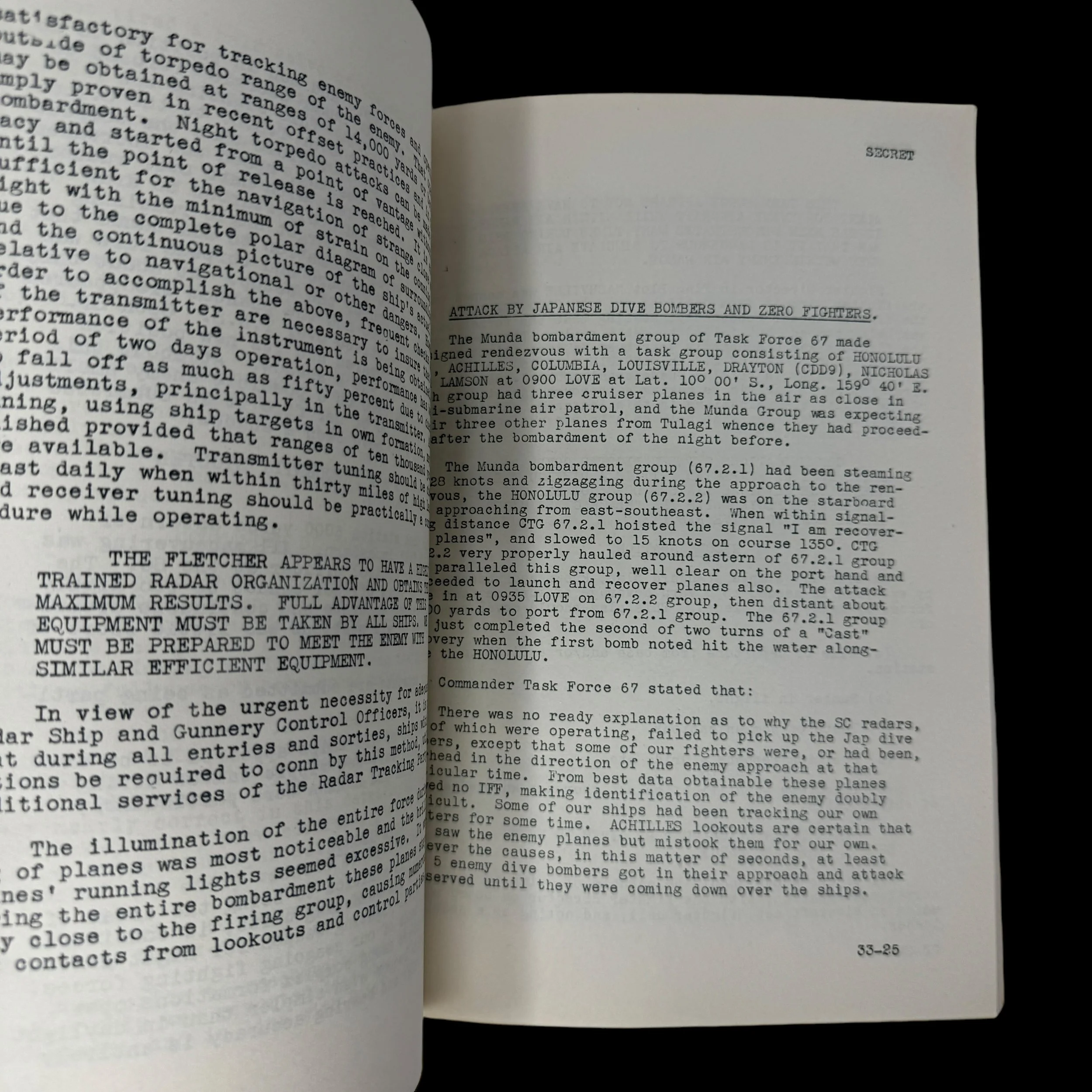
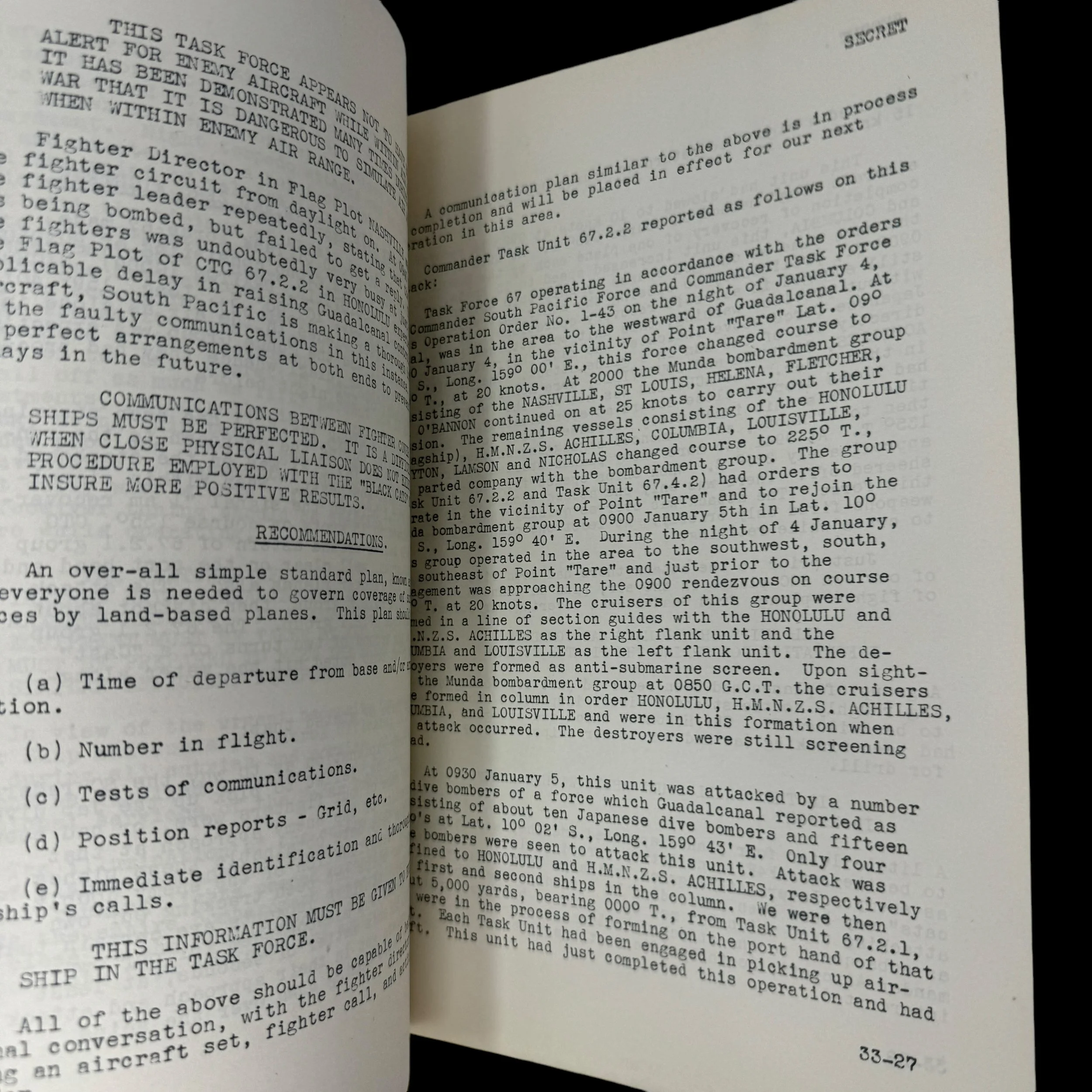
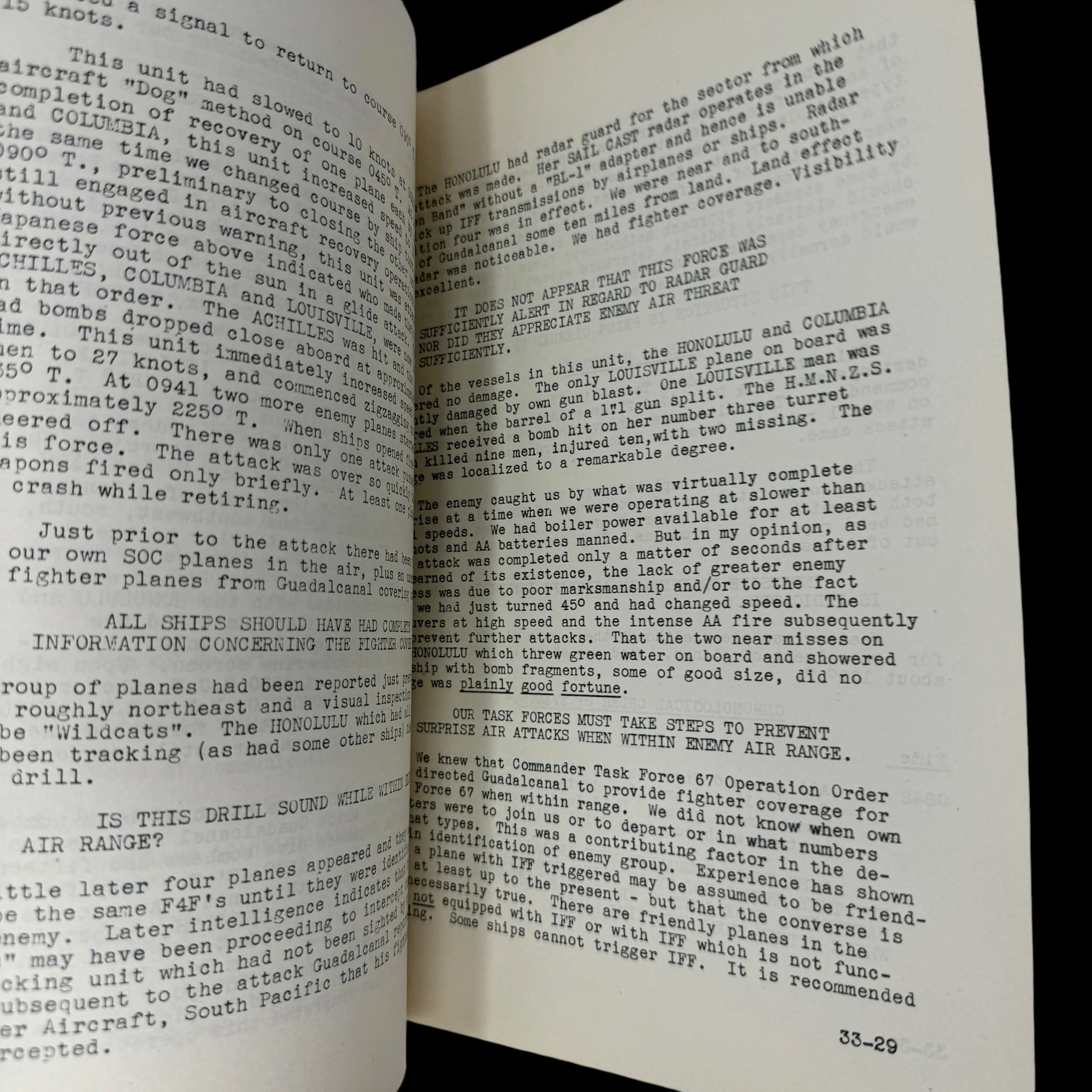
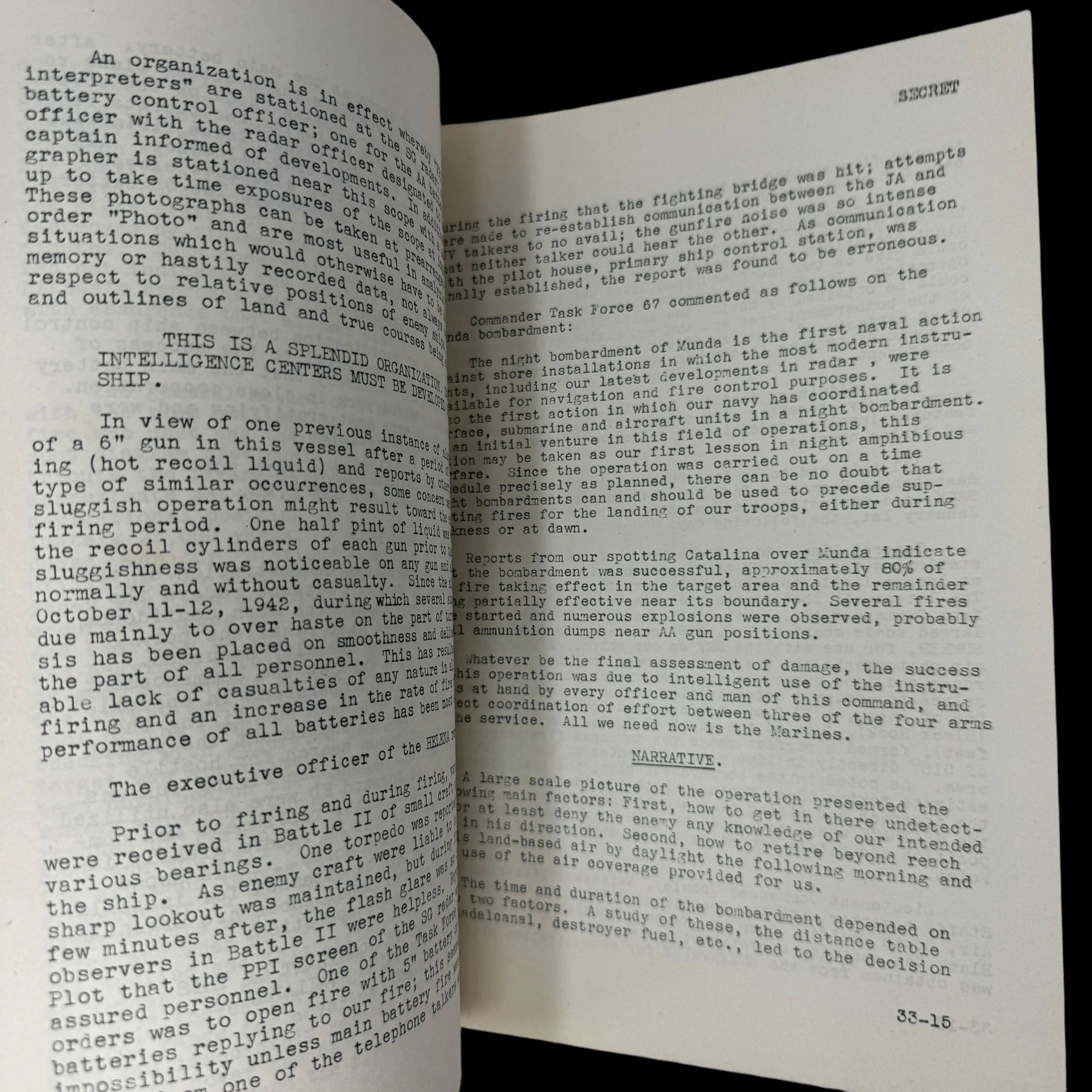
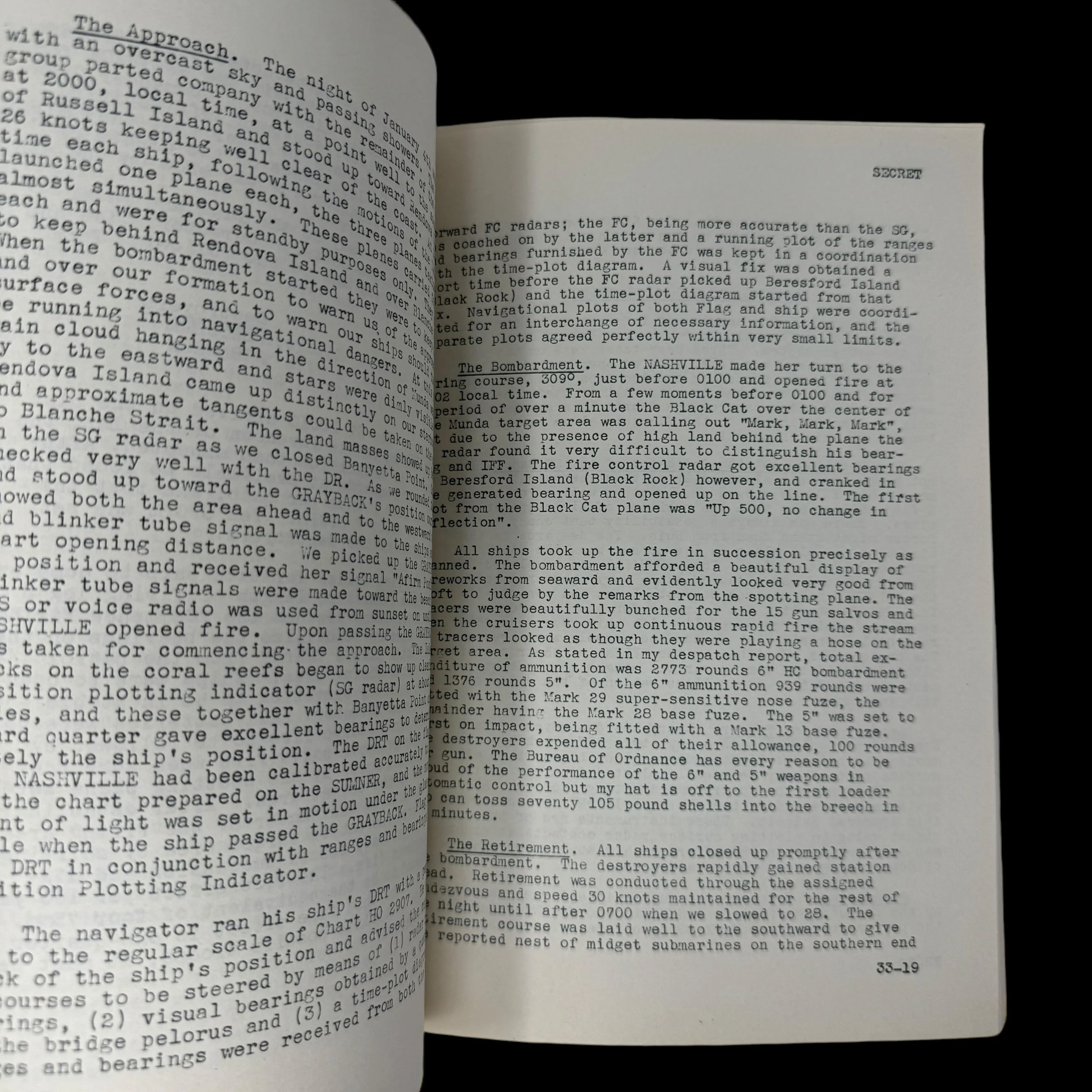
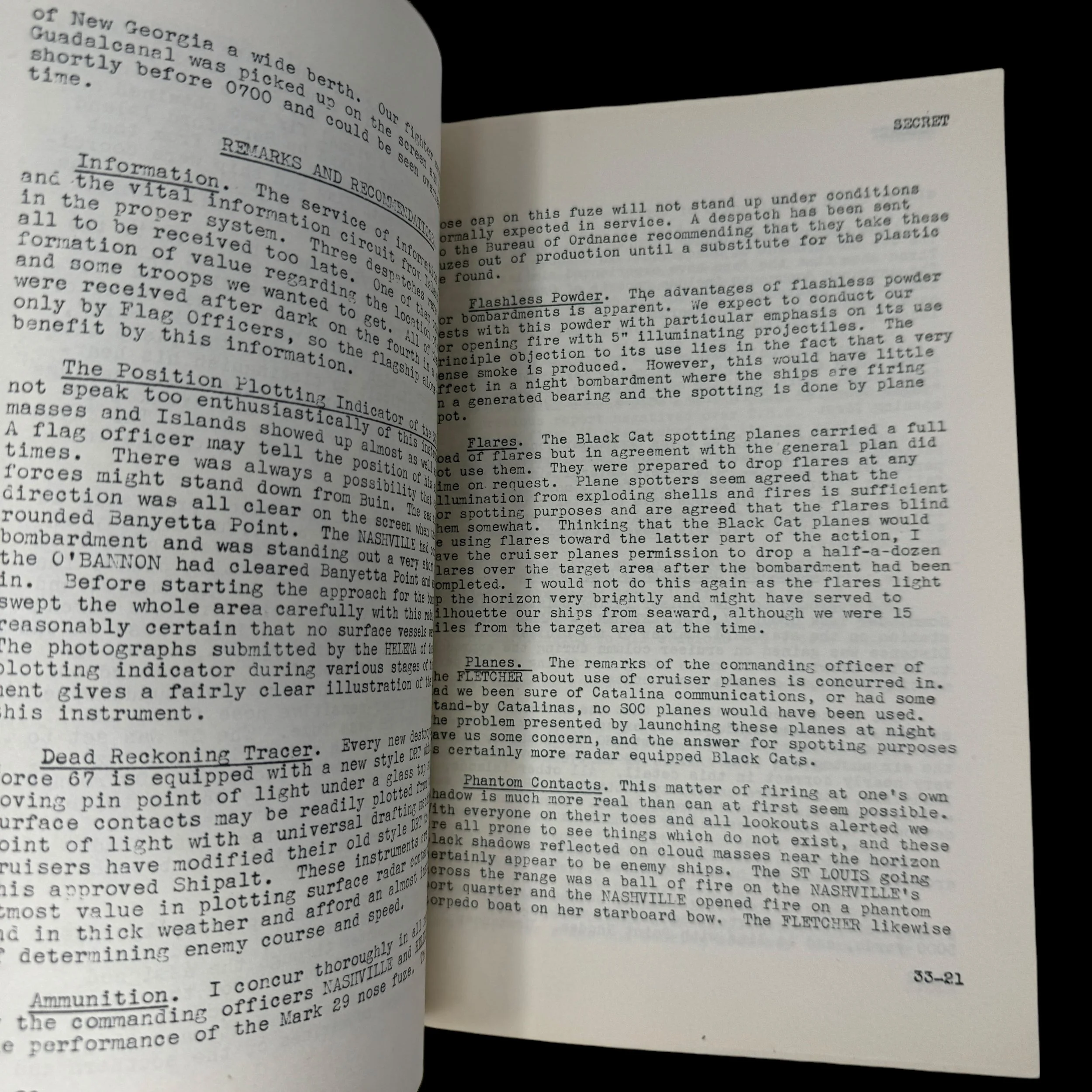


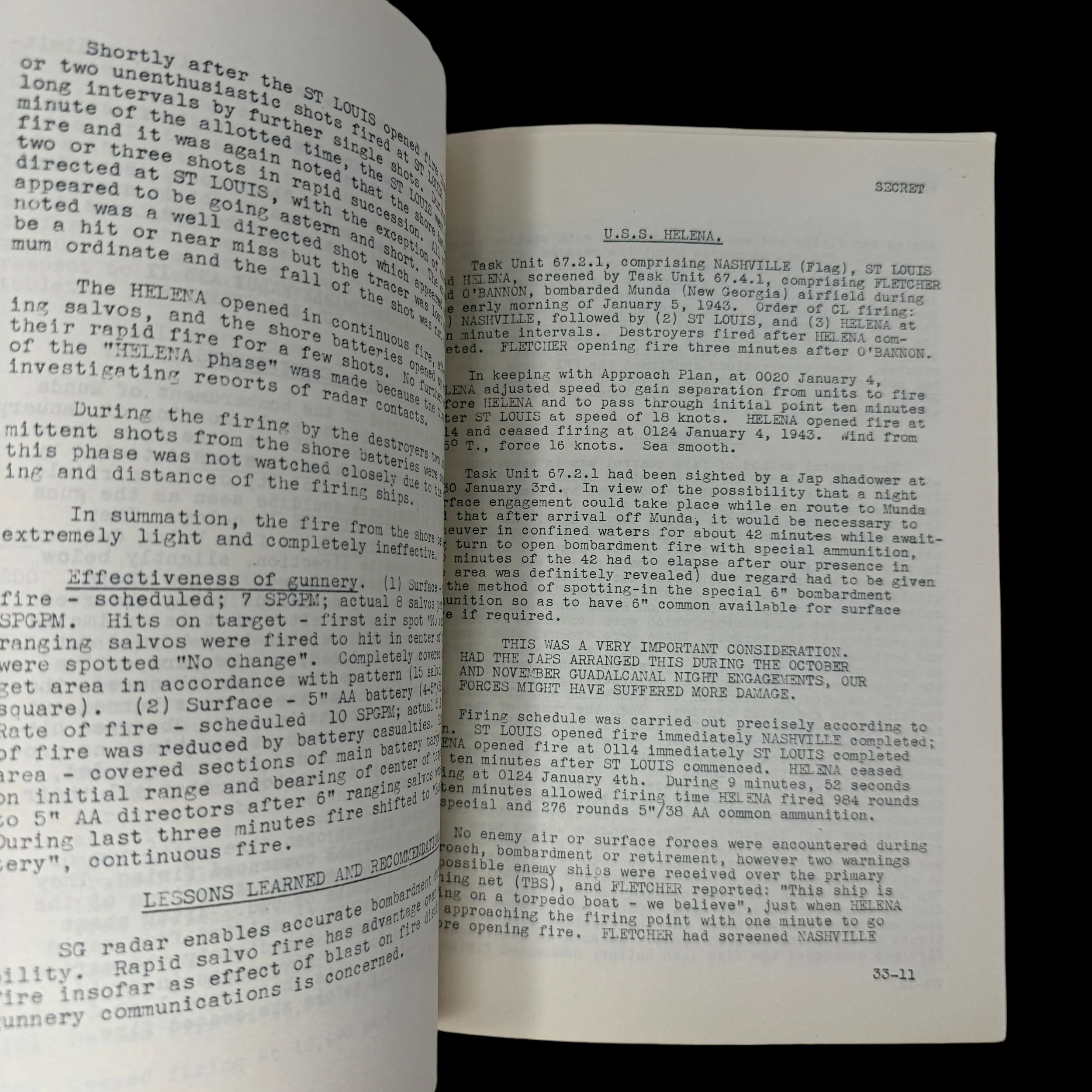

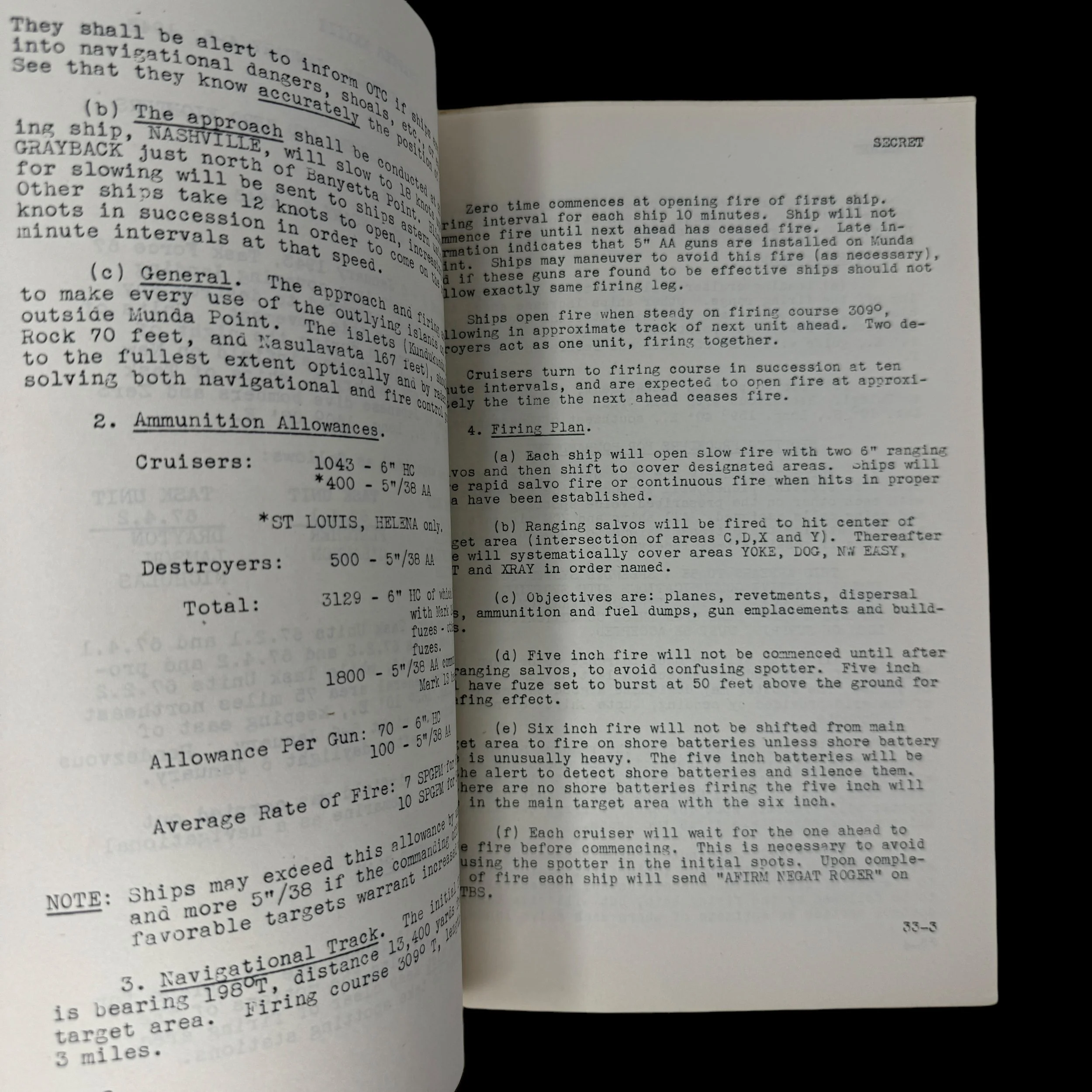
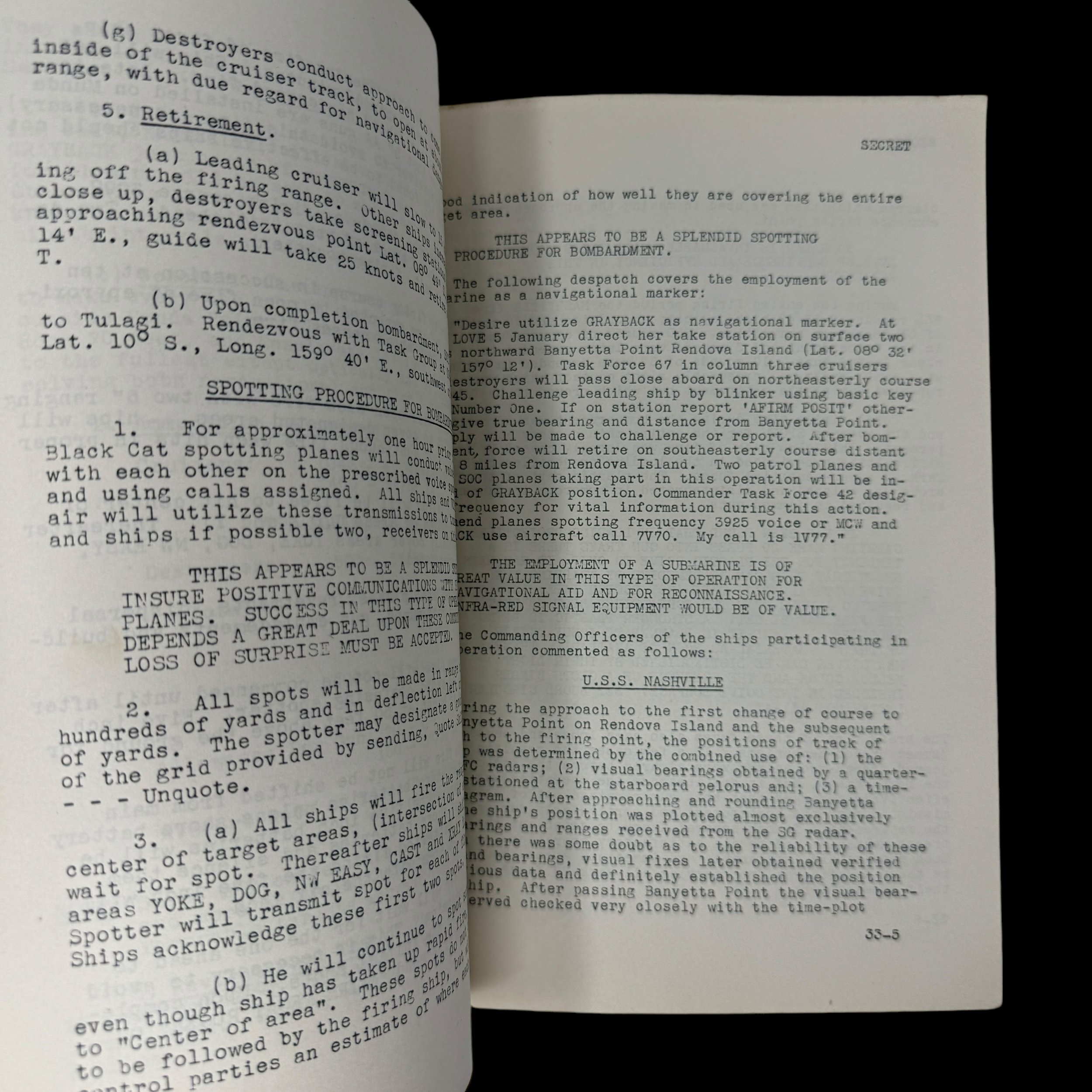

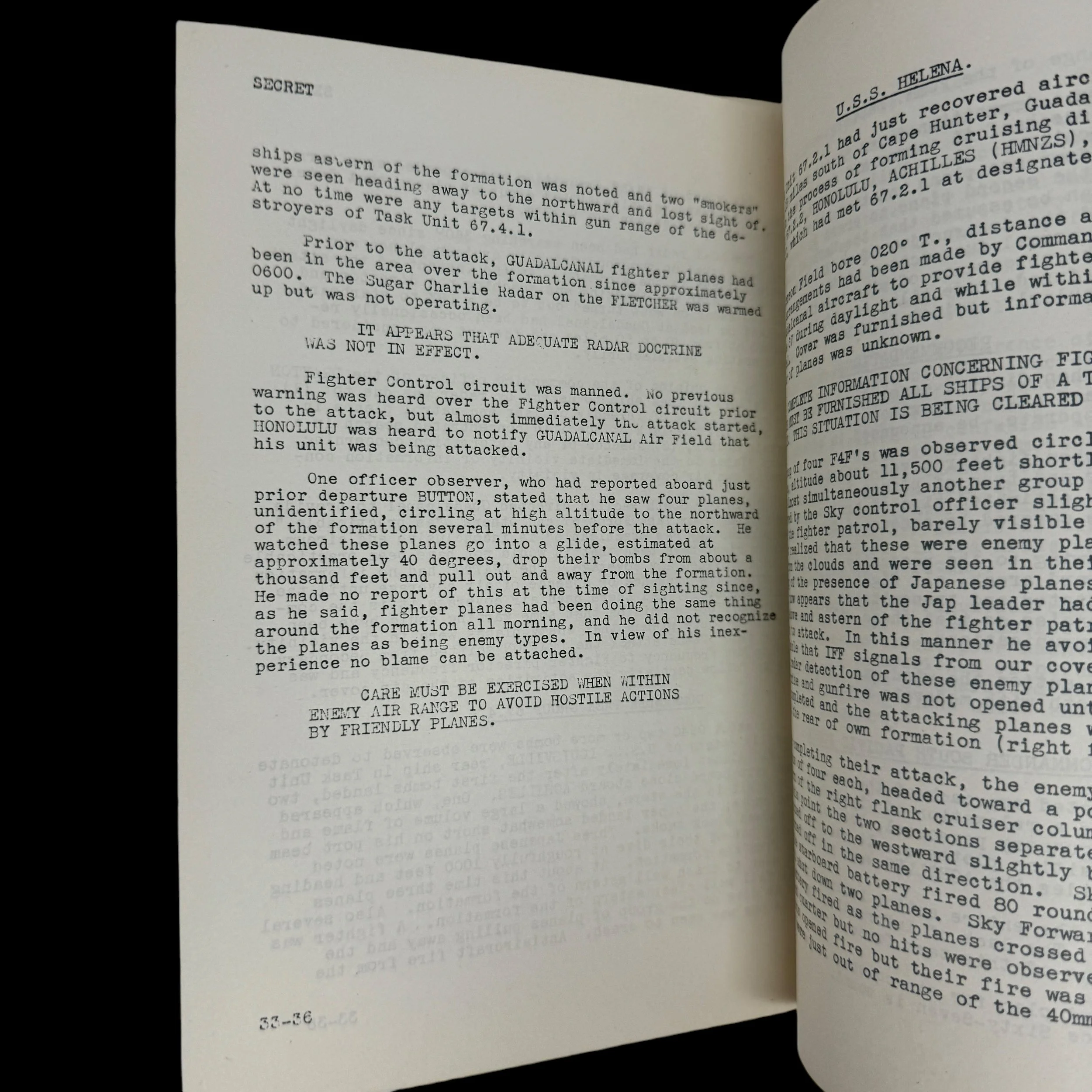
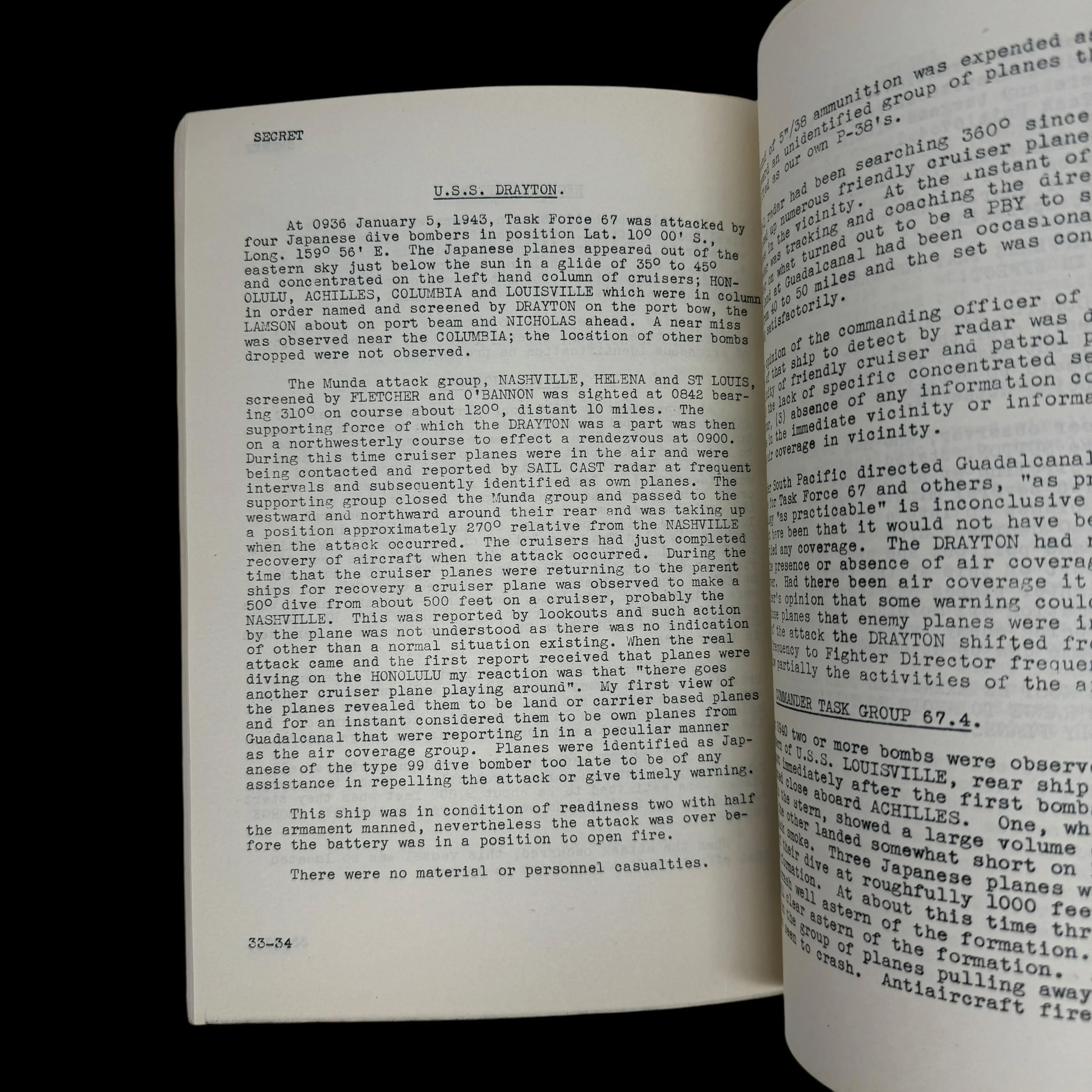
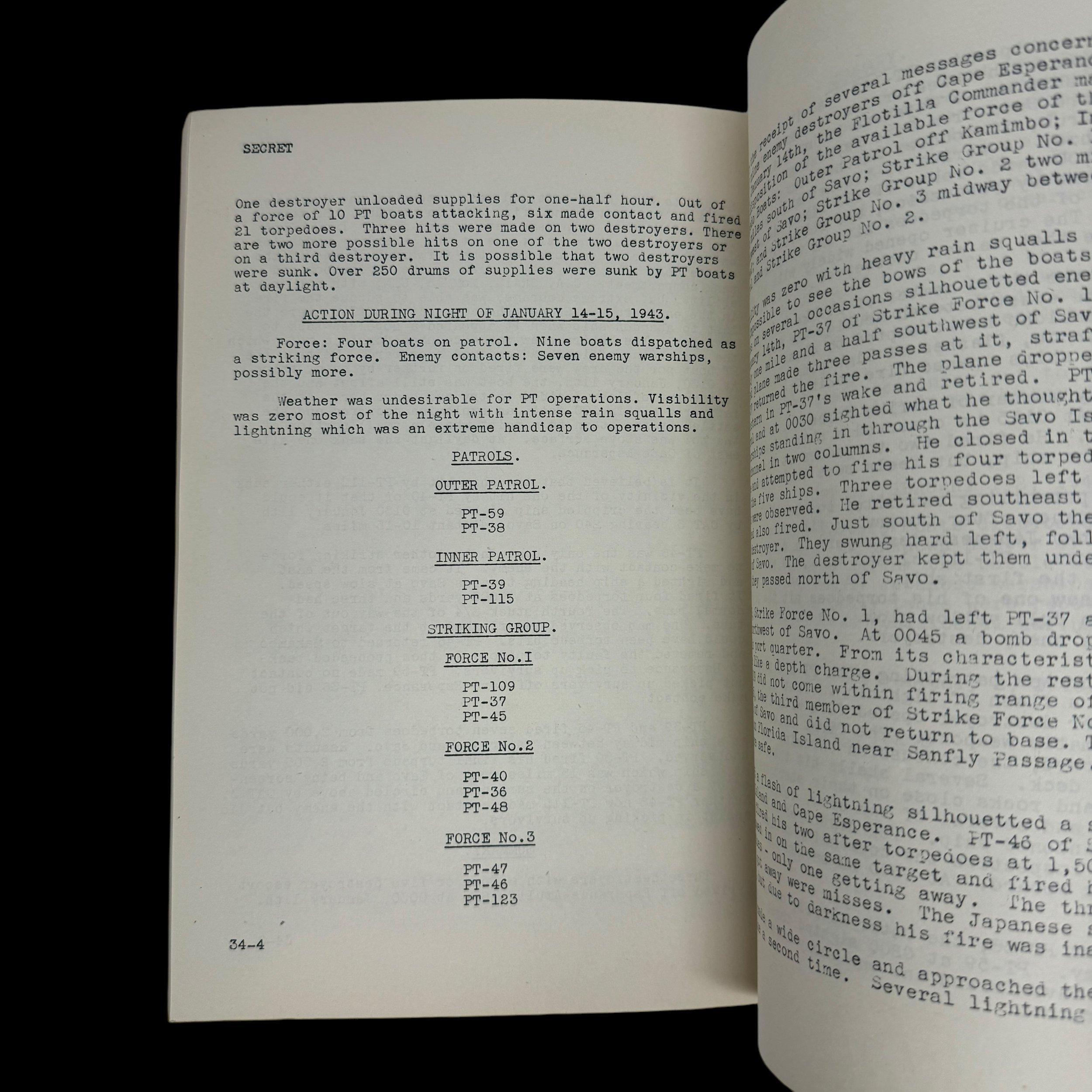
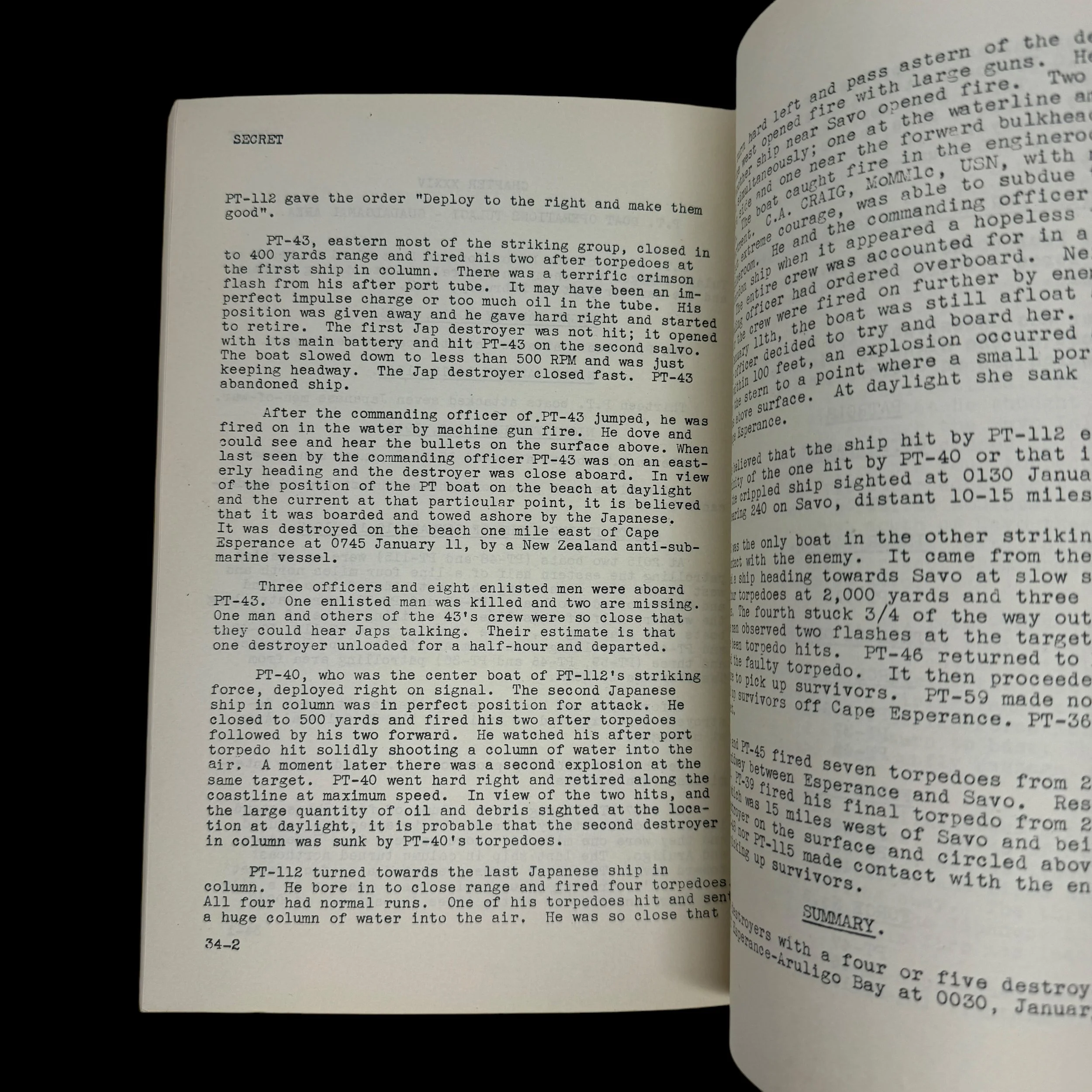
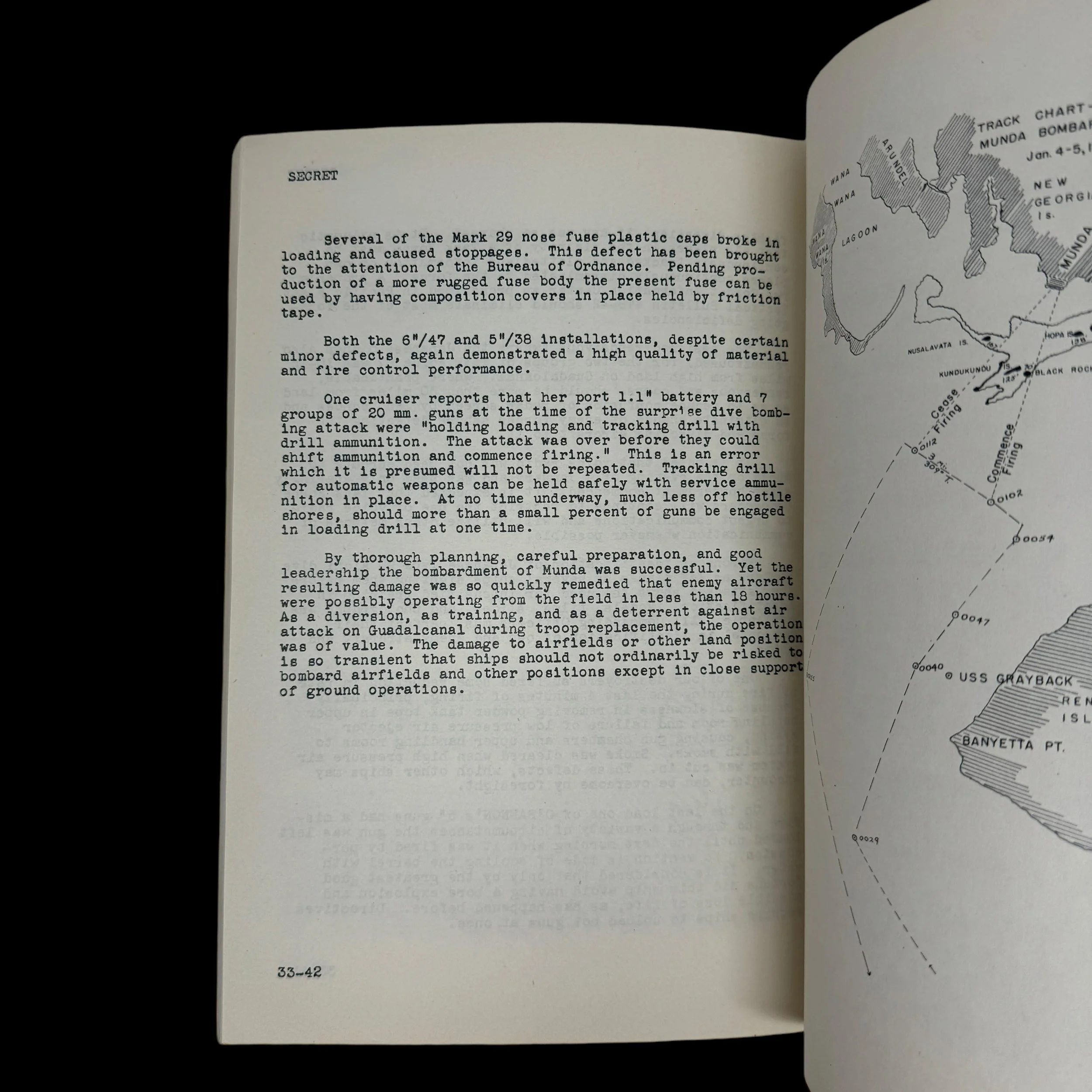
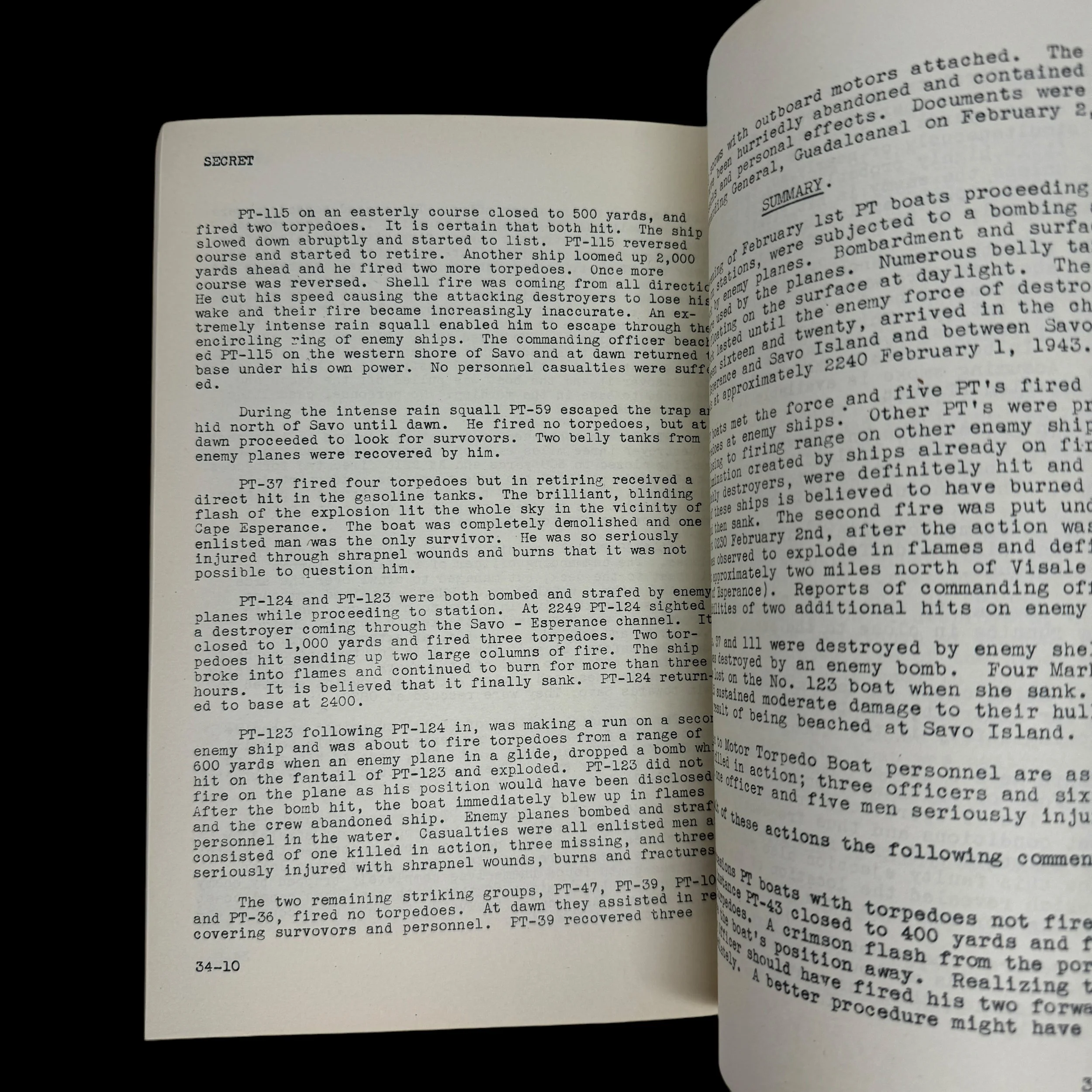
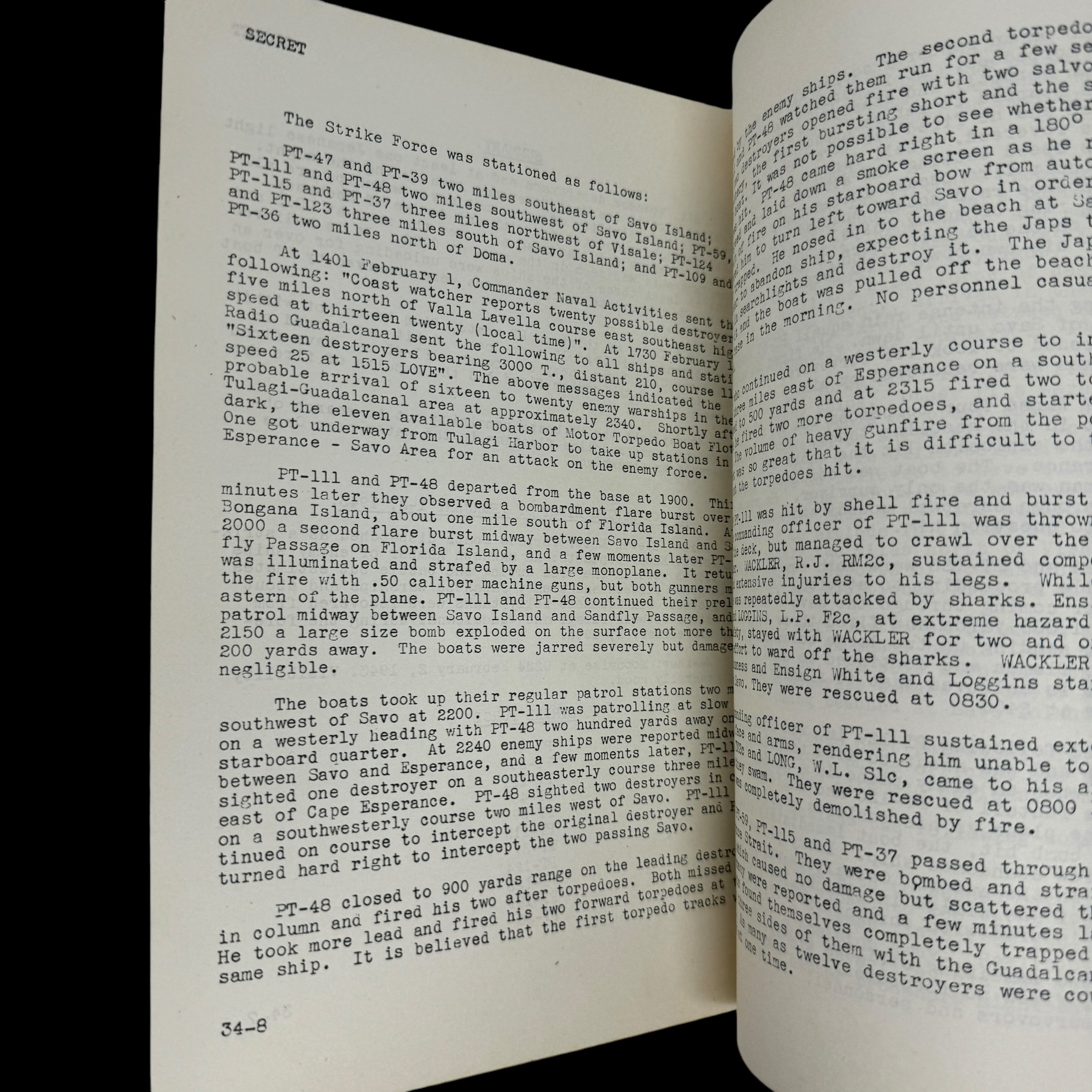
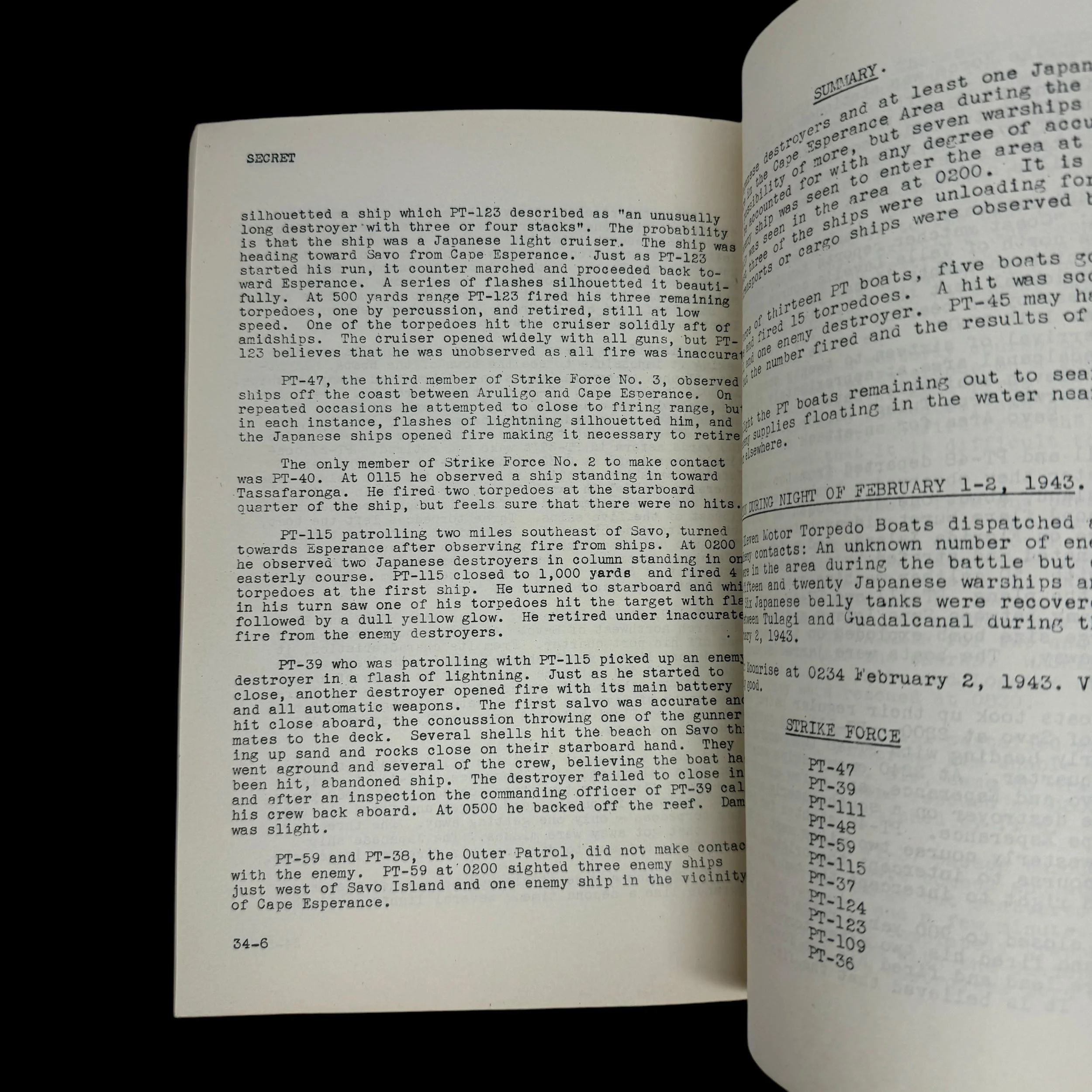
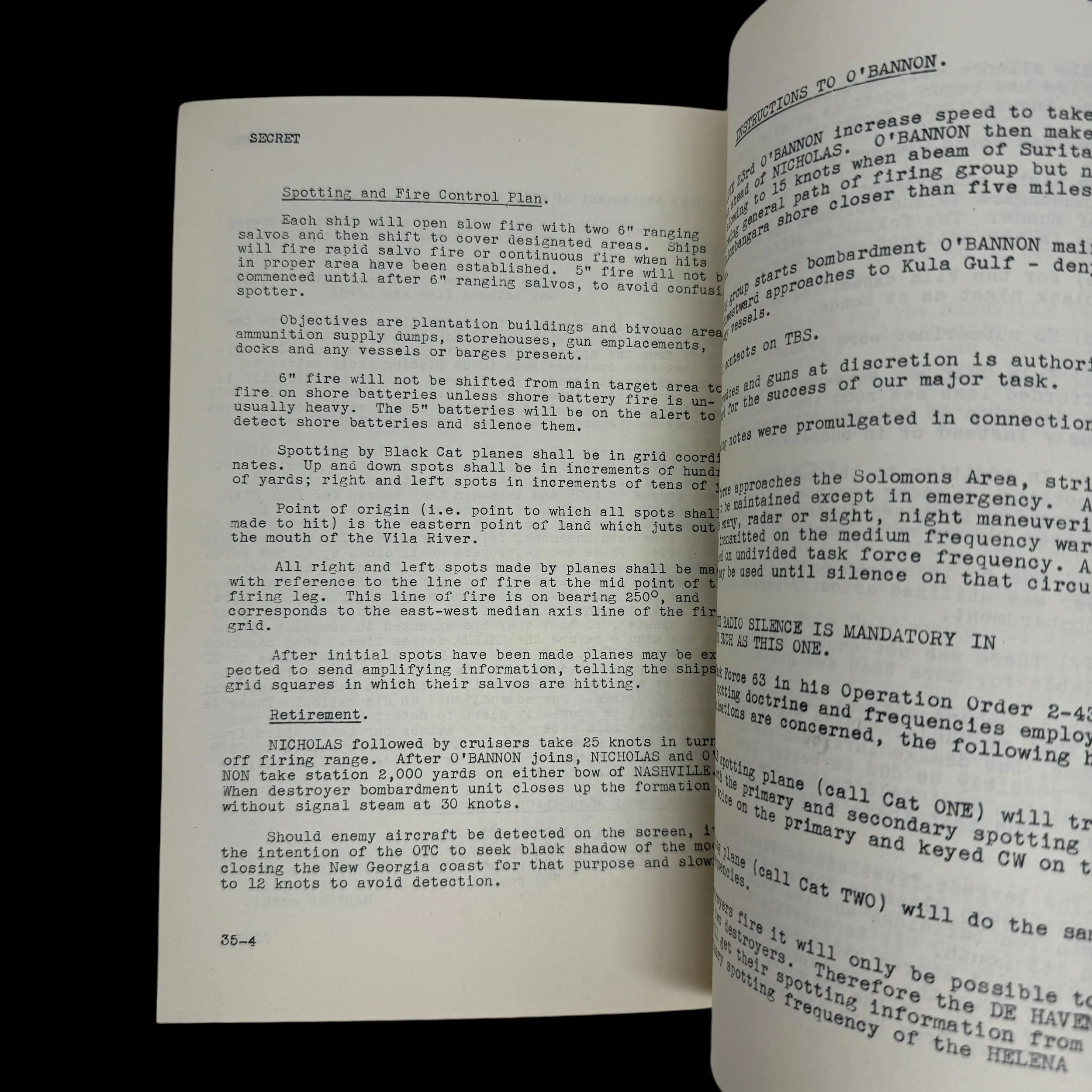
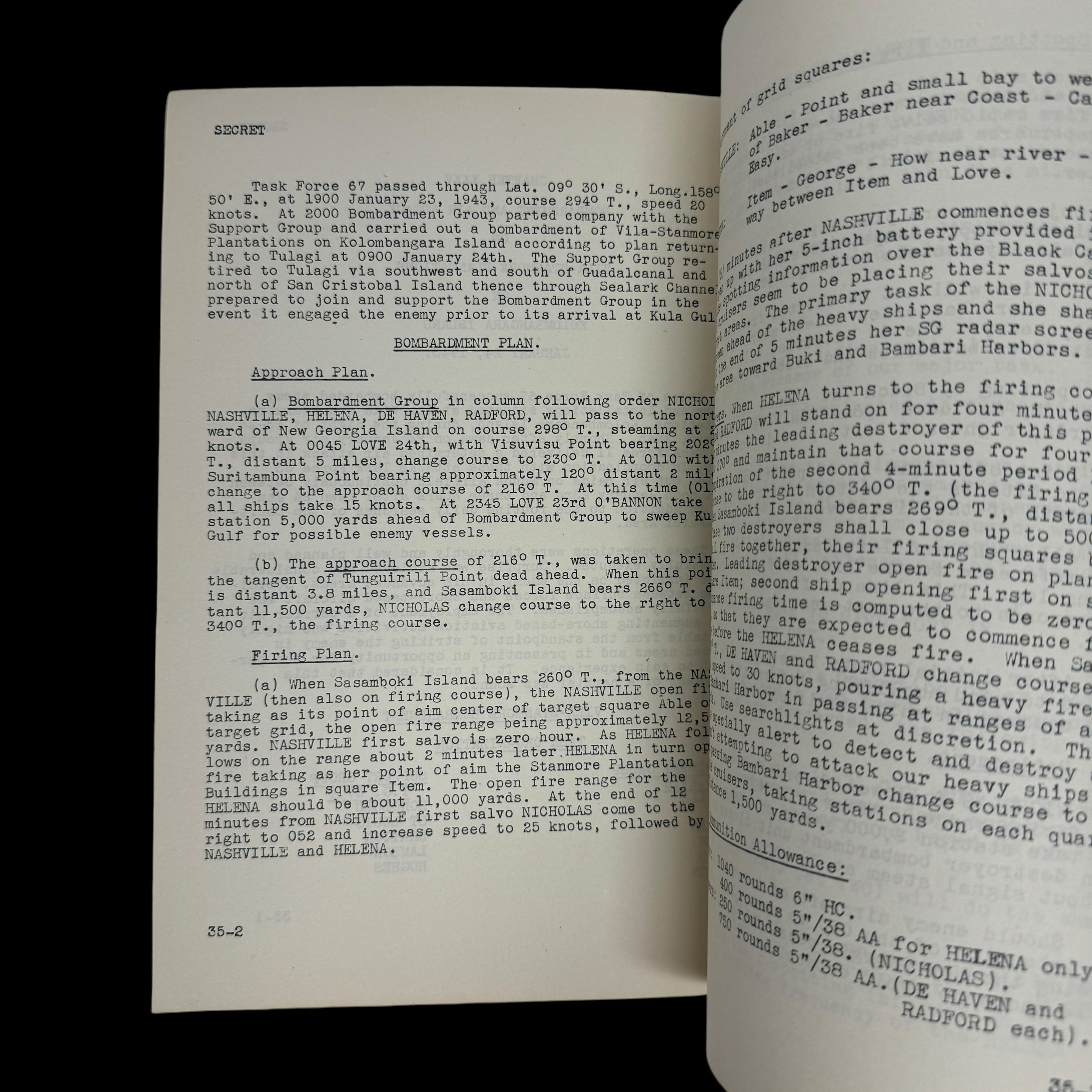
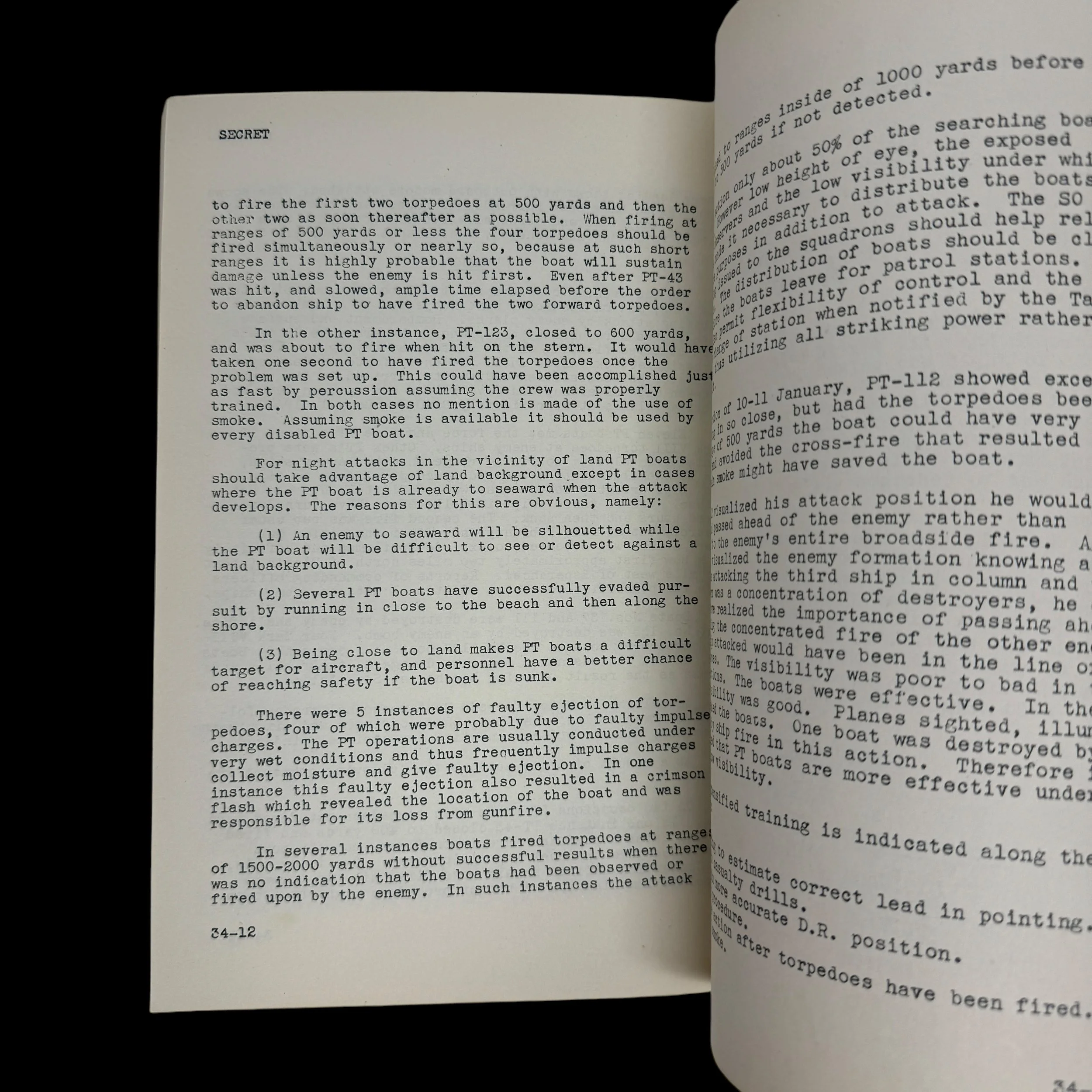
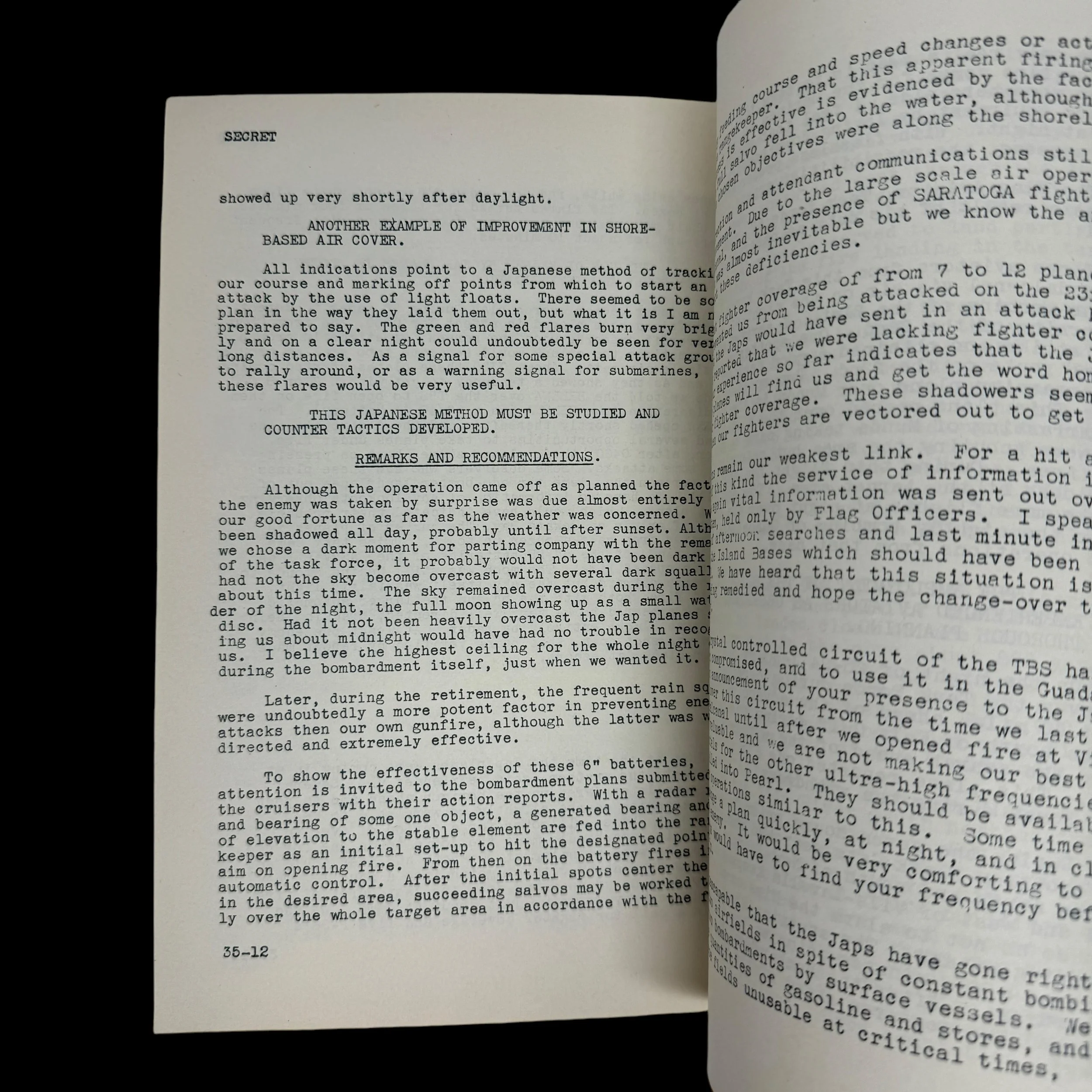



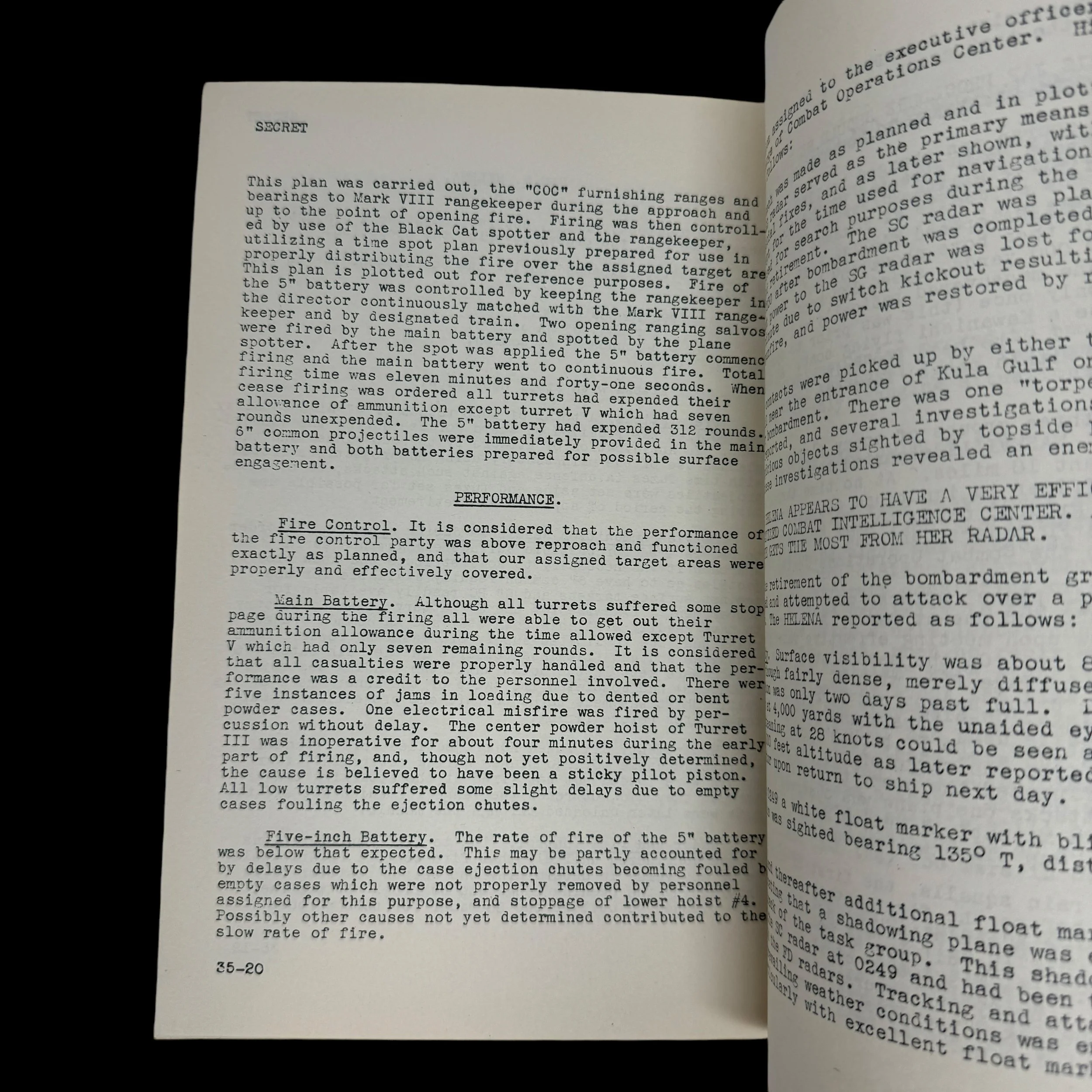


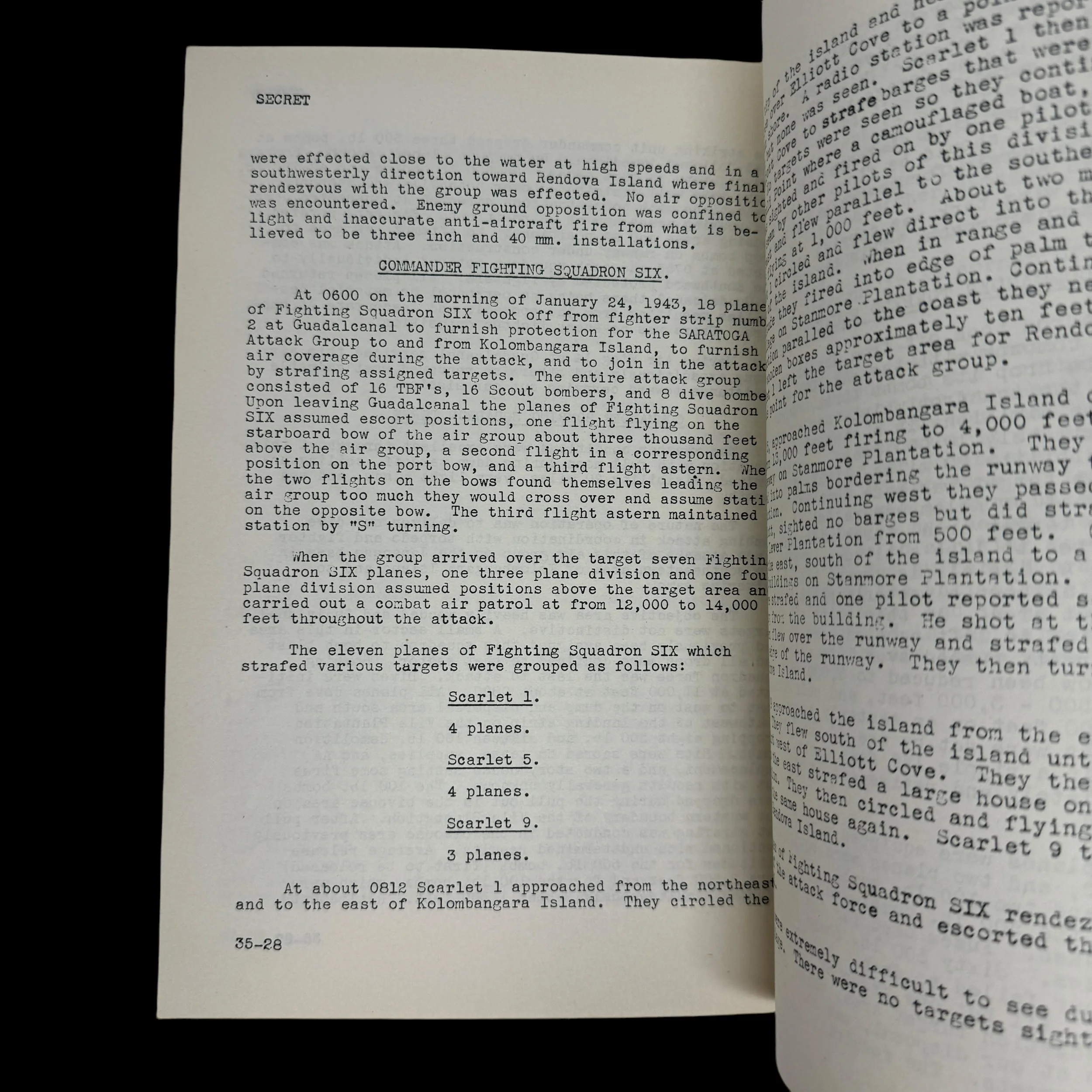
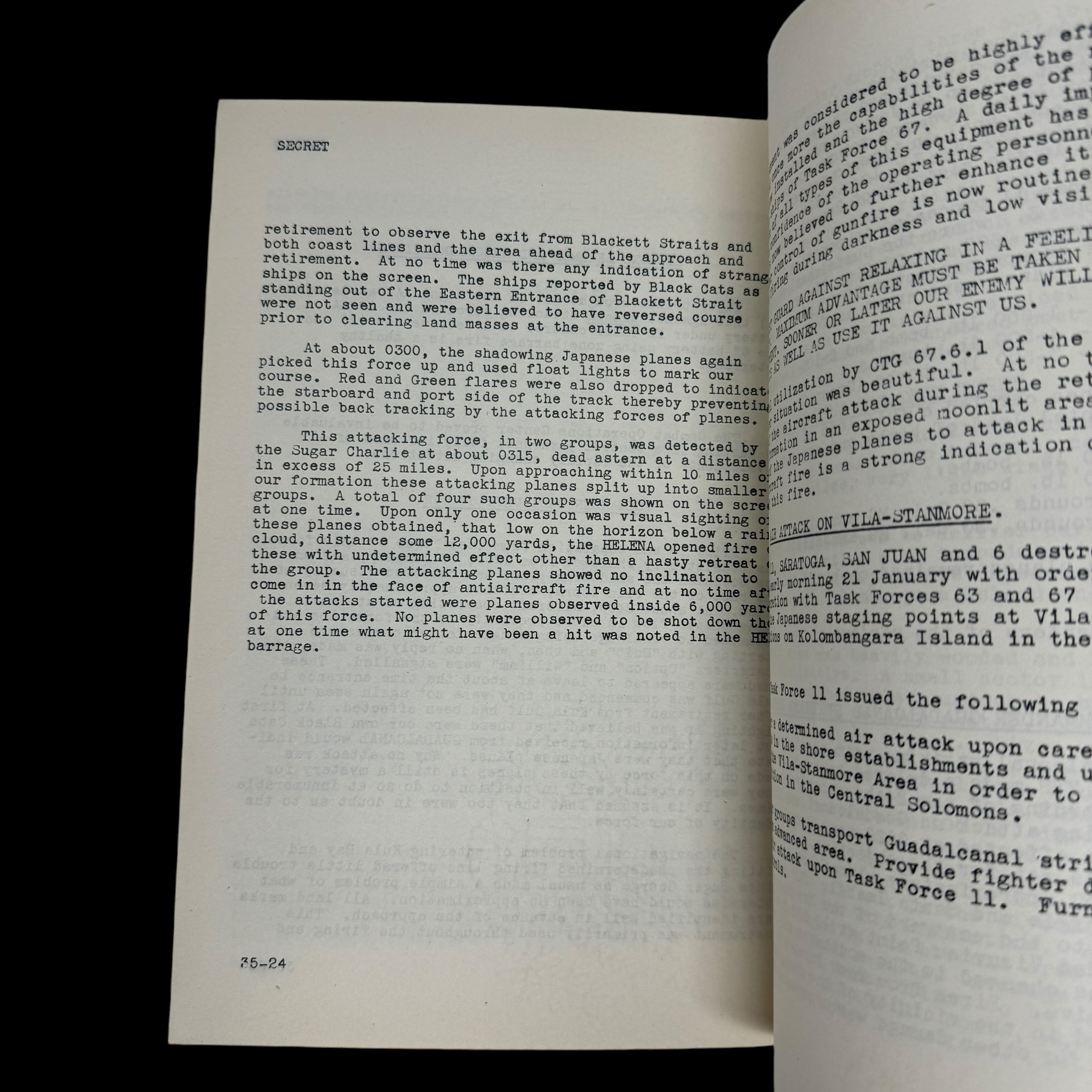

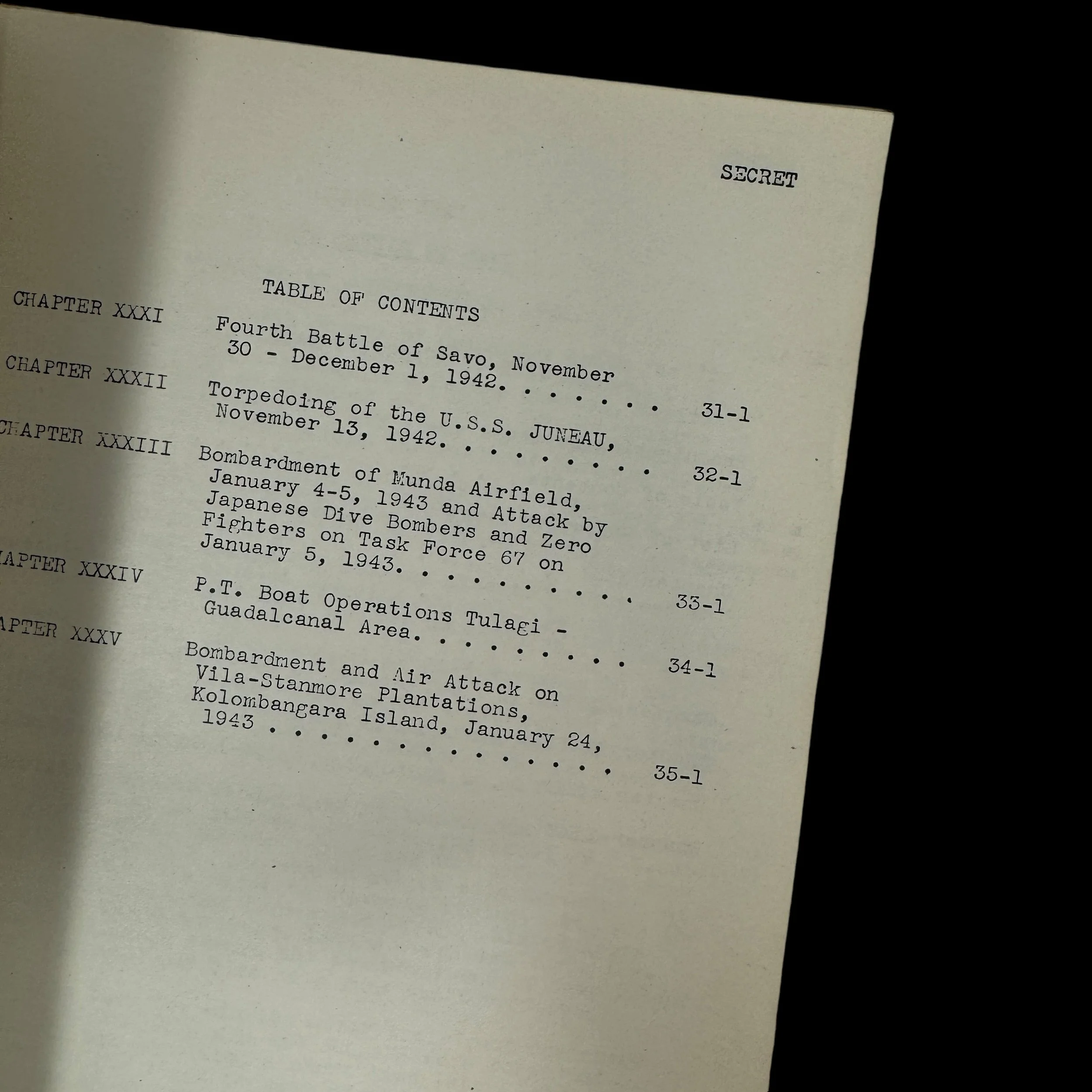
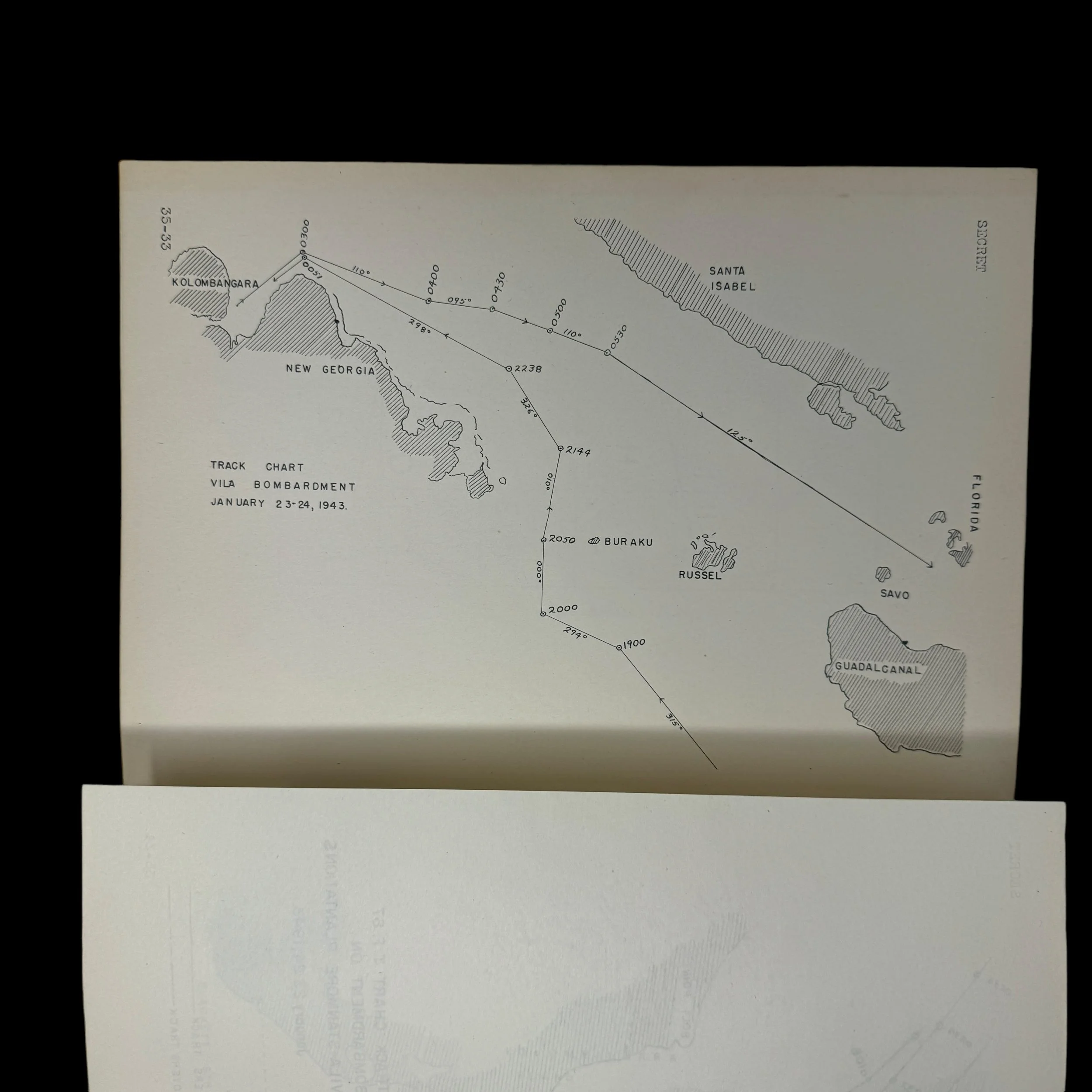
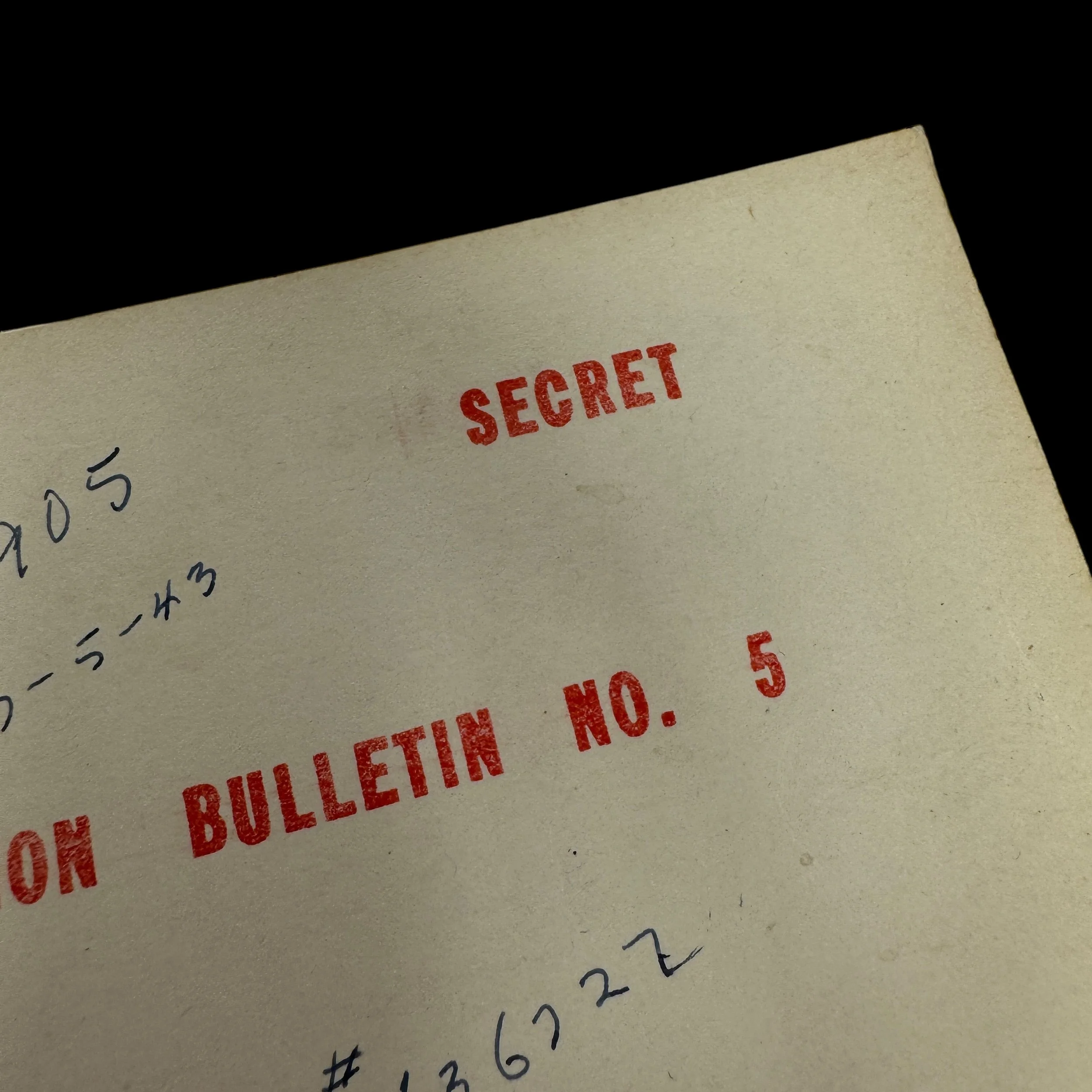
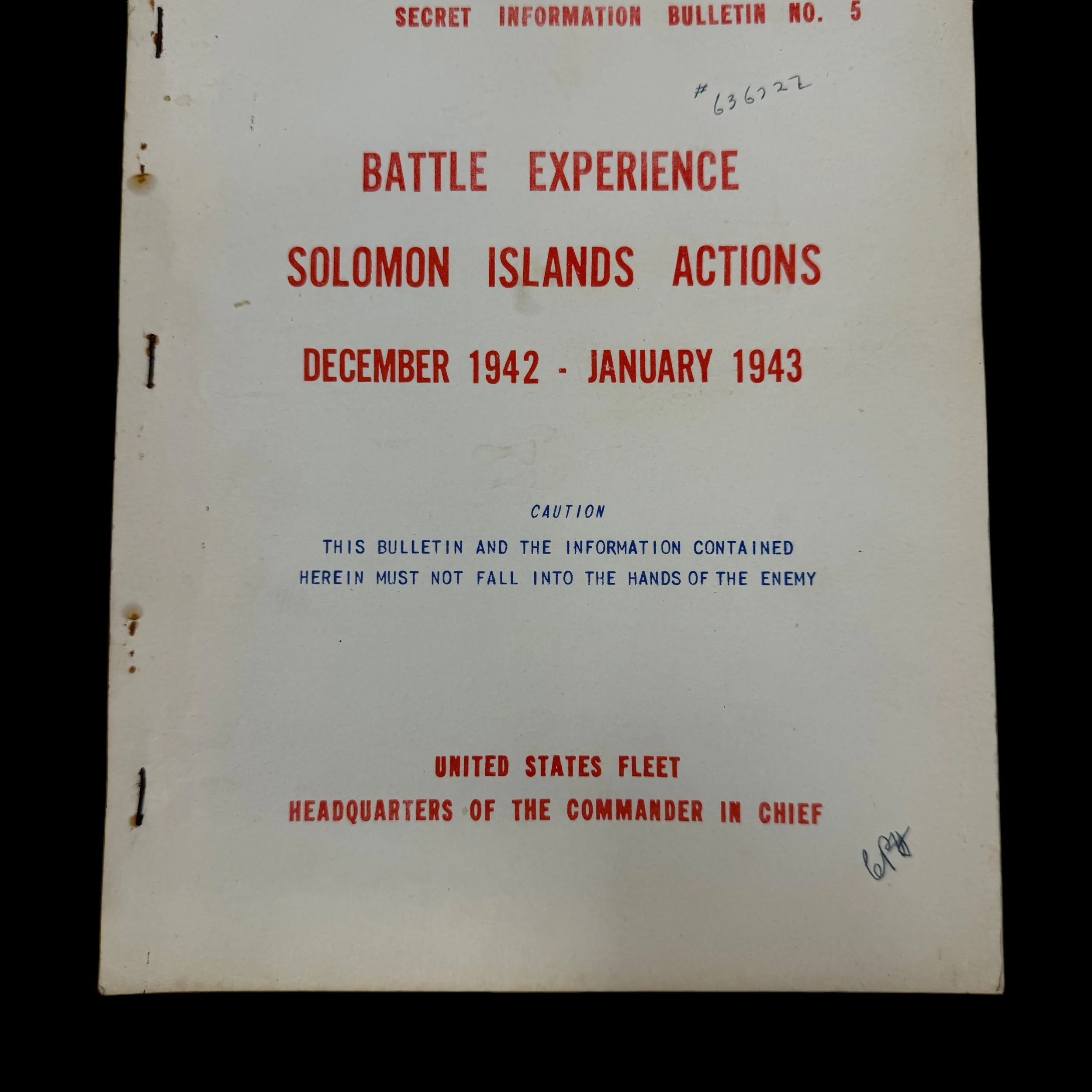
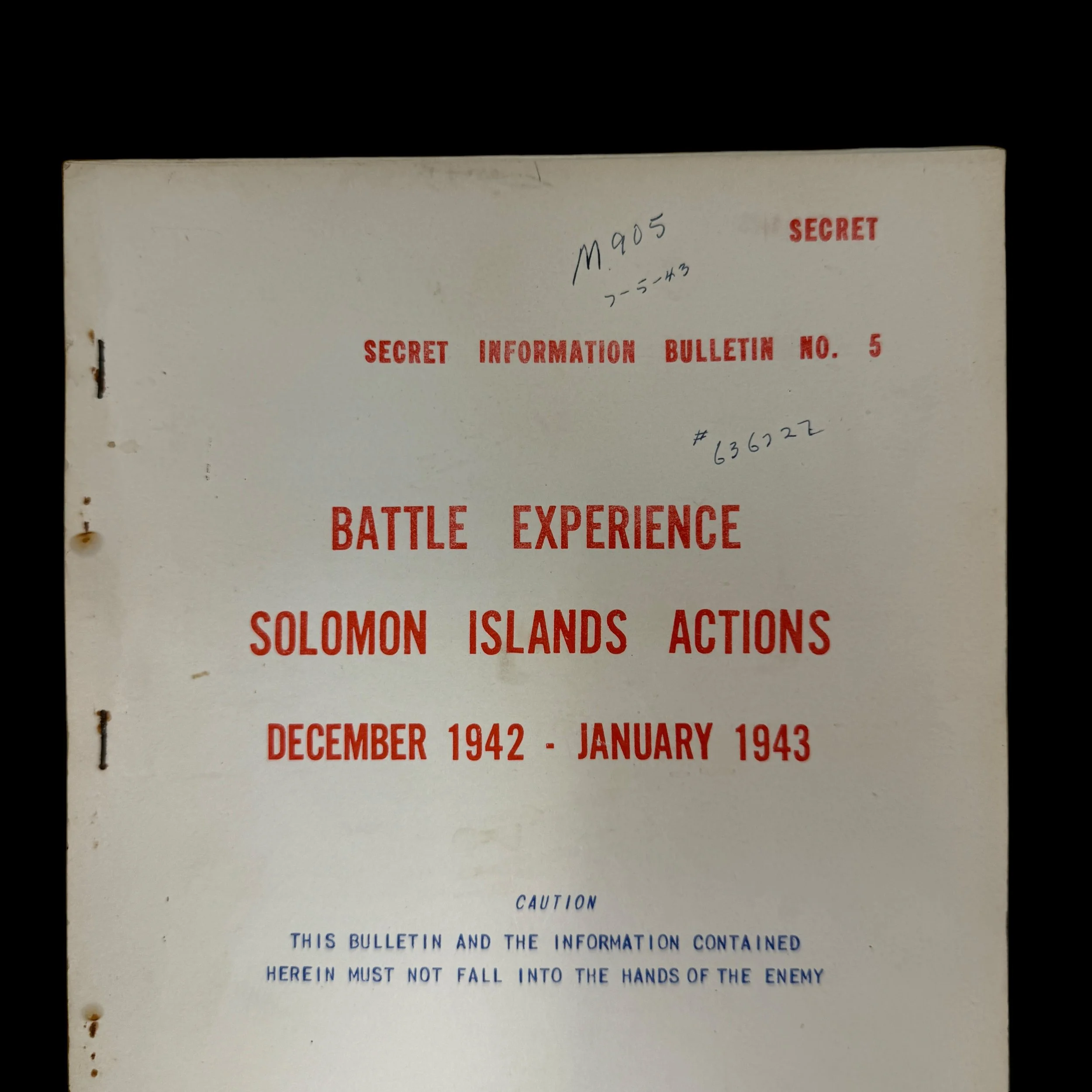
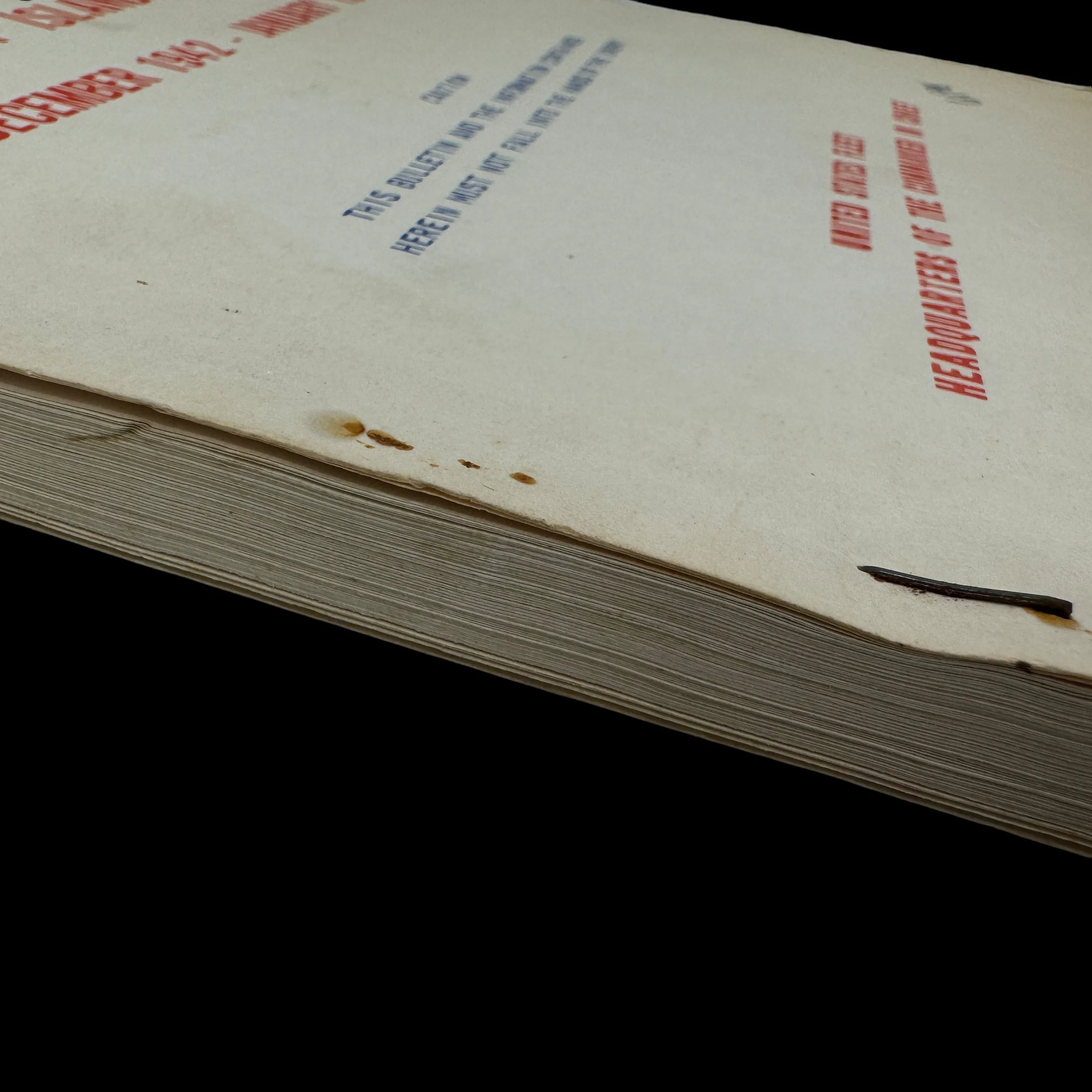
EXTREMELY RARE! WWII SECRET 1942 Solomon Islands Headquarters of the Commander in Chief Military Intelligence Report
Comes with a hand-signed C.O.A.
*This "SECRET" Solomon Islands military intelligence report references the Fourth Battle of Savo Island resulted in heavy fighting, securing U.S. supply lines to Guadalcanal. A tragic loss occurred with the torpedoing of the USS Juneau, killing nearly all aboard, including the five Sullivan brothers. The Allies bombarded Munda Airfield to weaken Japanese air operations, while Task Force 67 faced relentless attacks from Japanese dive bombers and Zero fighters. Additionally, U.S. PT boats stationed around Tulagi conducted successful hit-and-run raids, disrupting Japanese supply lines. These engagements were crucial in weakening Japanese control and solidifying Allied dominance in the Pacific.
This extraordinarily rare, museum-grade World War II artifact is an original "SECRET" marked "Battle Experience - Informational Bulletin," meticulously produced by the United States Fleet under the Headquarters of the Commander in Chief. During WWII, the operations and strategic planning of the U.S. Navy were directed by two prominent commanders: Admiral Chester W. Nimitz, Commander in Chief of the United States Pacific Fleet (CINCPAC), and Admiral Ernest J. King, Commander in Chief of the United States Fleet (CINCUS). Their combined leadership played a pivotal role in the Allied victory.
This highly classified and intricately detailed bulletin, issued by the Headquarters of the Commander in Chief, contains secret military maps, intelligence reports, tactical movements, and a unique compilation of "battle experiences." These experiences were drawn from war diaries and battle reports submitted by various commanders and ships engaged in key operations. The bulletin was printed in extremely limited quantities, strictly for the eyes of high-ranking military officials, including Officers and Generals.
The rarity of this document is underscored by the directive on its first page, which states: "Information must not fall into enemy hands - when no longer required they shall be destroyed by burning. No report of destruction need be submitted." As a result, only a handful of these original "SECRET" "Battle Experience - Informational Bulletins" are believed to still exist.
This particular "SECRET INFORMATION BULLETIN NO. 6" is a remarkable example, titled "Battle Experience - Solomon Islands Action December 1942 - January 1943" It offers an unparalleled glimpse into the strategic operations and experiences of the United States Navy during some of the most crucial campaigns of the Pacific Theater.
The WWII Battle Experience in the Solomon Islands: December 1942 to January 1943
The Solomon Islands campaign during World War II was a pivotal conflict that spanned from 1942 to 1945, marking a turning point in the Pacific Theater. From December 1942 to January 1943, fierce naval and air battles took place as the Allies sought to solidify their position after securing Guadalcanal. Among these engagements, the Fourth Battle of Savo Island, the torpedoing of the USS Juneau, the bombardment of Munda Airfield, attacks by Japanese dive bombers and Zero fighters on Task Force 67, and the PT boat operations around Tulagi showcased the intensity of the conflict and the strategic importance of the region.
The Fourth Battle of Savo Island
On December 30, 1942, the Fourth Battle of Savo Island erupted as part of the ongoing struggle for control of the Solomon Islands. This was the last of four major naval battles in the waters around Savo Island, marking the conclusion of a series of brutal confrontations between the U.S. Navy and the Imperial Japanese Navy. The battle involved U.S. Task Force 67 under Rear Admiral Carleton H. Wright, which included cruisers, destroyers, and transports trying to reinforce Guadalcanal.
Japanese forces, aiming to disrupt U.S. operations and re-establish control over the waters surrounding Guadalcanal, launched a nocturnal torpedo attack. The chaotic night battle resulted in heavy damage to both sides, but the U.S. managed to protect their supply lines to Guadalcanal. This battle solidified Allied dominance in the Solomon Sea, marking the beginning of Japan’s inability to hold the region.
The Torpedoing and Sinking of the USS Juneau
During this same period, the USS Juneau, a light cruiser, became one of the most tragic symbols of sacrifice. On November 13, 1942, during the Naval Battle of Guadalcanal, the Juneau was struck by a Japanese torpedo, leading to its rapid sinking. Of the crew of 700, only 10 men survived. Among the casualties were the five Sullivan brothers, whose death spurred national mourning and changes to U.S. military family member service policies.
The Juneau had been part of a task force sent to protect the Marines on Guadalcanal. After suffering damage from a previous engagement, the cruiser was retreating to safety when a Japanese submarine launched its fatal strike. The ship’s destruction exemplified the intense and often unpredictable dangers of naval warfare in the Solomons. Its loss deeply affected the morale of the U.S. forces and the American public.
Bombardment of Munda Airfield
The Allies understood the importance of denying the Japanese the ability to launch air raids from their bases in the Solomons, and one of the most strategically critical targets was the Munda Airfield on New Georgia Island. On December 31, 1942, U.S. Navy ships bombarded the airfield, aiming to degrade its capacity to support Japanese air operations.
The bombardment was part of a broader campaign to weaken Japanese air power in the region and to pave the way for further Allied advances. Although the Japanese continued to use the airfield for several more months, the constant naval bombardments and air raids slowly eroded its operational effectiveness. The attack on Munda demonstrated the importance of air superiority in the Pacific Theater, where control of airfields often dictated the success of ground and naval operations.
Japanese Dive Bomber and Zero Fighter Attacks on Task Force 67
The Japanese forces responded to the U.S. bombardment of Munda with fierce aerial attacks. Task Force 67, comprising a mix of cruisers and destroyers, became the primary target of Japanese dive bombers and Zero fighters during late December 1942 and into January 1943. These aerial assaults were relentless, with Japanese pilots attempting to break through the U.S. anti-aircraft defenses to inflict damage on the fleet.
Despite the intensity of these attacks, Task Force 67 held its ground. U.S. ships employed effective anti-aircraft fire and evasive maneuvers, mitigating the damage from the relentless Japanese attacks. These encounters highlighted the critical role of naval and air coordination, with the U.S. Navy learning valuable lessons on the importance of integrating their air cover with surface fleet operations. The tenacity of Japanese aviators, however, continued to pose a significant challenge.
PT Boat Operations Around Tulagi
In addition to the large-scale naval and air battles, smaller-scale operations played a crucial role in the Solomon Islands campaign. PT boats (patrol torpedo boats) stationed around Tulagi Island were instrumental in conducting hit-and-run attacks against Japanese supply ships, troop transports, and even larger warships. These small, fast, and agile boats became a thorn in the side of the Japanese navy, harassing their movements and cutting off supply lines to Guadalcanal.
Operating primarily at night to take advantage of their stealth, the PT boats proved effective in disrupting Japanese operations. In January 1943, these boats were involved in several daring raids, often operating in the shallow waters around Tulagi and Guadalcanal. PT boats, although lightly armed and vulnerable, were a symbol of the resourcefulness and determination of U.S. forces during the campaign. Their operations, though often overshadowed by larger engagements, were crucial in maintaining pressure on Japanese supply lines and supporting the overall Allied strategy.
The period from December 1942 to January 1943 in the Solomon Islands saw some of the most intense and pivotal battles of the Pacific War. From the Fourth Battle of Savo Island to the sinking of the USS Juneau, the bombardment of Munda Airfield, the aerial onslaughts by Japanese dive bombers and Zero fighters, and the daring PT boat operations around Tulagi, these engagements illustrated the brutal and multifaceted nature of warfare in the Solomon Islands.
The Allied forces, though often stretched to their limits, managed to hold their ground and gradually turn the tide against Japan. The battles in the Solomons not only contributed to the eventual Allied victory in the Pacific but also provided valuable lessons in naval, air, and ground coordination that would shape the remainder of the war. These experiences forged a legacy of bravery, sacrifice, and strategic innovation that defined the Pacific Theater.